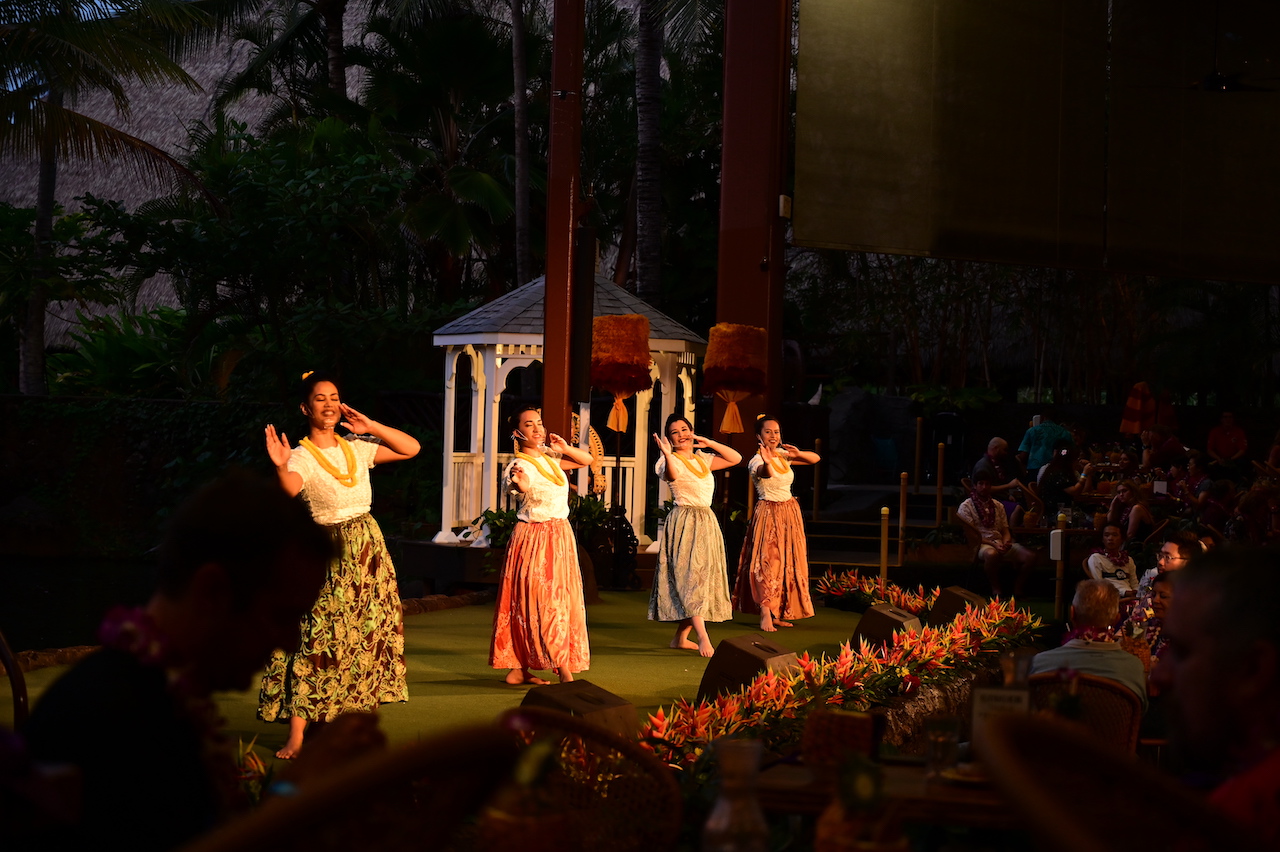
Interested in visiting Polynesian Cultural Center (PCC) on Oahu, but want to know more before making the decision?
Then you are reading the right article.
Because in this article, I will share my real-life experience at the PCC, and hopefully answer your questions such as “What is PCC in the first place?” and “What can I expect from PCC?”.
* Parts of this article were written before Covid-19 and may differ from the current situation.
Please check the official website for the current status of the center.
- What is Polynesian Cultural Center?
- Now Let’s Go to the Polynesian Cultural Center
- Lunch Buffet
- The Villages
- Dinner at Ali’i Luau
- Night Show “HA: Breath of Life”
- Wrap-up
This post contains affiliate links. For more information, see my disclosures here.
What is Polynesian Cultural Center?
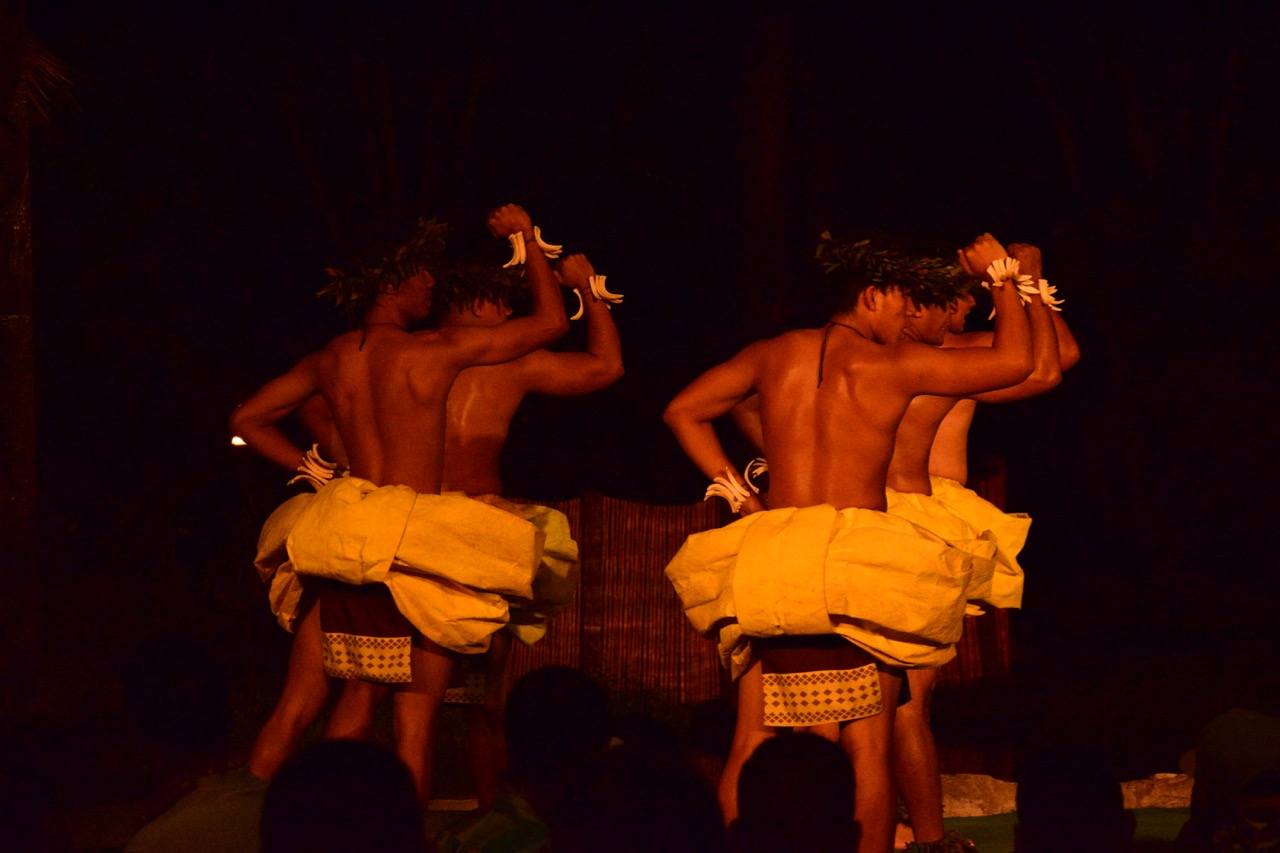
To give you some background, Polynesian Cultural Center (commonly known as PCC) is a theme park located on the northern North Shore of Oahu, Hawaii.
| Facility Name | Polynesian Cultural Center |
|---|---|
| Hours | 12:45 – 21:00 (Closed on Sundays and Wednesdays) |
| Address | 55-370 Kamehameha Hwy Laie, Hawaii 96762 |
| Phone | 1-800-367-7060 |
In the 40-acre site, the six islands of Polynesia, Samoa, Aotearoa (New Zealand), Fiji, Hawaii, Tahiti, and Tonga are each recreated as villages. They have a Polynesian buffet restaurant, a luau, and a spectacle night show that incorporates music and dance performances from all over Polynesia.
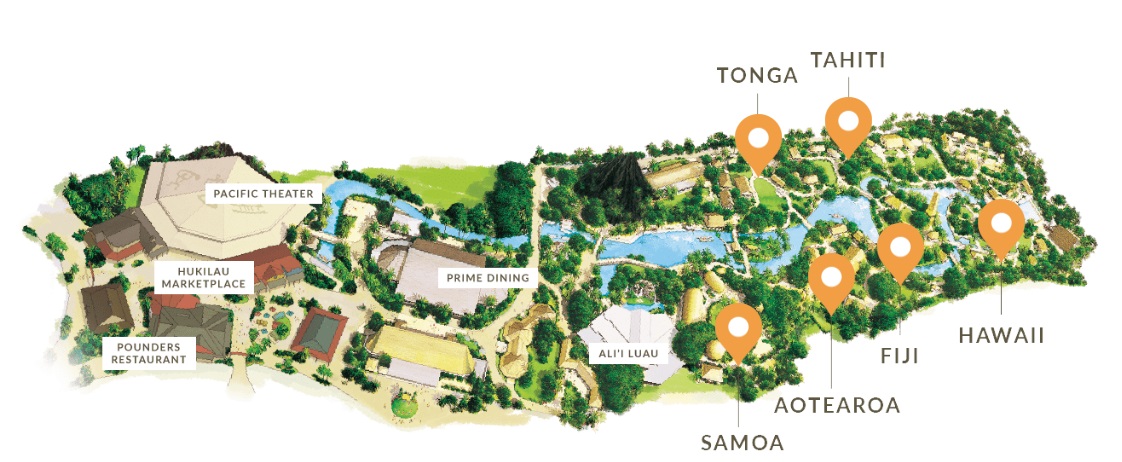
According to Hawaii State Government research, it is listed as one of Hawaii’s most popular paid attractions and has been named the “Best Attraction” by Honolulu Magazine readers in the Best of Honolulu 2015 and 2016.
So if I were to explain PCC in one sentence, it will be like “the most popular tourist attraction in Hawaii where you can experience the entire Polynesia through activities, food, and shows”.
Polynesian Cultural Center: Tickets
Polynesian Cultural Center offers packages as below. Please note that each package is different in terms of tour guide, dining, and seat level at the night show.
Although dinner is not included to the “Island of Polynesia” package, you can dine at the Hukilau Marketplace, which is adjacent to the PCC.
| Package | Tour Guide | Dining | Night Show Seating | Adult | Child (4-11) |
|---|---|---|---|---|---|
| Super Ambassador Luau | Personal Tour Guide | Ali’i Luau | Platinum | $242.95 | $194.36 |
| Ali’i Luau | Group Tour Guide | Ali’i Luau | Gold | $184.95 | $147.96 |
| Gateway Buffet | Self-Guided | Gateway Buffet | Silver | $139.95 | $111.96 |
| Islands of Polynesia & HA: Breath of Life | Self-Guided | Not Included | Bronze | $119.95 | $95.96 |
| Islands of Polynesia | Self-Guided | Not Included | N/A | $69.95 | $55.96 |
Polynesian Cultural Center: Hours
Polynesian Cultural Center is open from 12:30 to 21:00, and the restaurant inside PCC, Ali’i Luau and Gateway Buffet, open at 16:30.
Seating for the night show “HA: Breath of Life” starts at 19:00, and the actual show around 19:30.
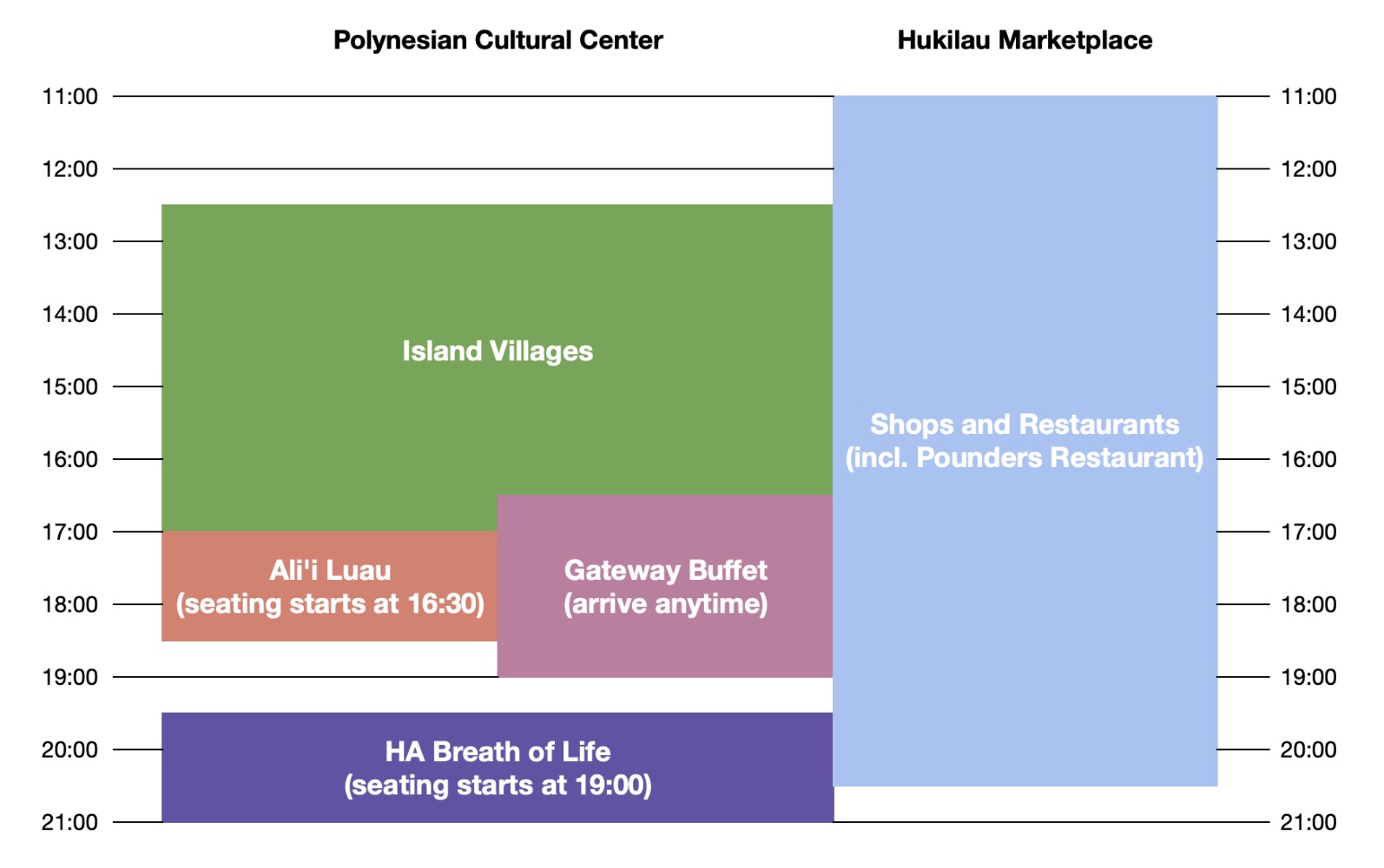
Meanwhile, shops and restaurants at Hukilau Marketplace which is right next to PCC are open from 11:00 to 20:30, so if you want to have lunch before PCC opens, Pounders Restaurant and other food trucks are available.
Now, let’s get started with the full day of having fun at the Polynesian Cultural Center.
10:25 Pick up at the hotel
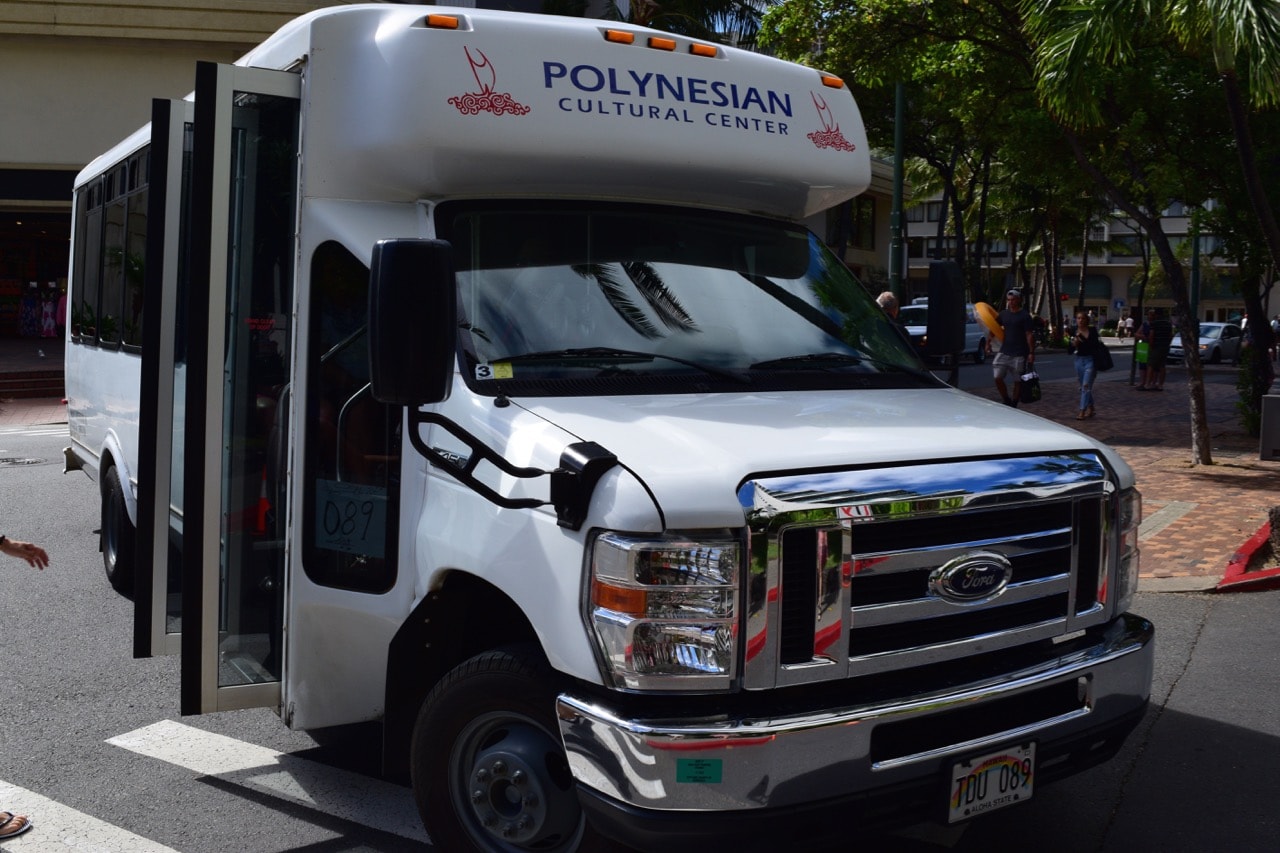
We added transportation in our package, so we were waiting in front of our hotel as specified in the confirmation email.
Soon, the 25-seater bus called “Mini Coach” came to pick us up.
Here is the tour package that I booked.
| Tour Package | Ambassador Luau Package |
|---|---|
| Transportation | Mini Coach |
| Tour Guide | None |
| Dinner | Ali’i Luau at Hale Aloha |
| Night Show | Ambassador Seat |
I customized the package to NOT have the tour guide because I have visited PCC many times, but usually a tour guide will be there to show you around in the park and make sure you get the best experience.

Passing by the famous Leonard’s Malasadas
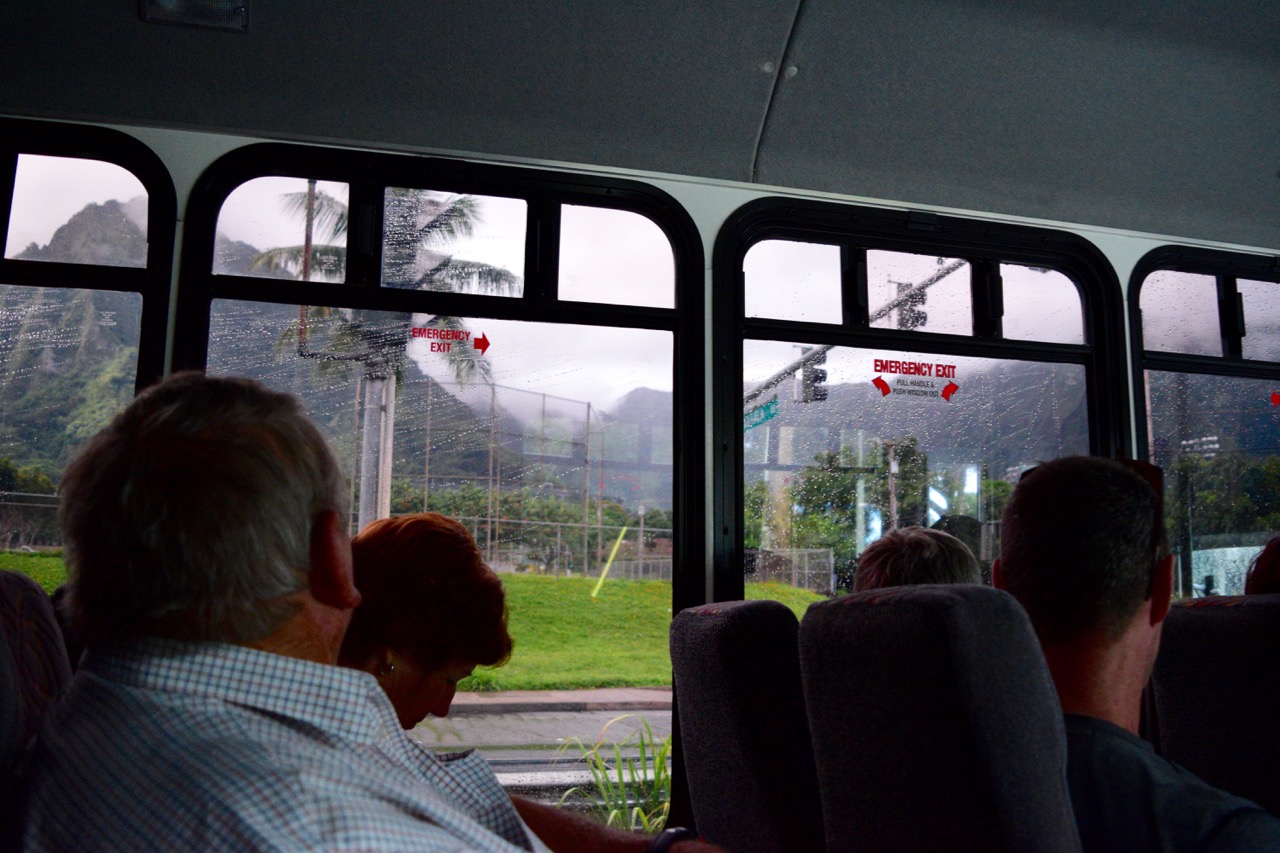
It may be raining when you get out of the highway tunnel to the Kaneohe side, but don’t worry. It is always like this around here.
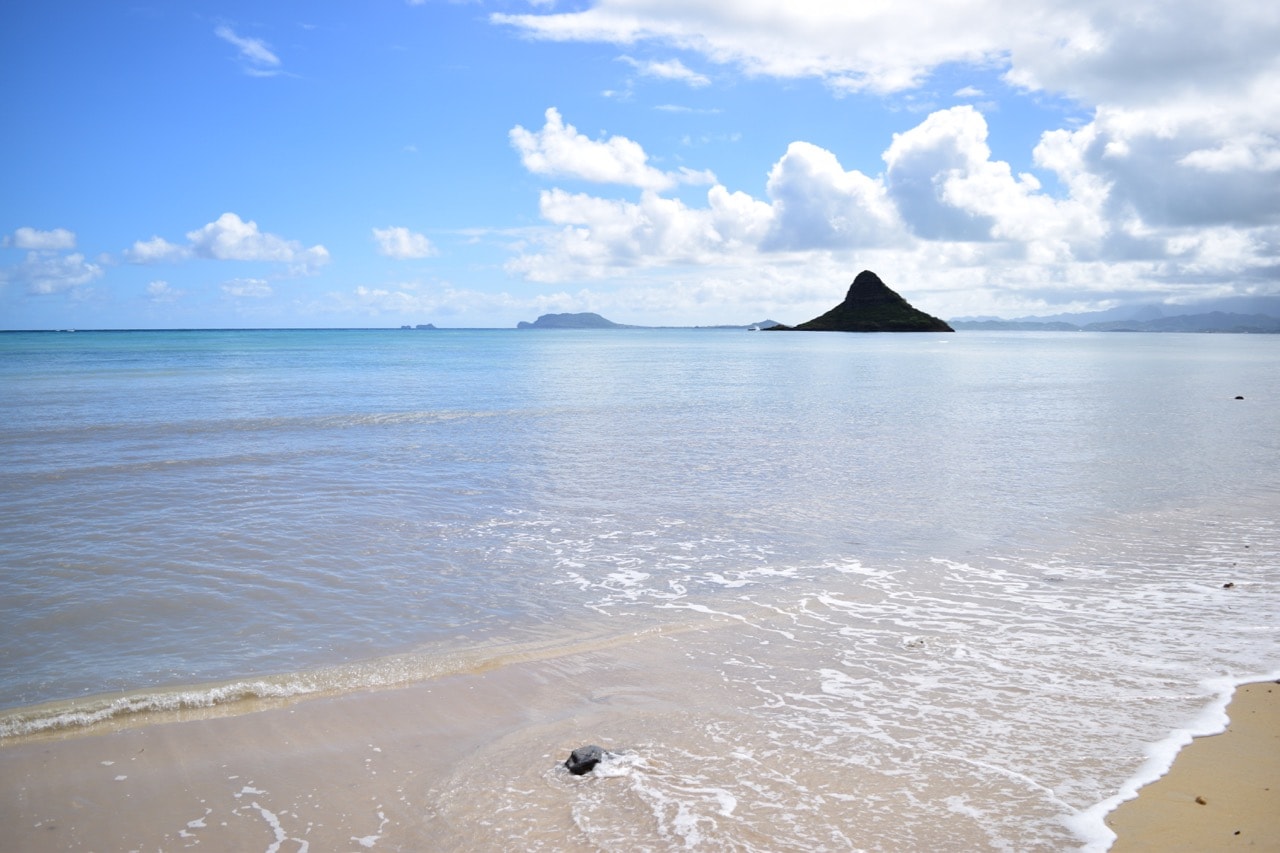
In just a few minutes, it is sunny as Hawaii should be.
Along the way, you’ll have a short break to take pictures of the Mokoli’i Island, also known as Chinaman’s Hat, near the Kualoa Ranch.
11:58 Arrive at the Polynesian Cultural Center

After about and hour and a half bus ride, we arrived at the PCC and the driver handed us the tickets to the park.
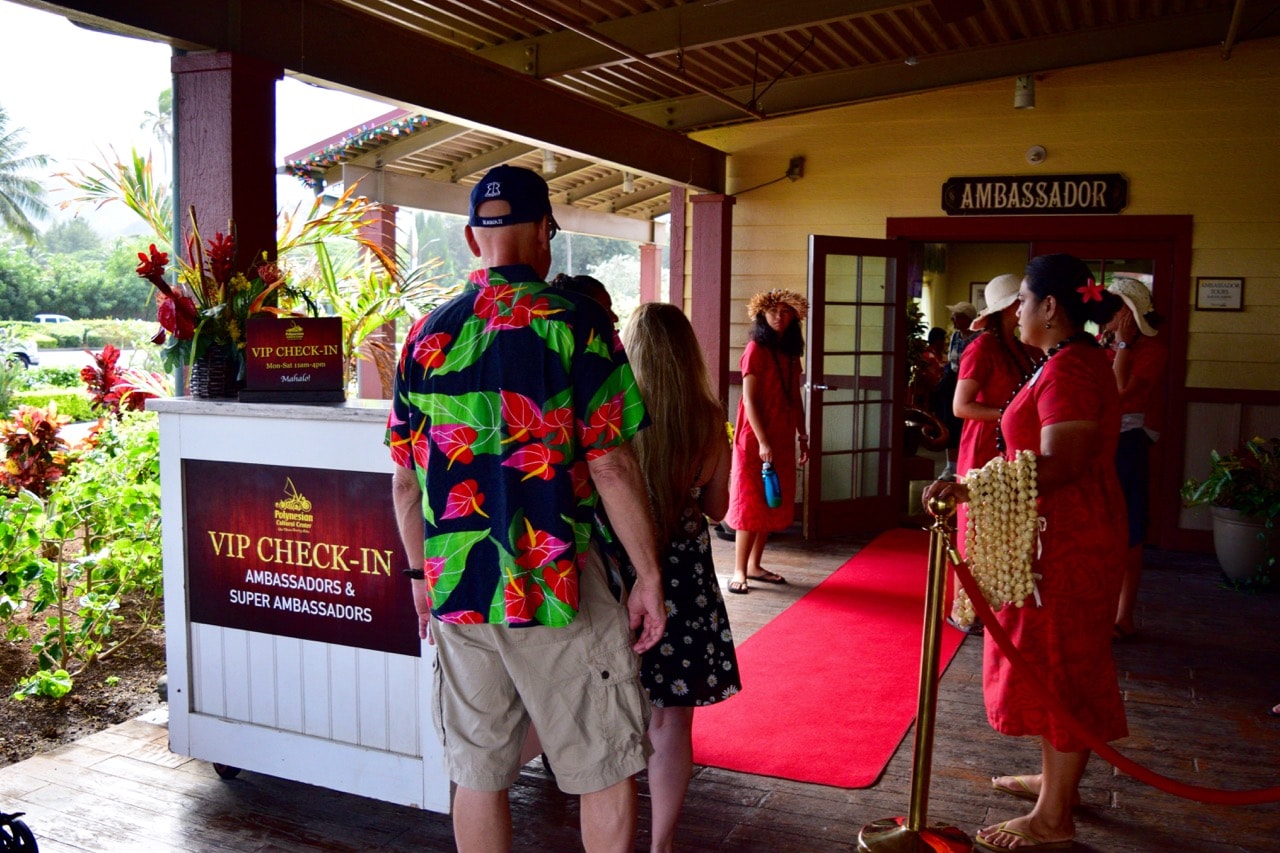

We were taken to a VIP check-in, and I received a lei made of kukui nuts, two DVDs, and a poncho as a souvenir.
Hotels Near Polynesian Cultural Center
The closest hotel to PCC is Courtyard by Marriot Oahu North Shore that is right next to the center, and Turtle Bay Resort, the most famous resort on the north shore, is just 15 minutes away by car.
12:27 Lunch Buffet
After receiving the tickets and the gifts, we walk through the Hukilau Marketplace and head to Hale Aloha, the venue for the lunch buffet.
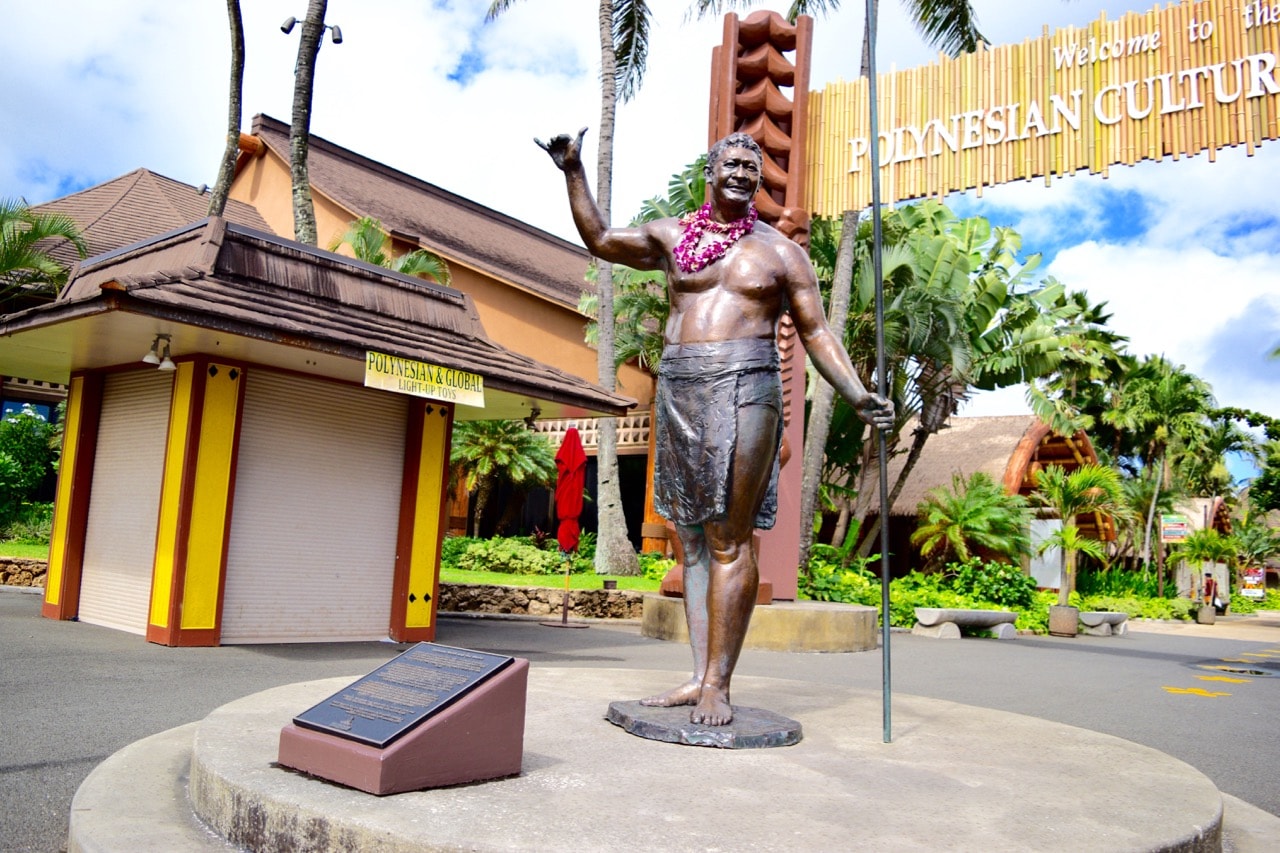
Along the way, a statue of Hamana Kalili, who was supposedly the origin of the “Shaka”, welcoms us.

This is “Hale Aloha”. The dinner luau will also be held in this venue.
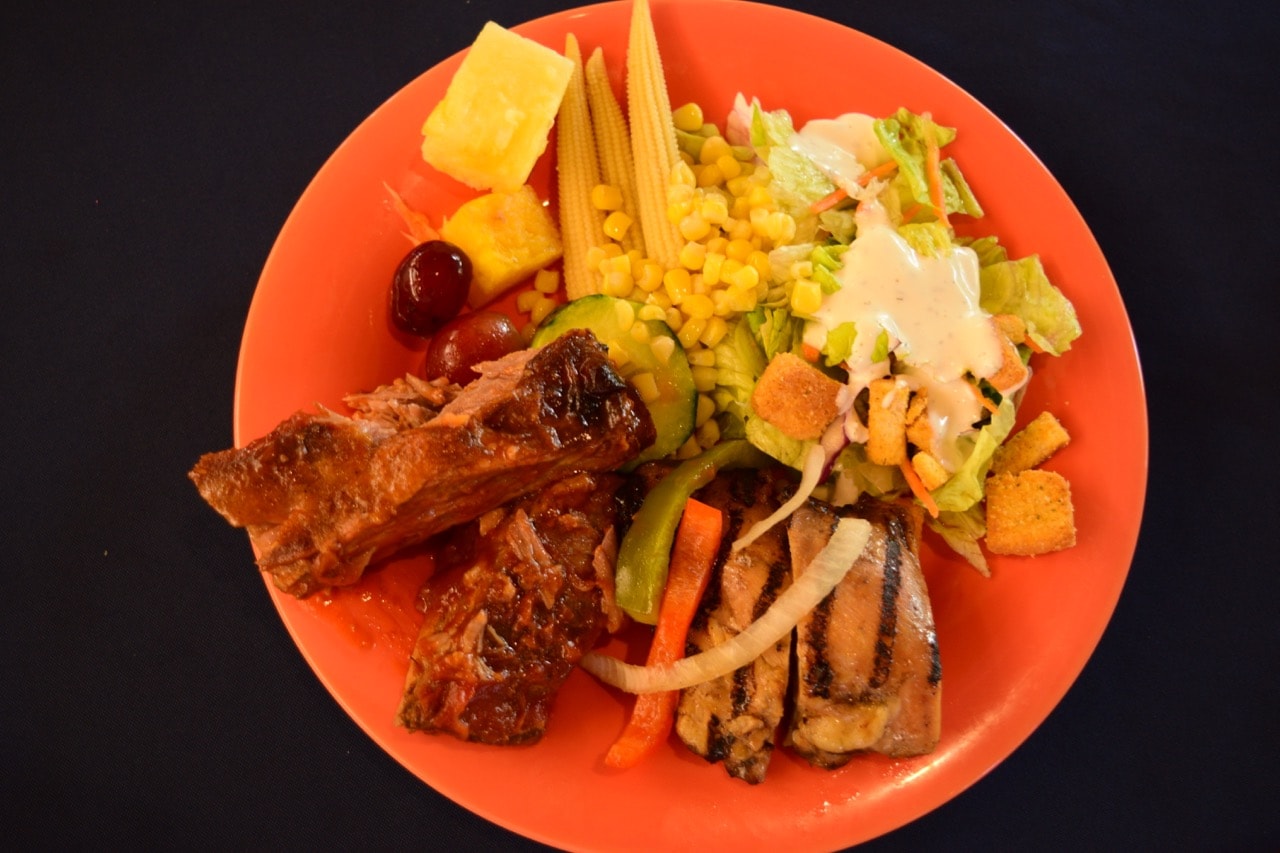

It’s a buffet so you can eat as much ribs and barbecue chickens as you like!
Don’t get too excited though. You need to remember that you are about do a lot of walking.
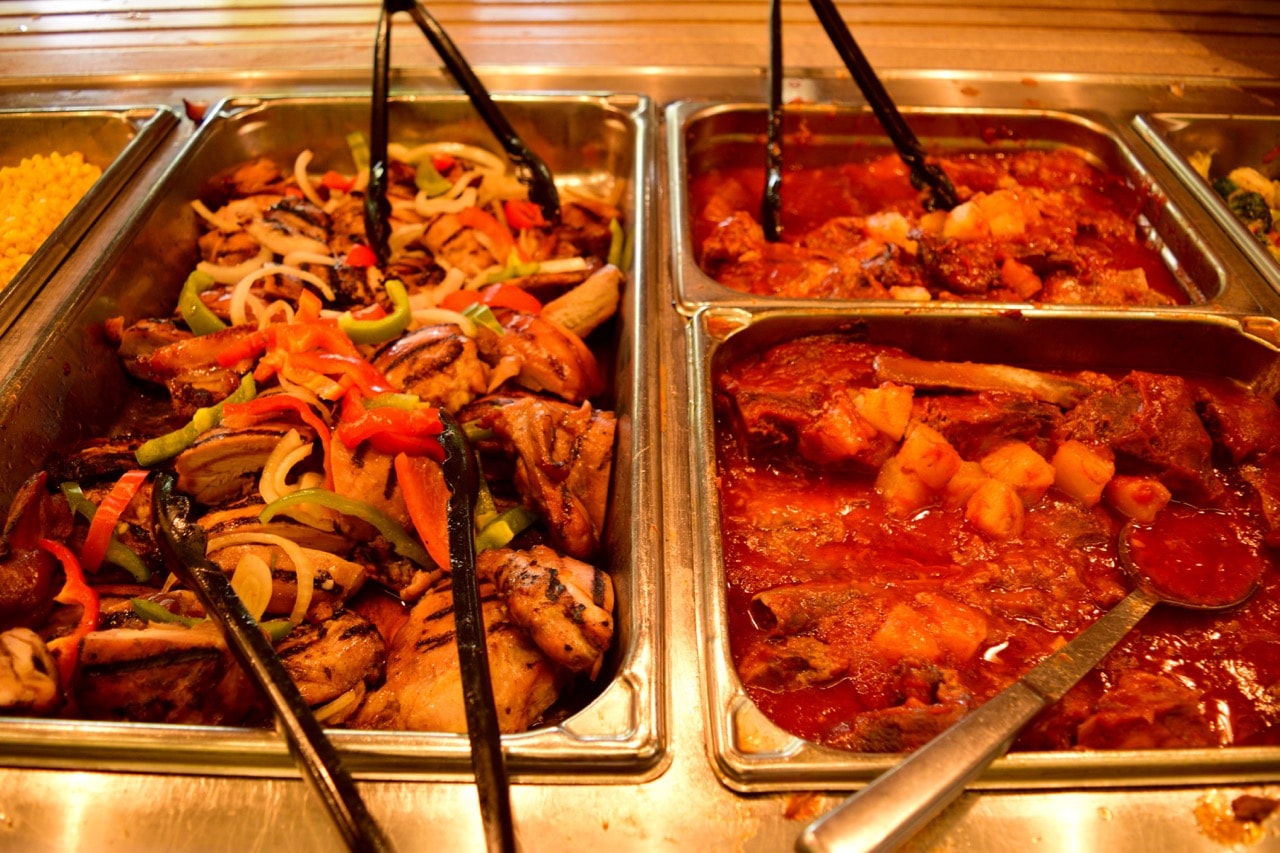
But you just cannot deny your appetite when these are right in front.
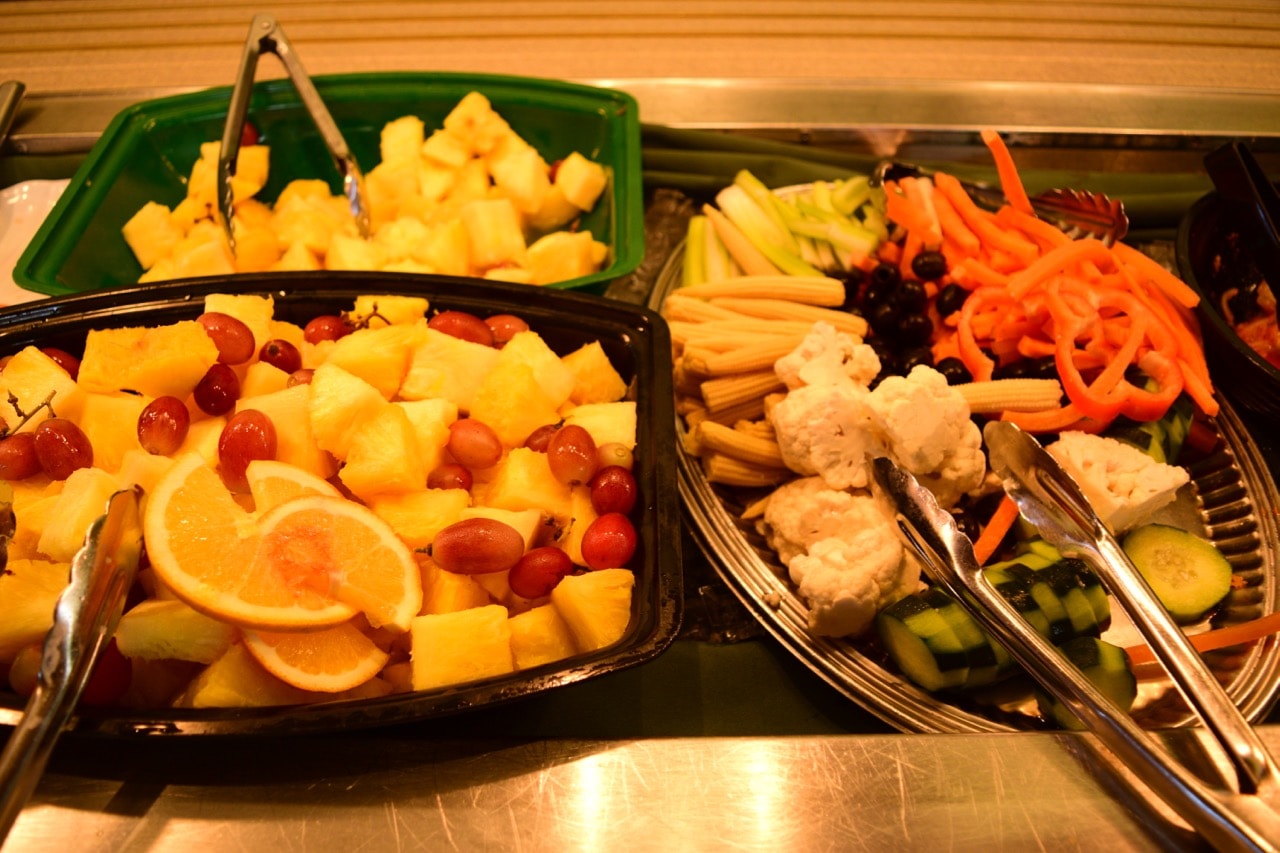
Fruits and salad bar
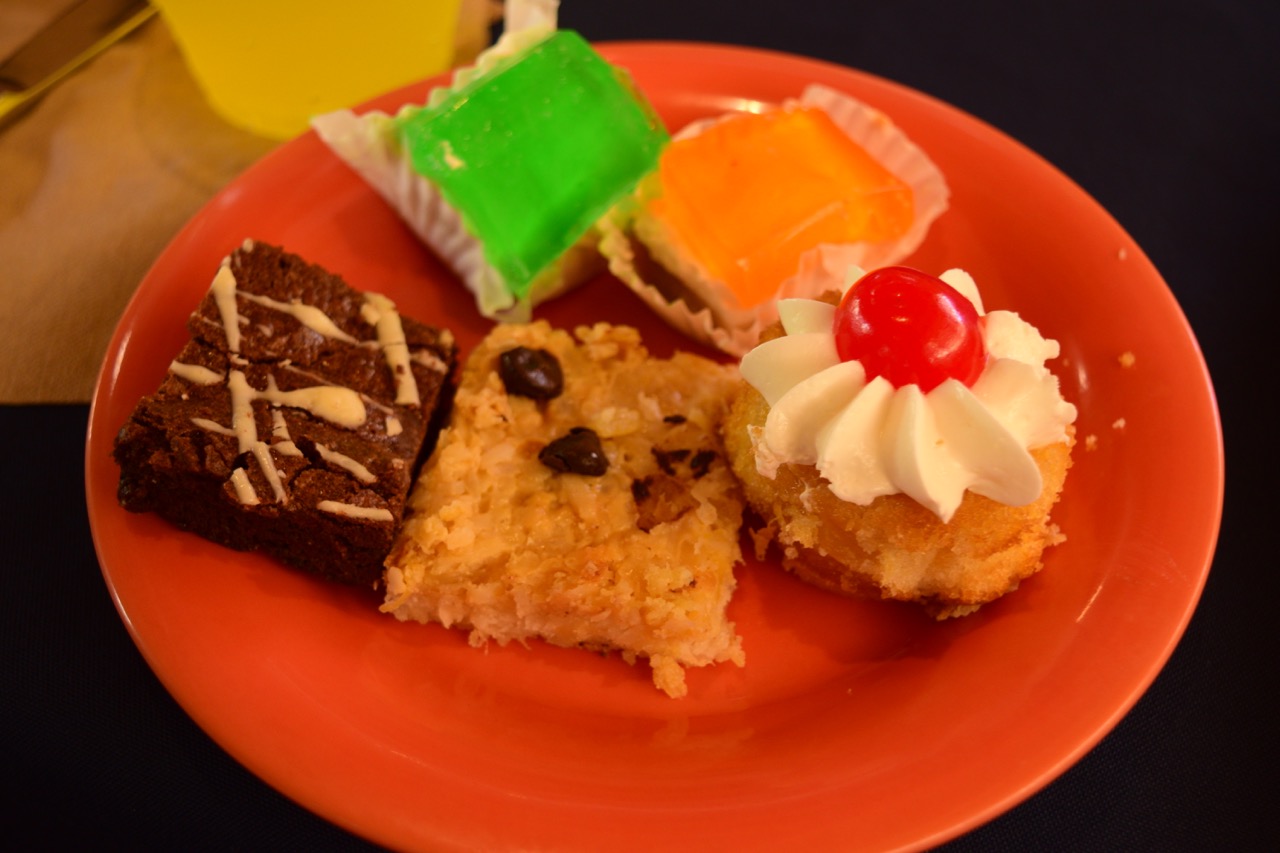
I mean, these cakes are small, so why not take all of them?
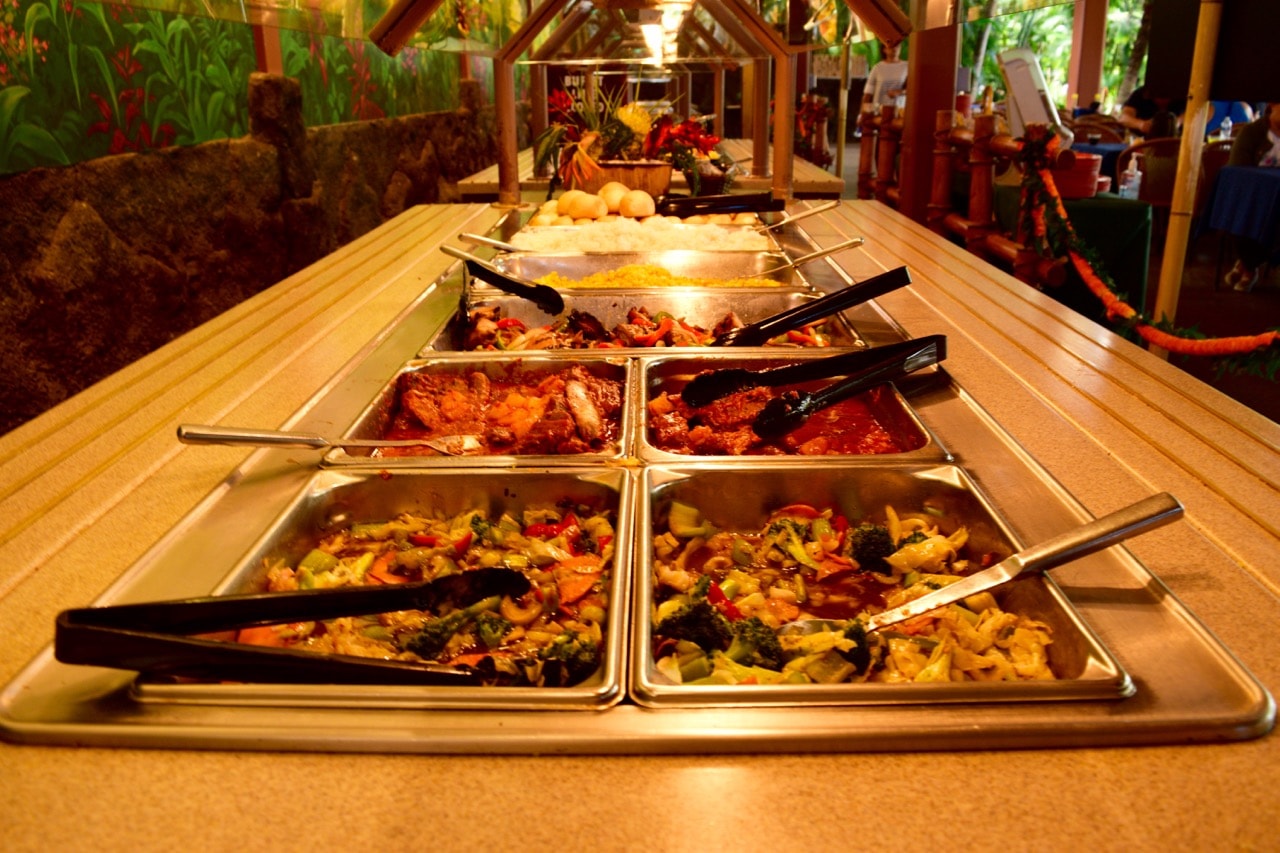
While filling our stomachs with amazing food, we plan for our day in the park! The best multi-tasking of all multi-tasking.

We checked the location on the map and decided to go like this today.
But don’t worry, if you participate in a package with a tour guide, the tour guide will make a suitable plan for you, so you can just relax and enjoy your day.
13:23 Samoan Village
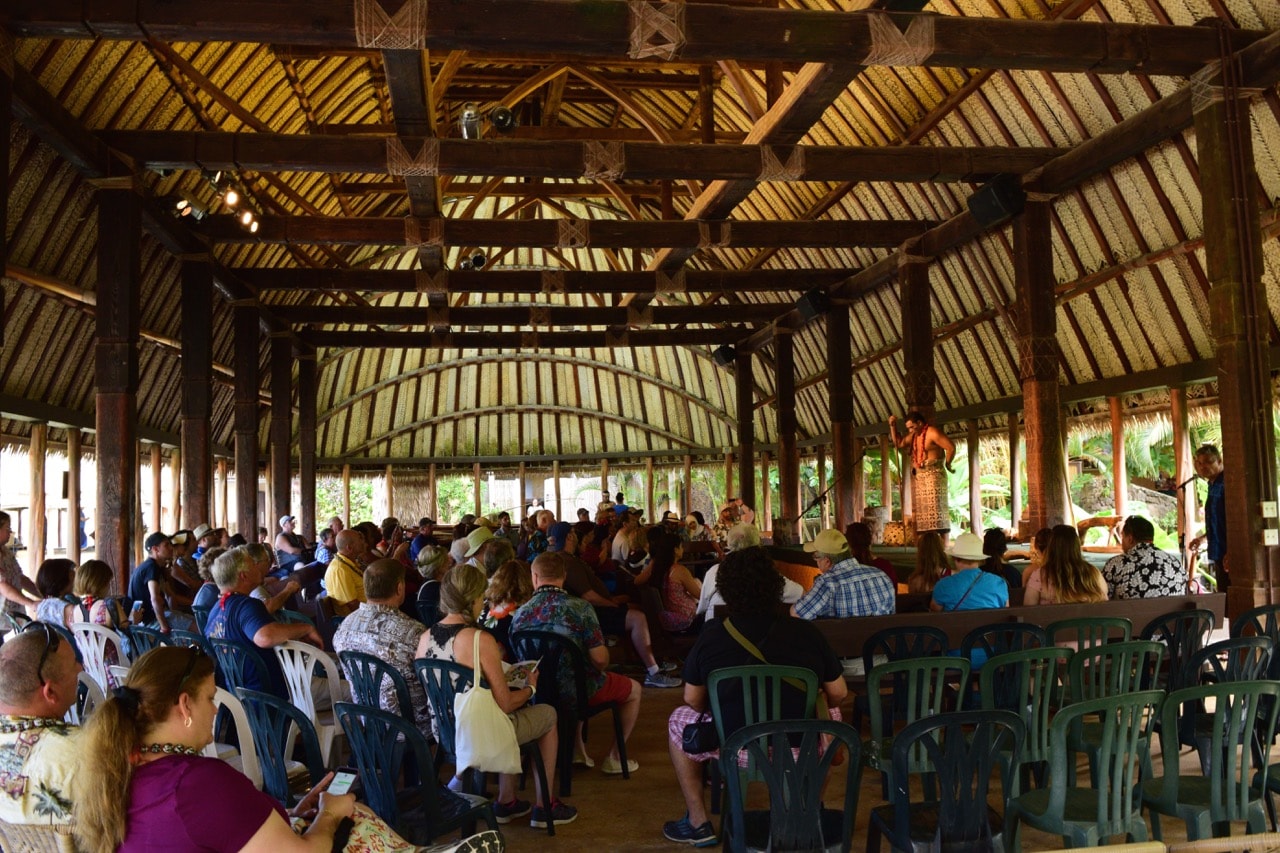
After the meal, we are at the Samoan Village and the show had just begun.
The roof of this magnificent building is made of coconut leaves and the ropes are made of palm fruits.
Samoan Village
is a remarkable representation of this ancient Polynesian society, highlighted by the house of the chief which can accommodate up to 200 people, the guest house and family home — all surrounding a central malae or village green. An open-air demonstration area under a large, shady banyan tree can also seat about 200 people.
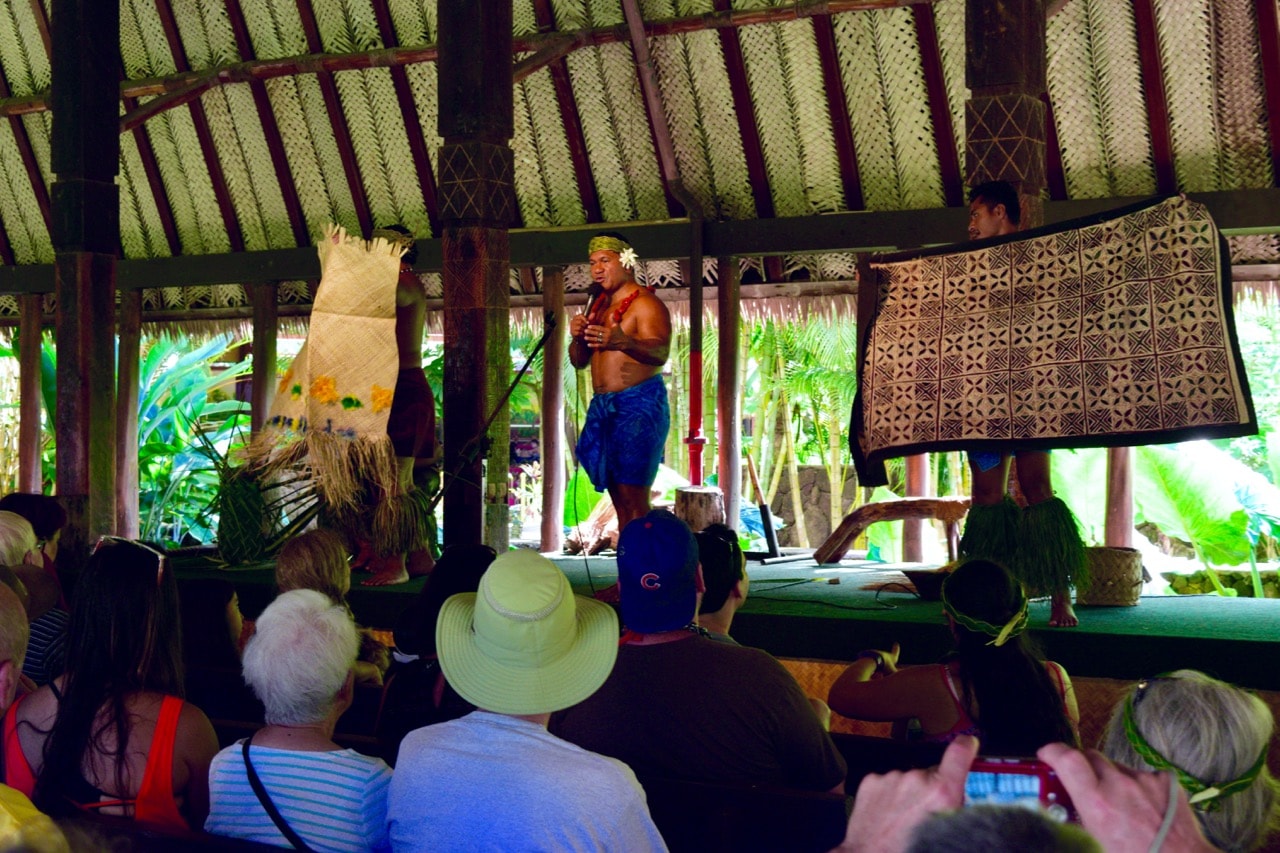
They will show you how to split coconut, how to squeeze coconut milk, how to make a fire, etc.
The humor of the casts, especially the main MC Cap at the center, is amazing.
In my definition, if anybody can move the chest muscles, pull off some good moonwalk, and make fire with a wooden stick, he is a true entertainer.
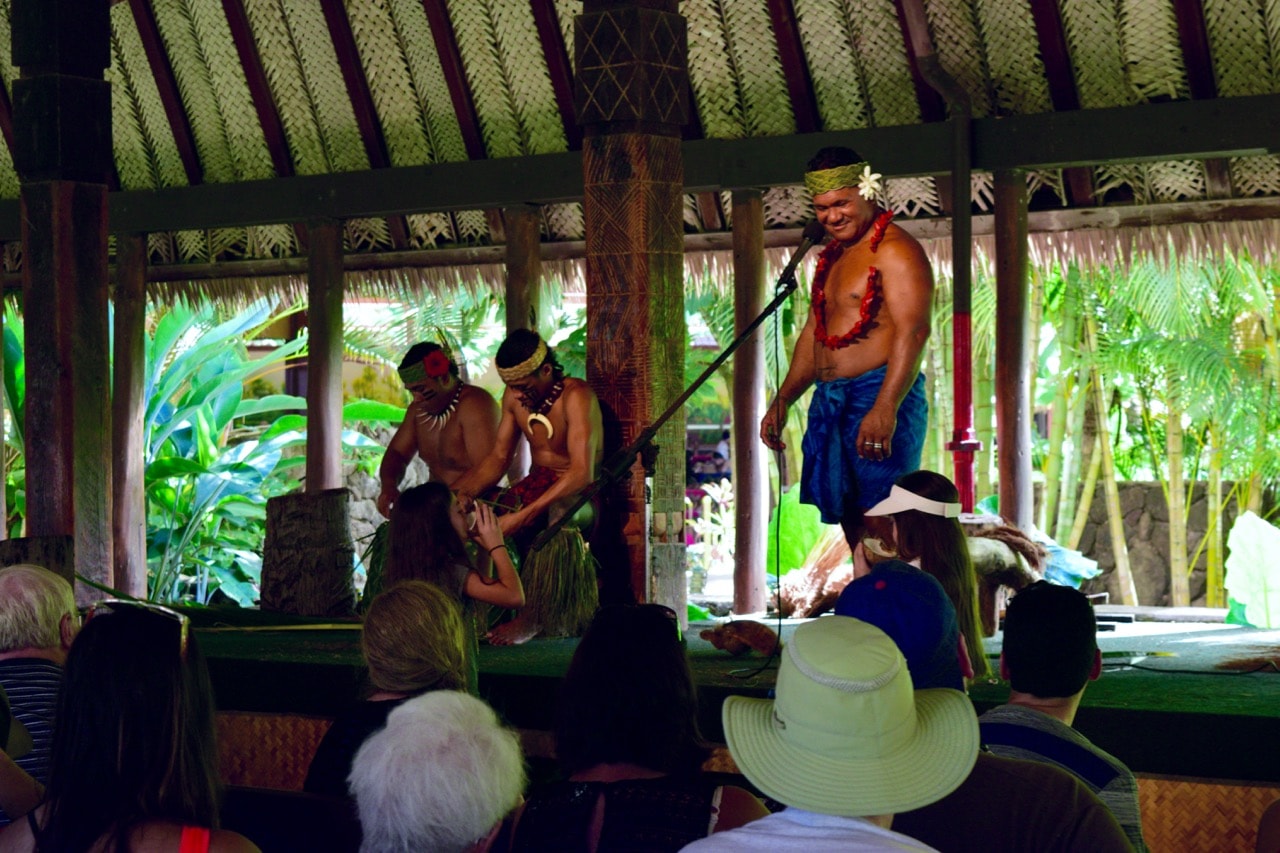
They let the customers drink the freshest coconut juice.
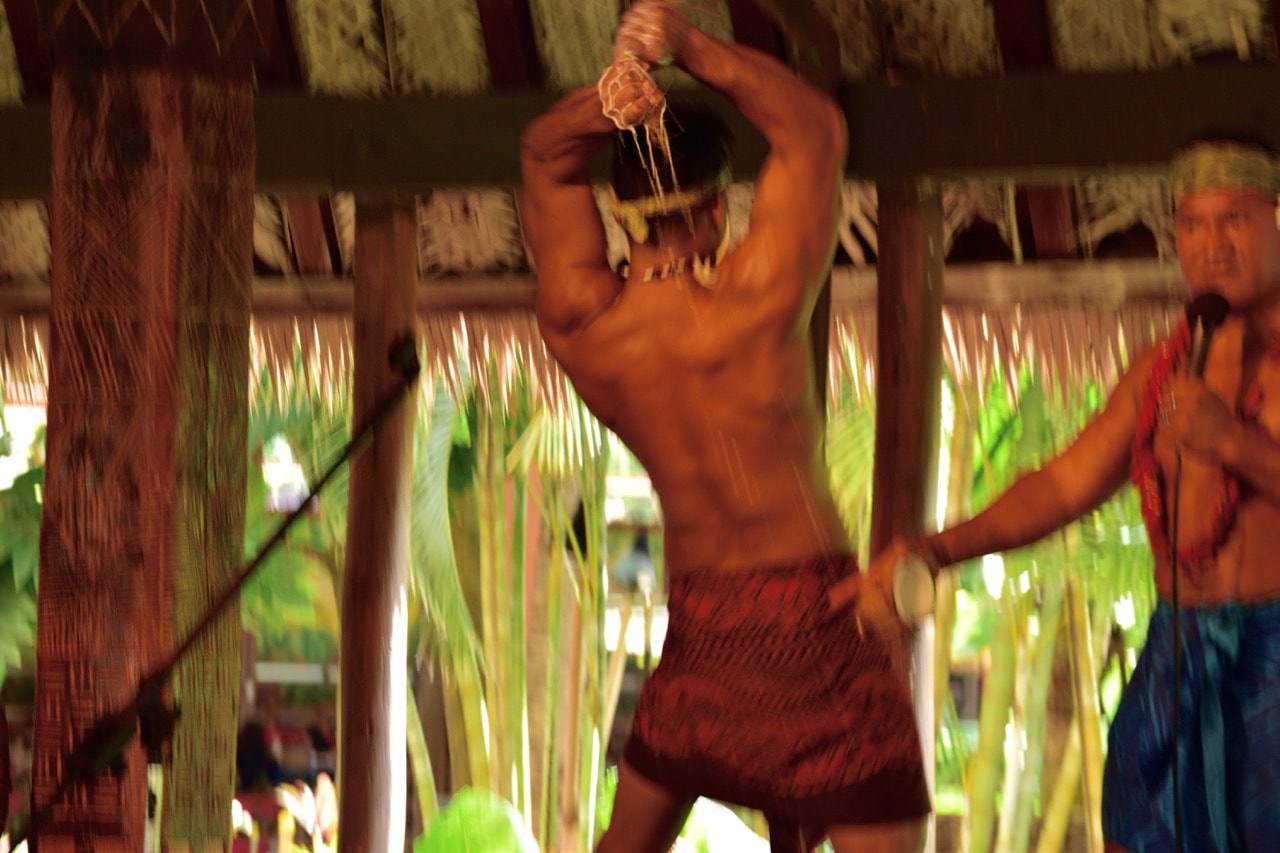
Squeezing coconut milk like a man.

You can also try making fire at the corner of the village, but it is hard to even see tiny smoke, or make a little burn on the wood, let alone an actual flame.
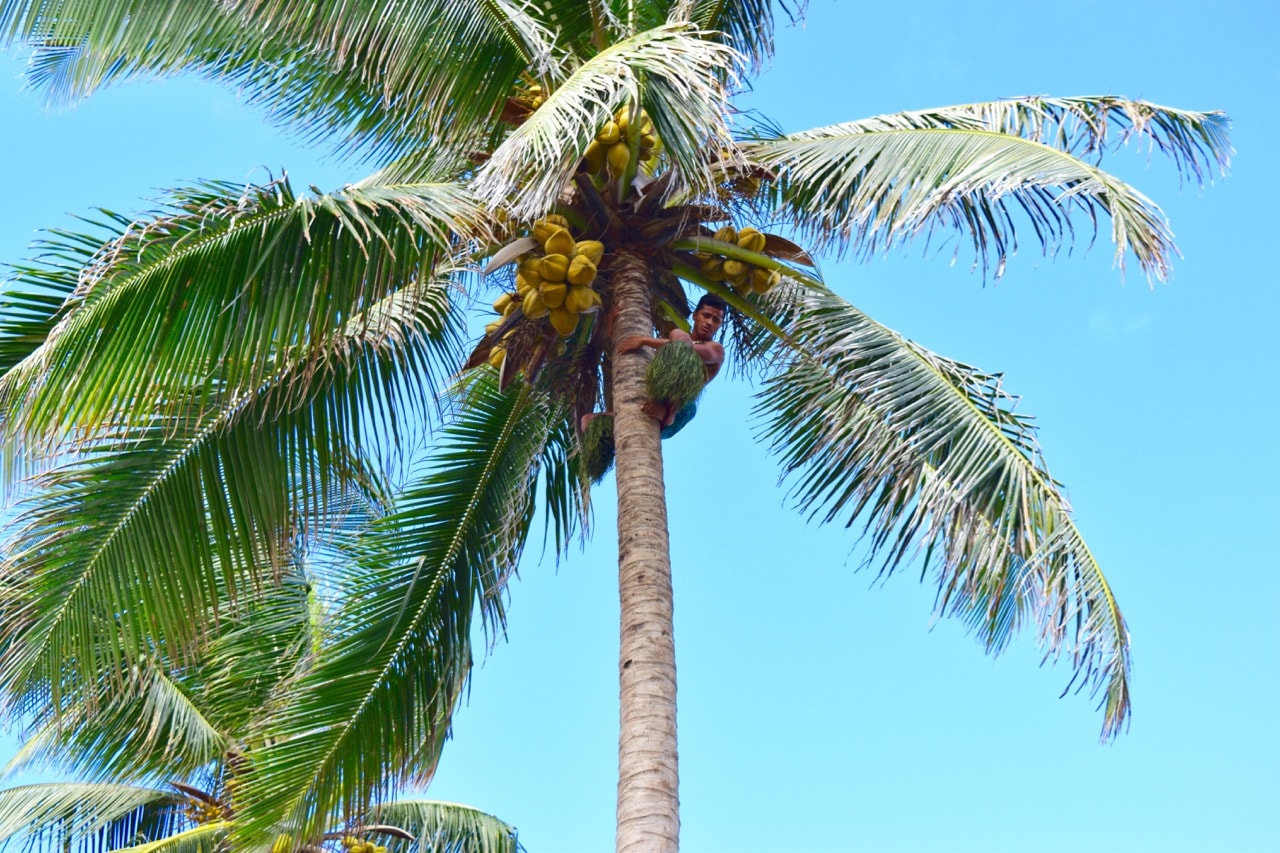
In the end, there was a demonstration of climbing a tree with nearby palm trees. It was a very enjoyable Samoan experience.
13:53 Leaving Samoan Village to explore Hukilau Marketplace
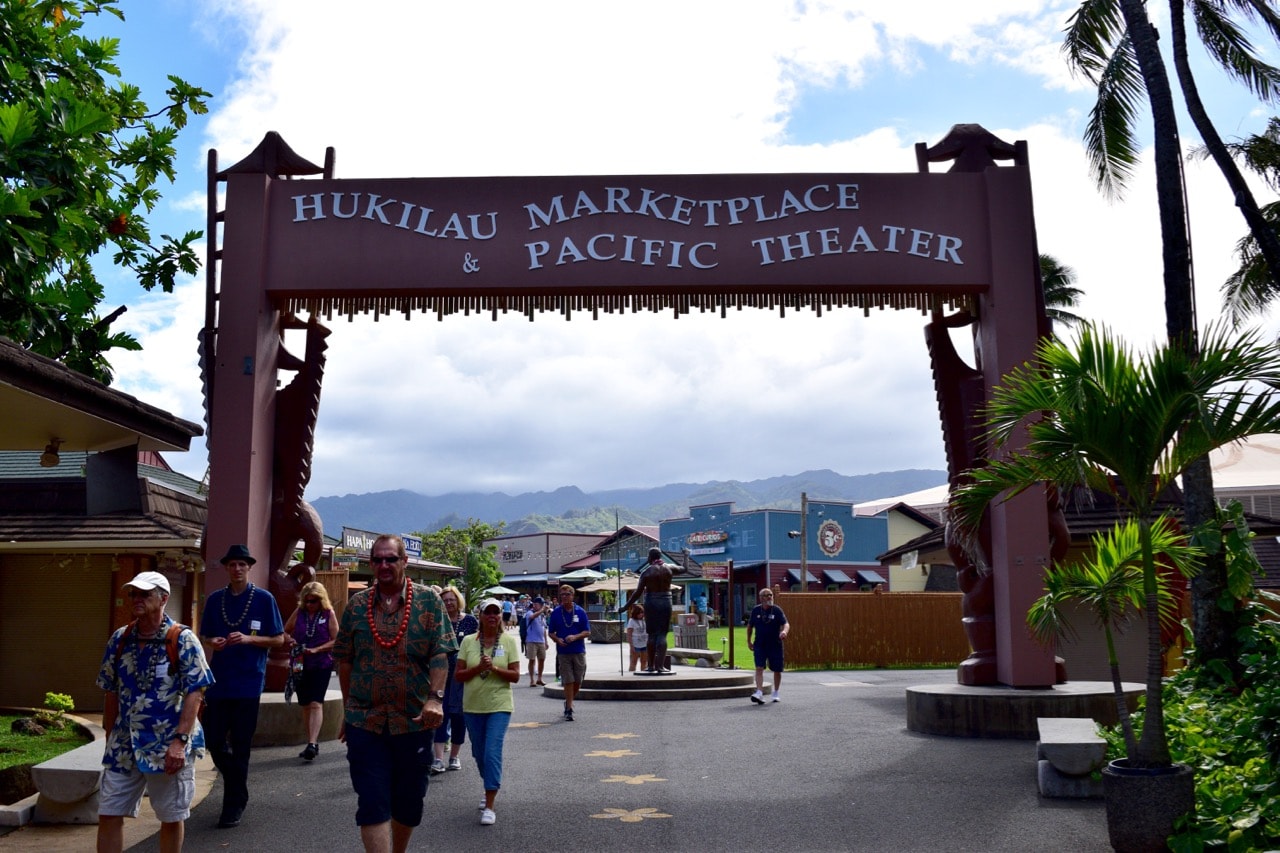
We had some time before the start of the canoe show “Rainbow of Paradise”. We took a walk around the shops at Hukilau Marketplace.
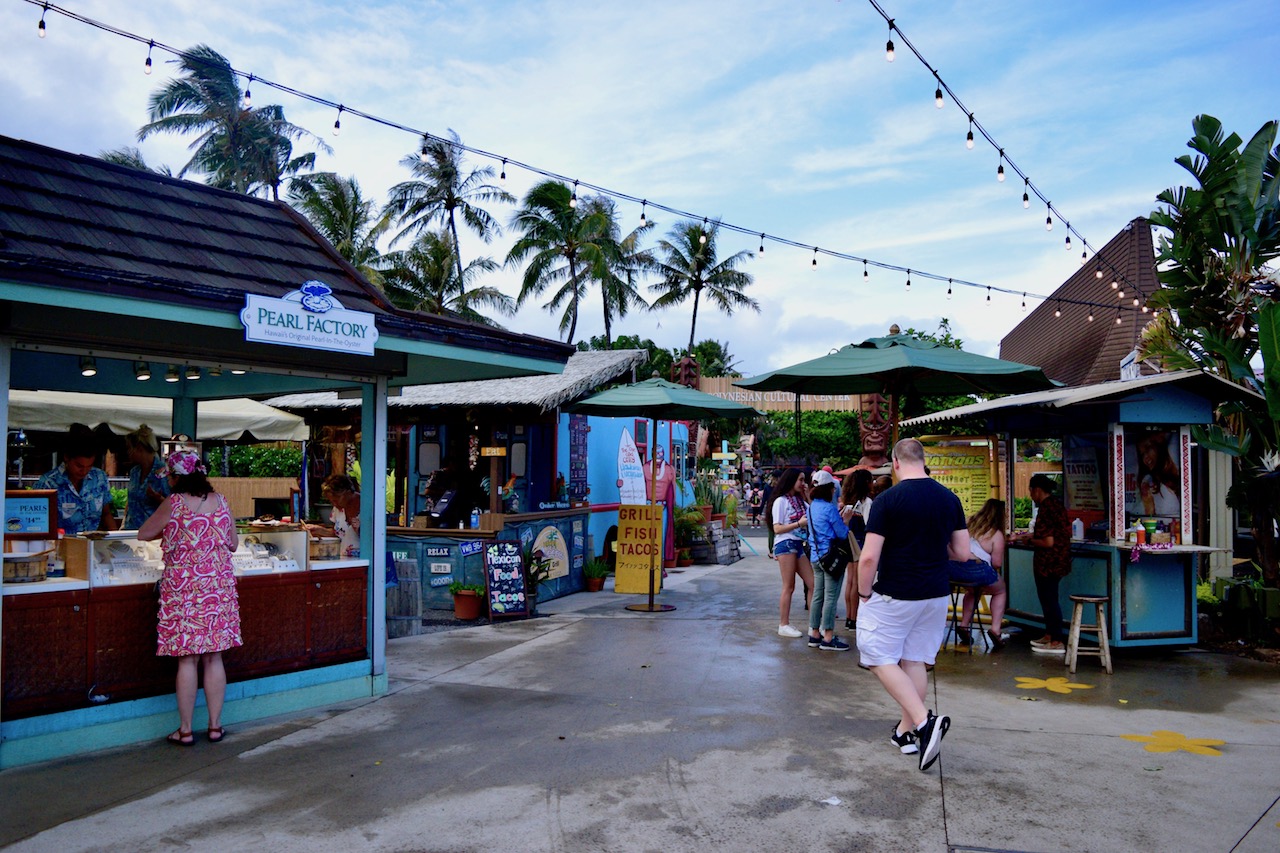

Not only PCC’s directly managed stores, but also various external tenants were lined up, and the products they handled were also rich in variety.
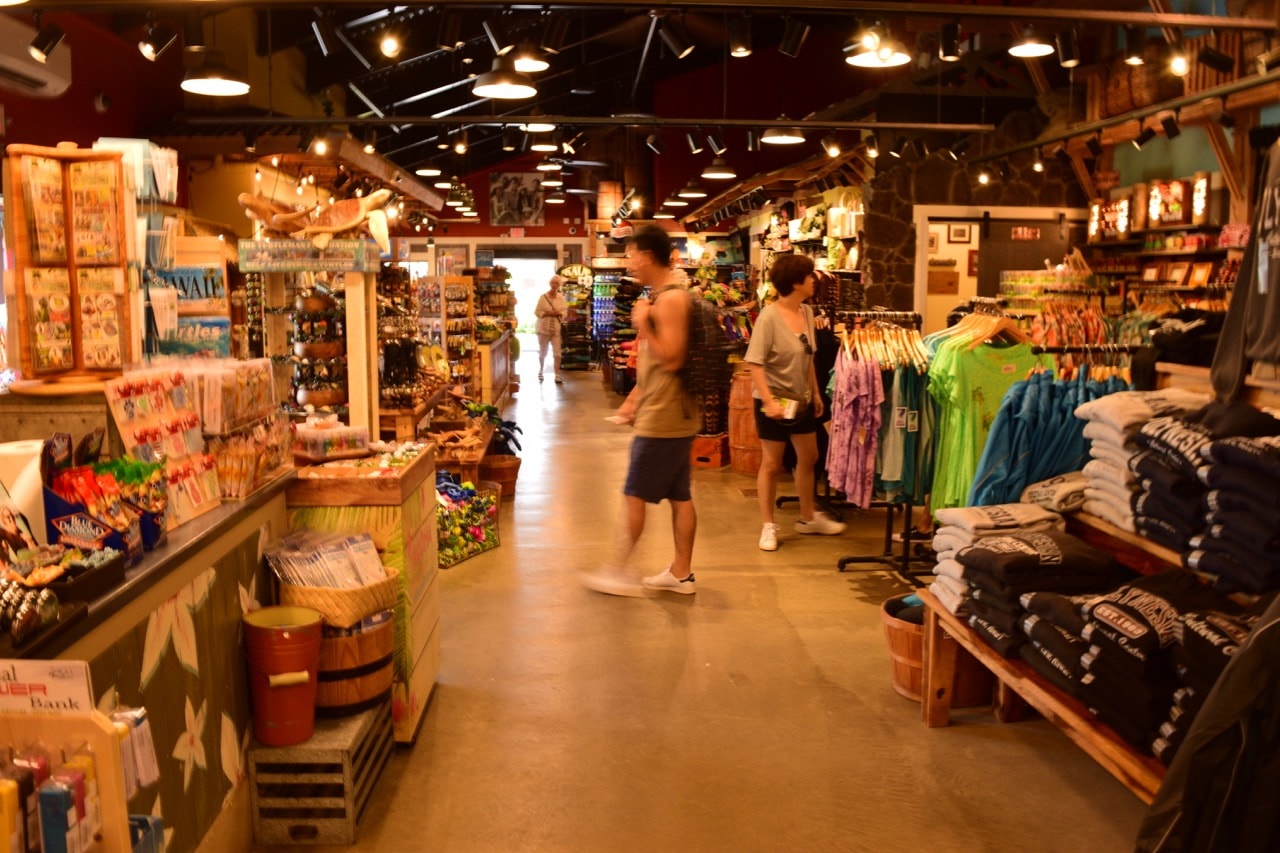


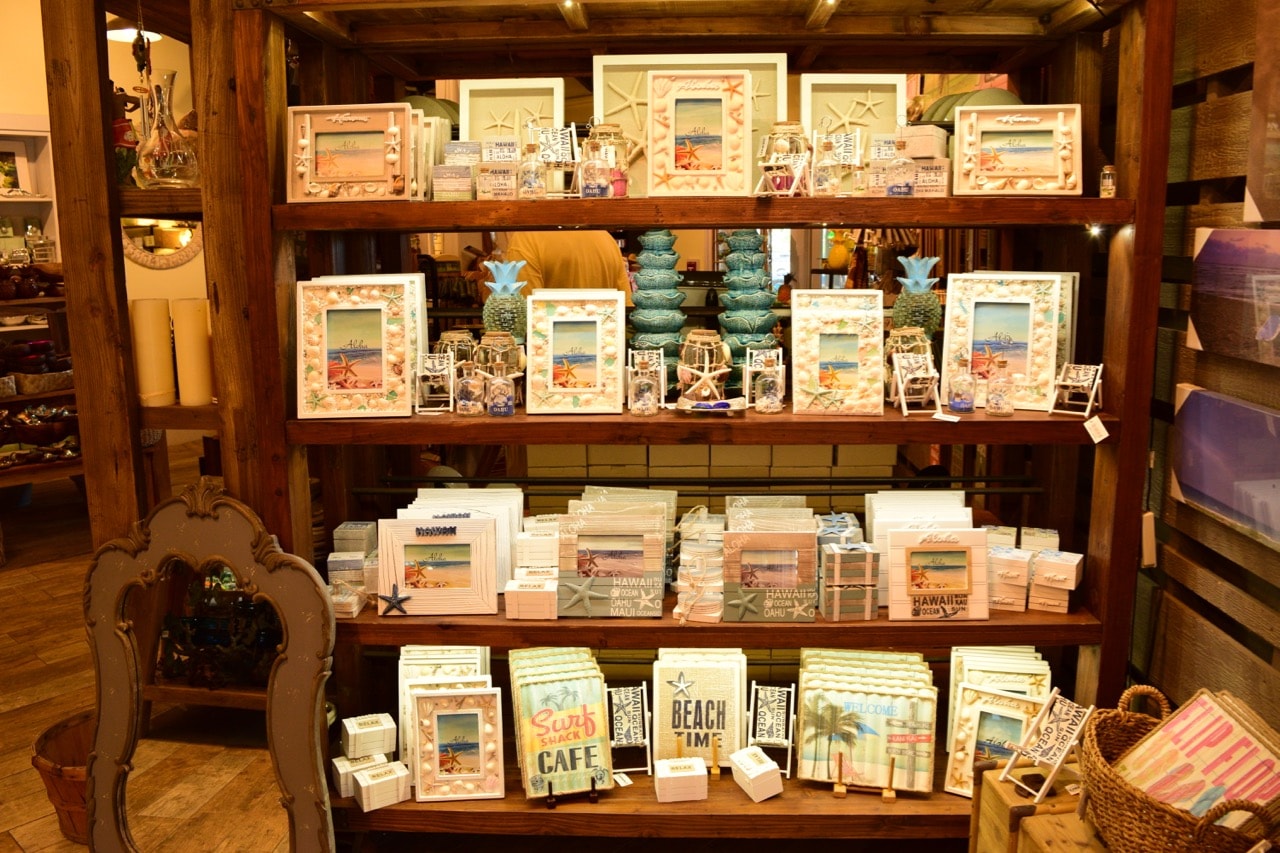
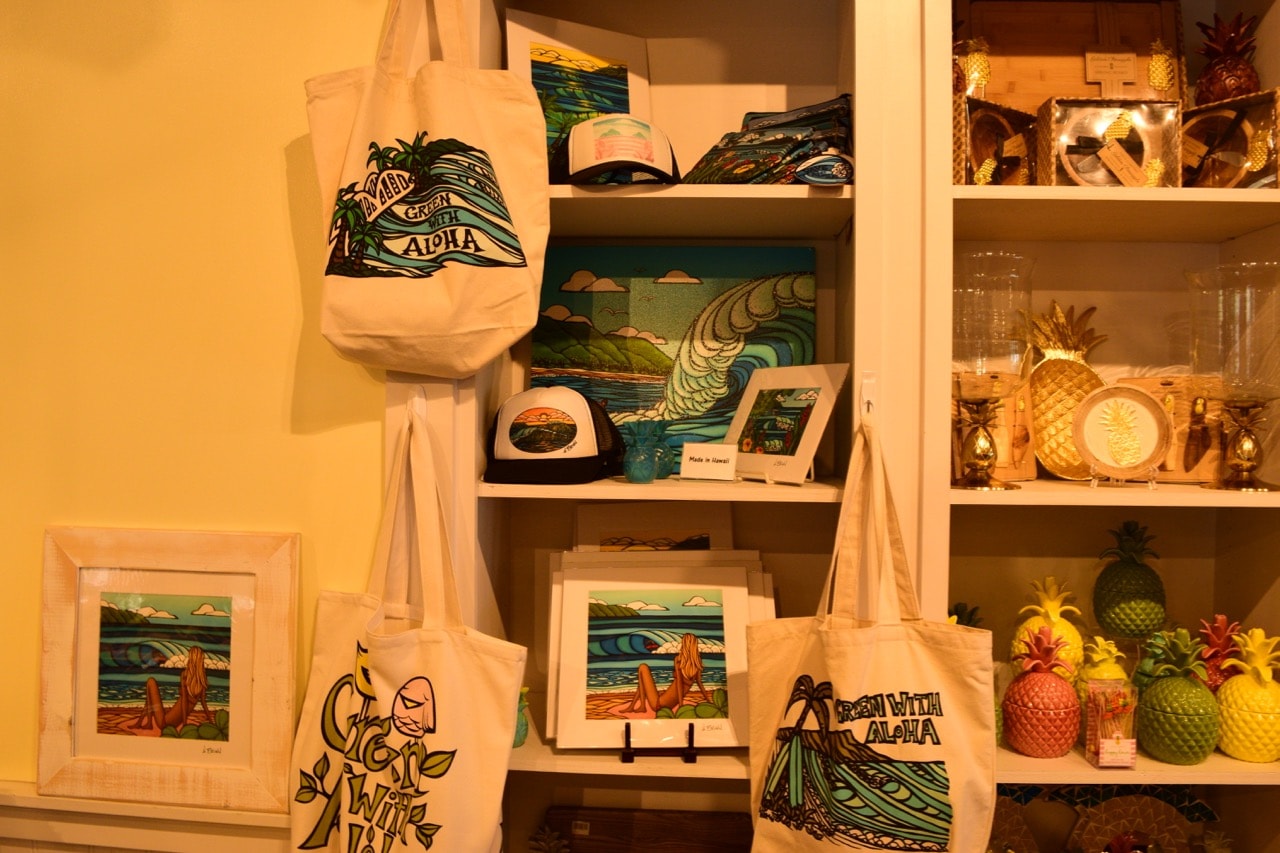
They had a section of Heather Brown’s paintings too.
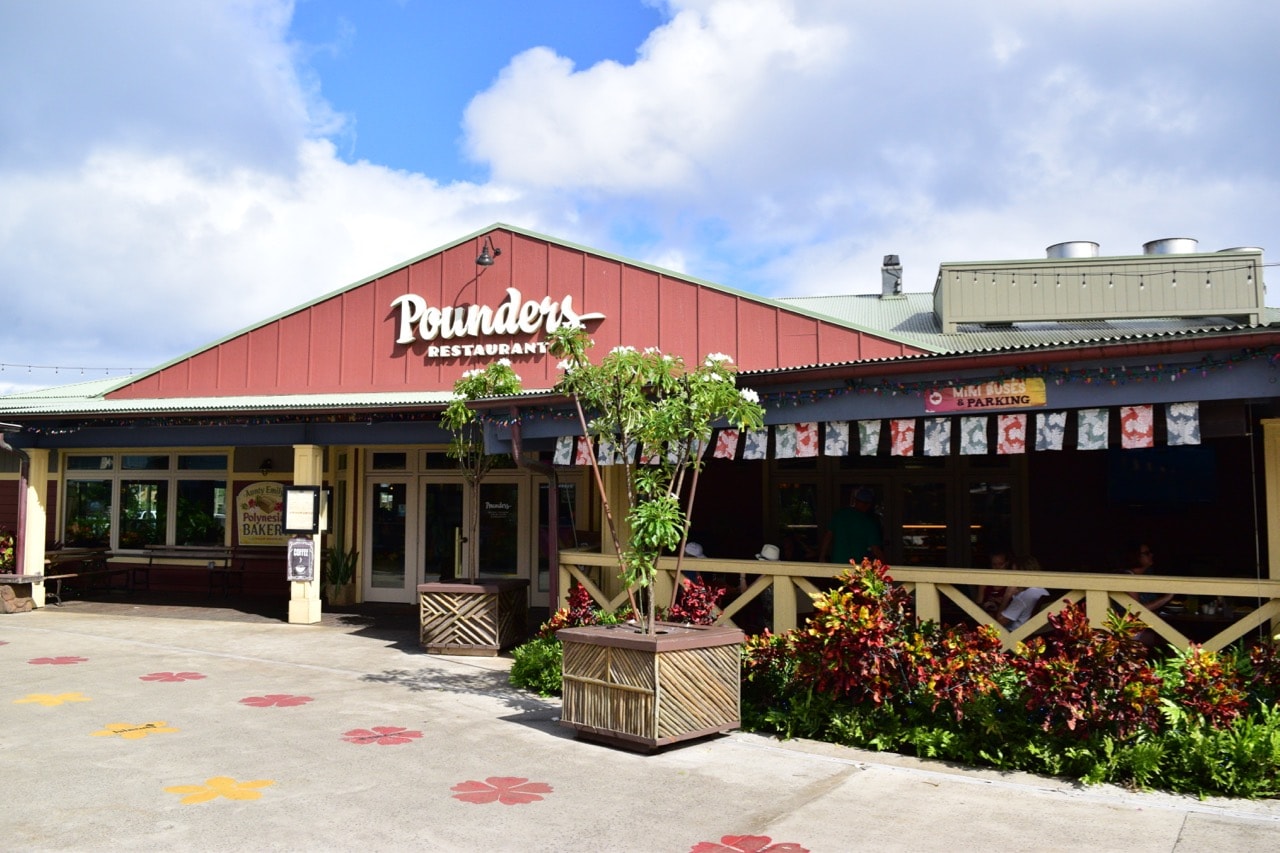
Pounders Restaurant is one of the great food options at PCC, along with Ali’i Luau and Gateway Restaurant.
Pounders Restaurant
is a farm fresh island style dining restaurant, serving fresh produce from island farms, Hawaii-raised grass fed beef, locally caught seafood, savory delights from the Pacific Rim, and unique Hawaiian-style pizzas in their kiawe-fired brick oven imported from Napoli. Their bakery is filled with local favorites as well as a twist on some classics.

This restaurant’s master chef, Graham Elliot, is also the owner of the two-star restaurant Graham Elliot Bistro.
Some of you may know him as a judge on popular cooking shows such as FOX TV’s Master Chef and Emmy’s winner Top Chef.
Here are some of the beautiful dish at Pounders Restaurant.
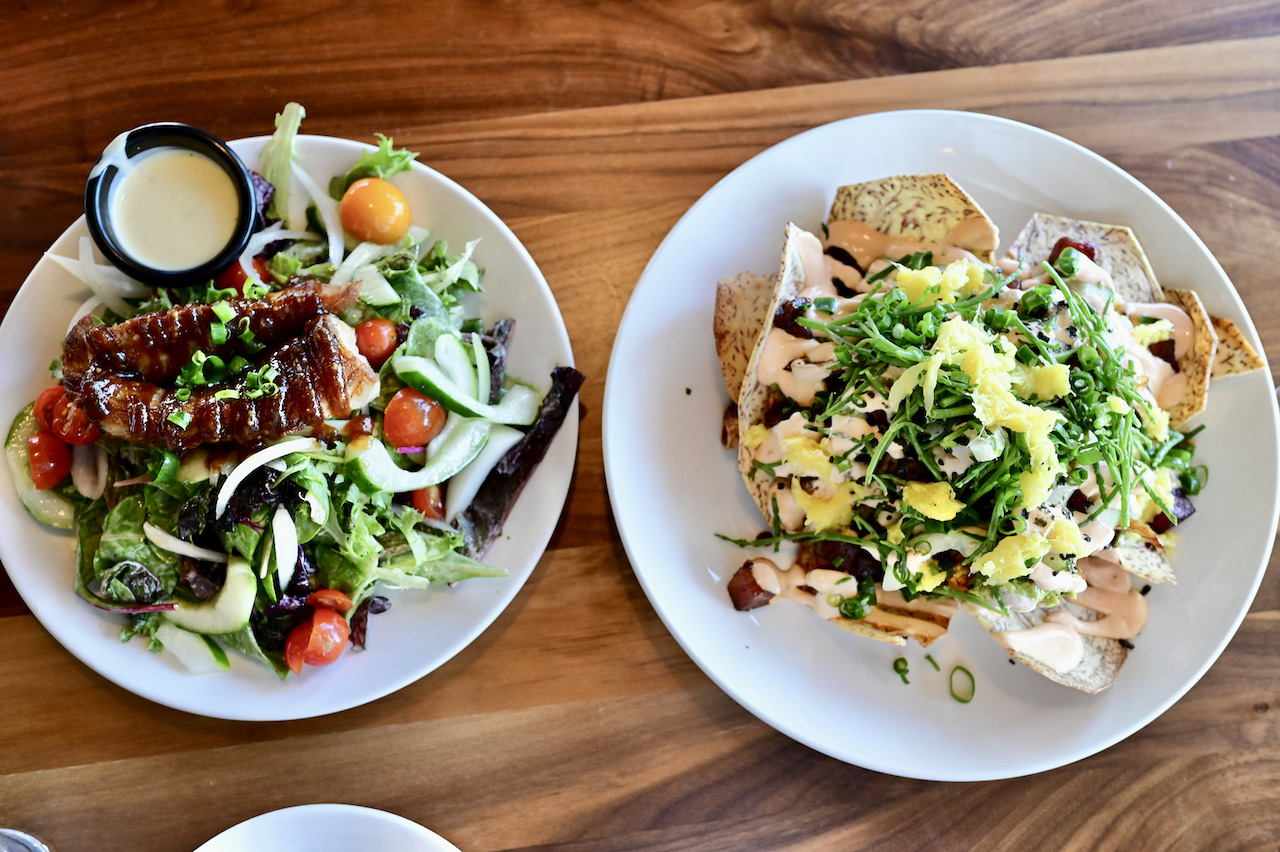
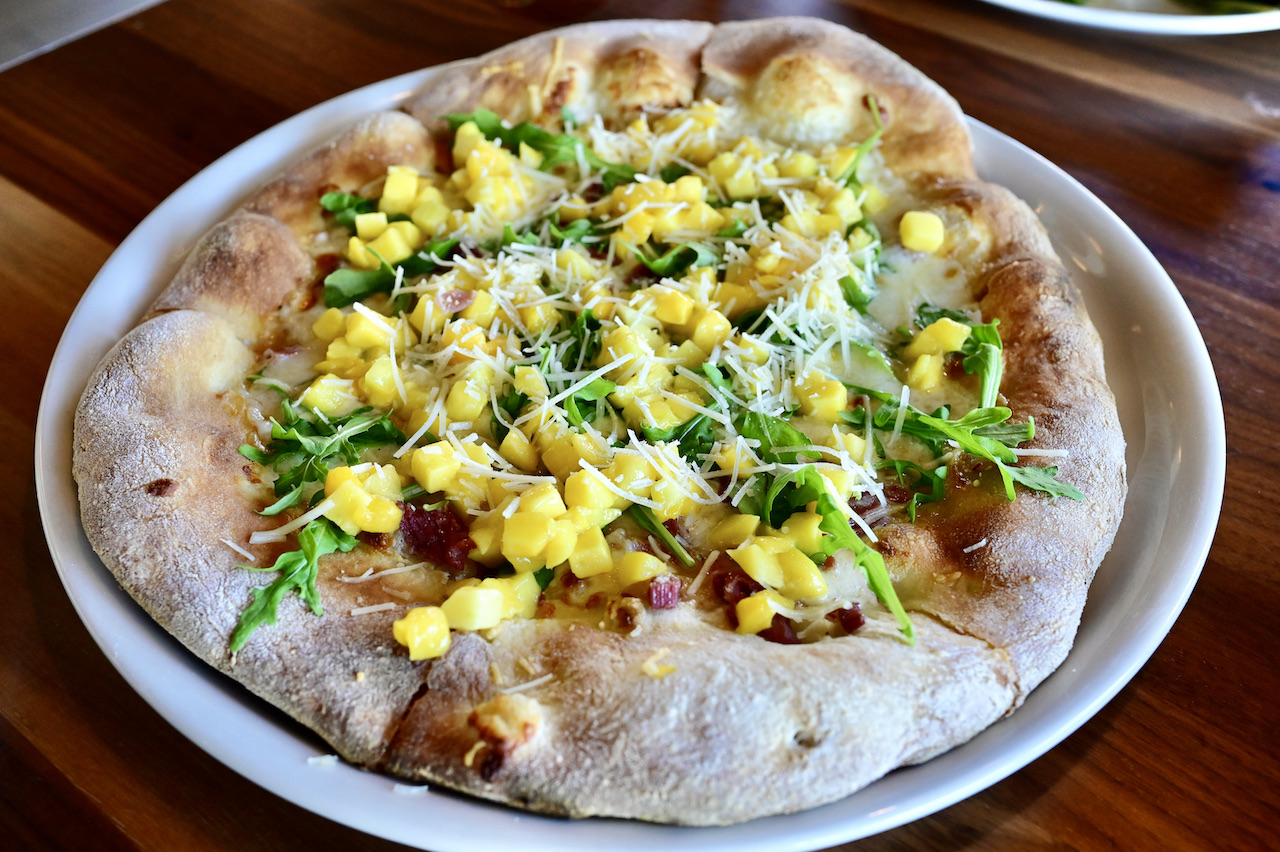
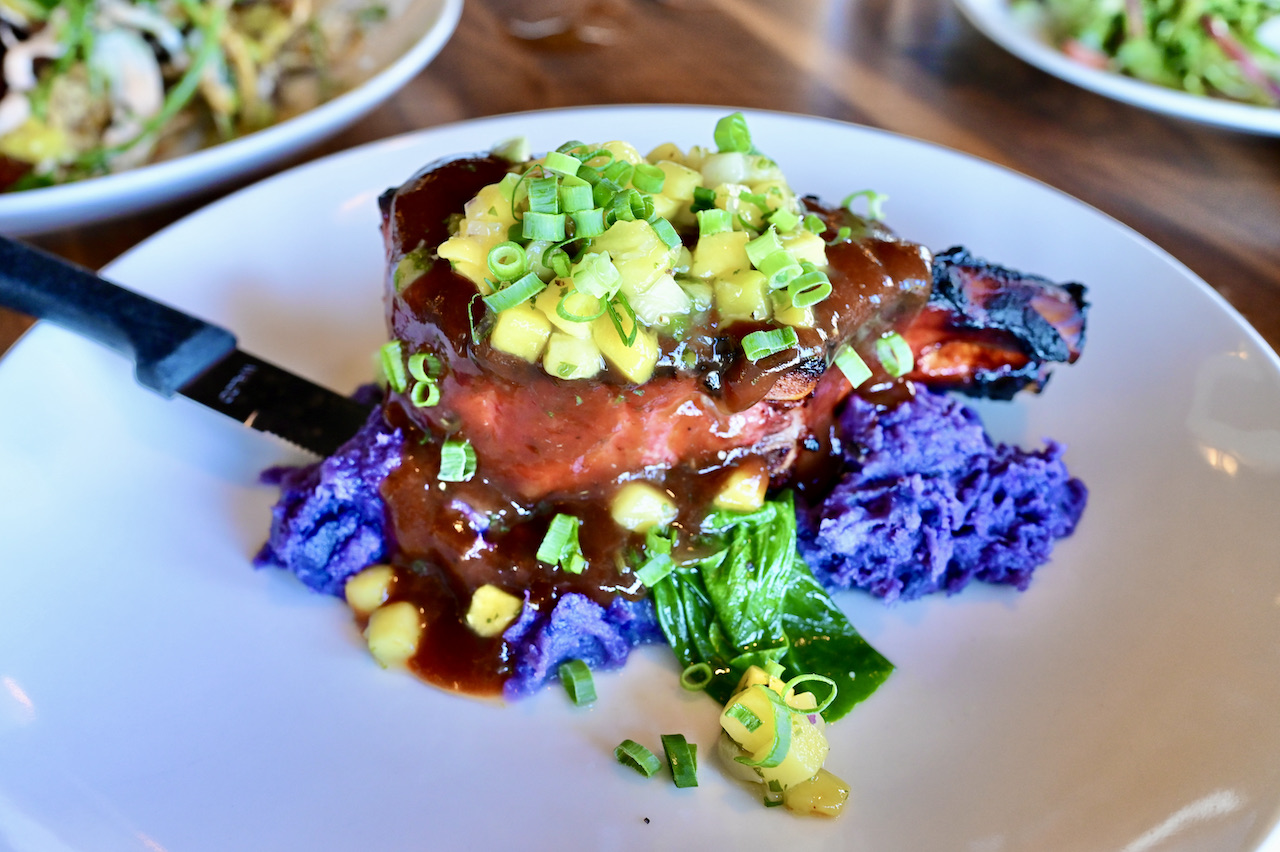
Since lunch is not included in most of PCC’s tour package, you can arrive a bit early and have lunch here if you are driving to the park yourself.
▶︎ Pounders Restaurant Official Website
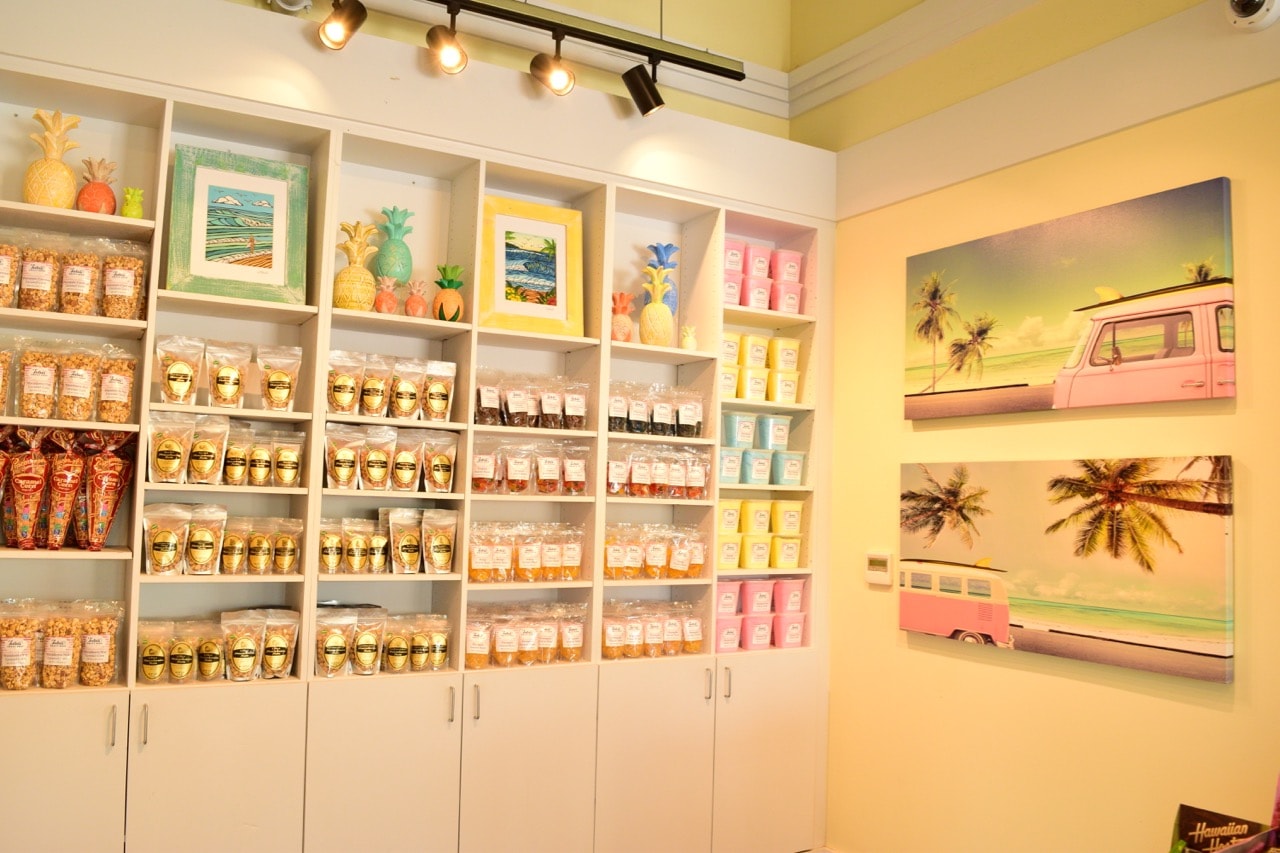
Cute sweets shop

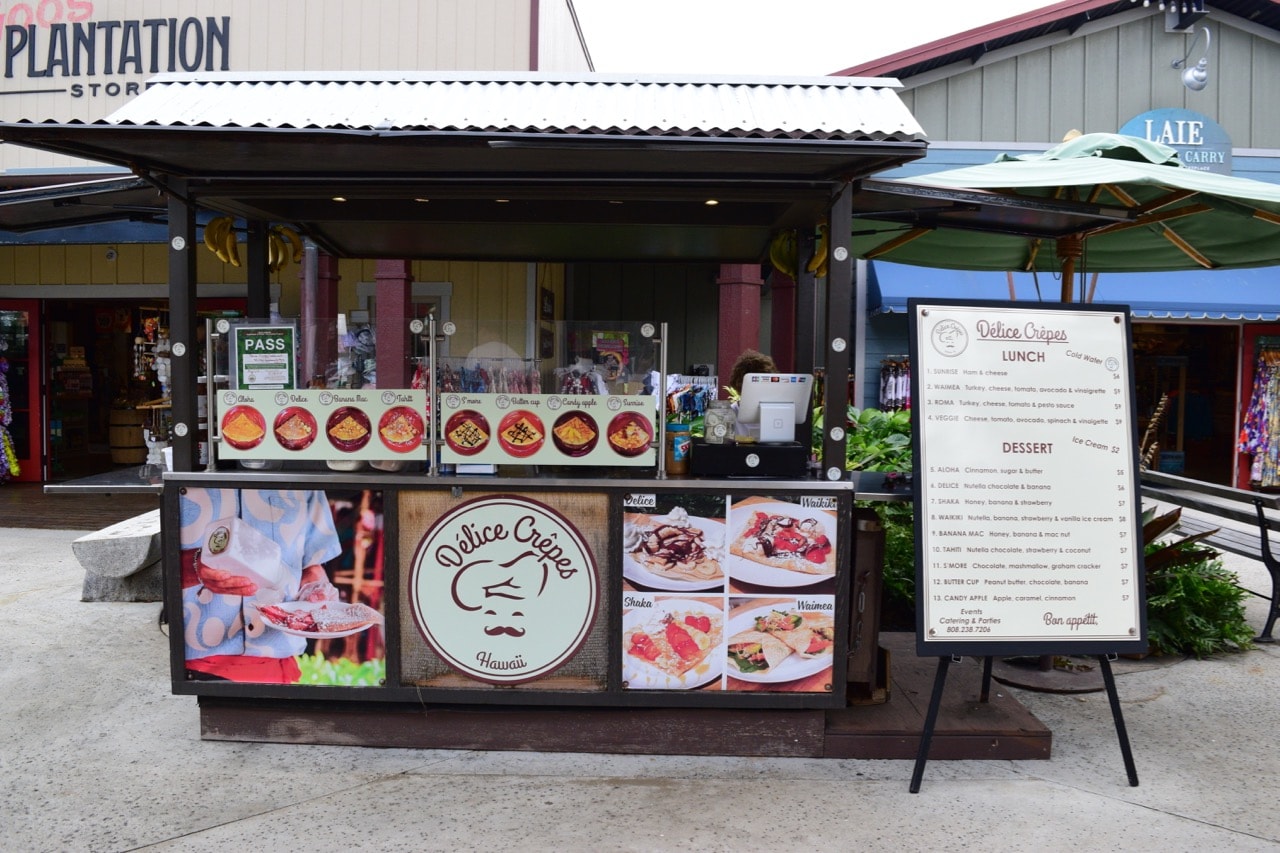
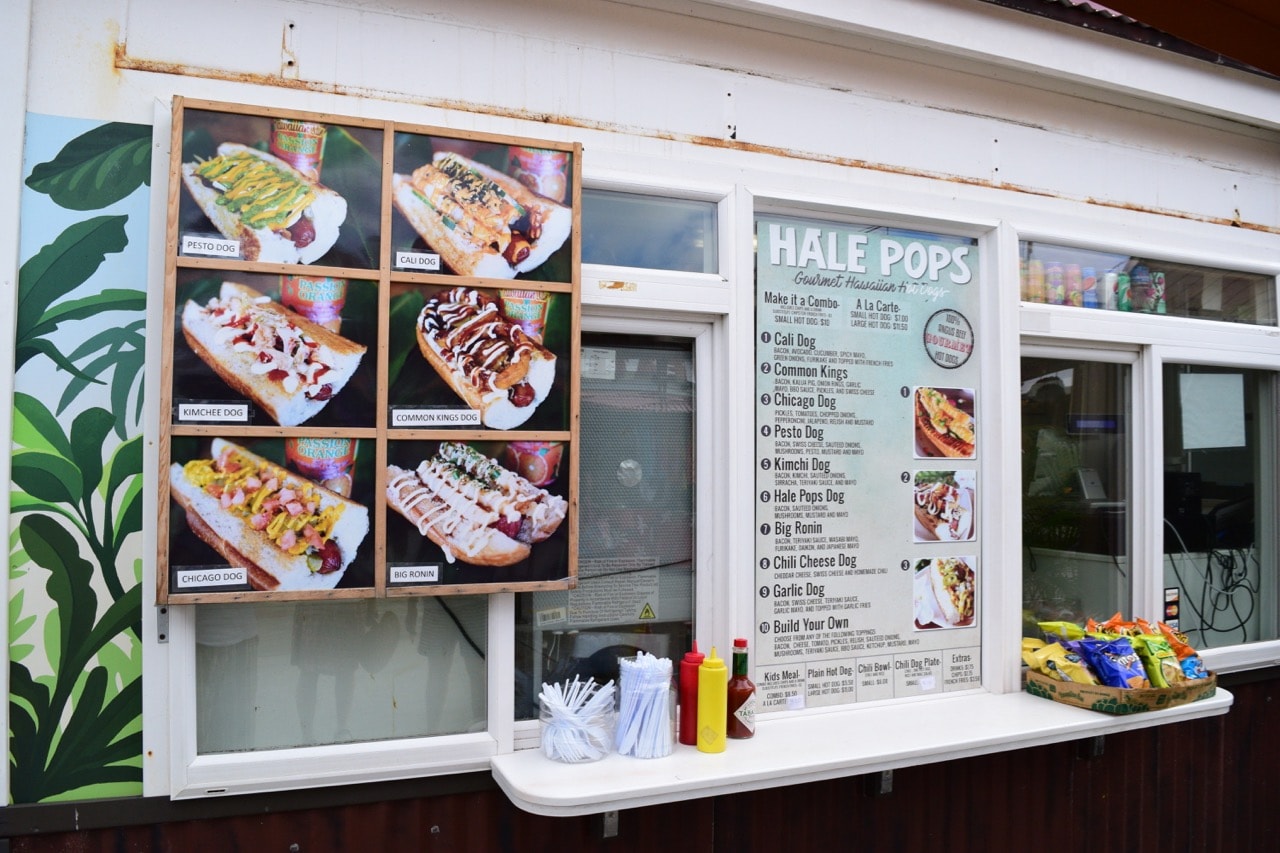
There are various food shops such as smoothies, crepes and hot dogs.
I kind of regretted that I shouldn’t have been greedy for a barbecue lunch. lol
You can learn more about Hukilau Marketplace in this article.
14:27 Canoe Pageant “Rainbow of Paradise”
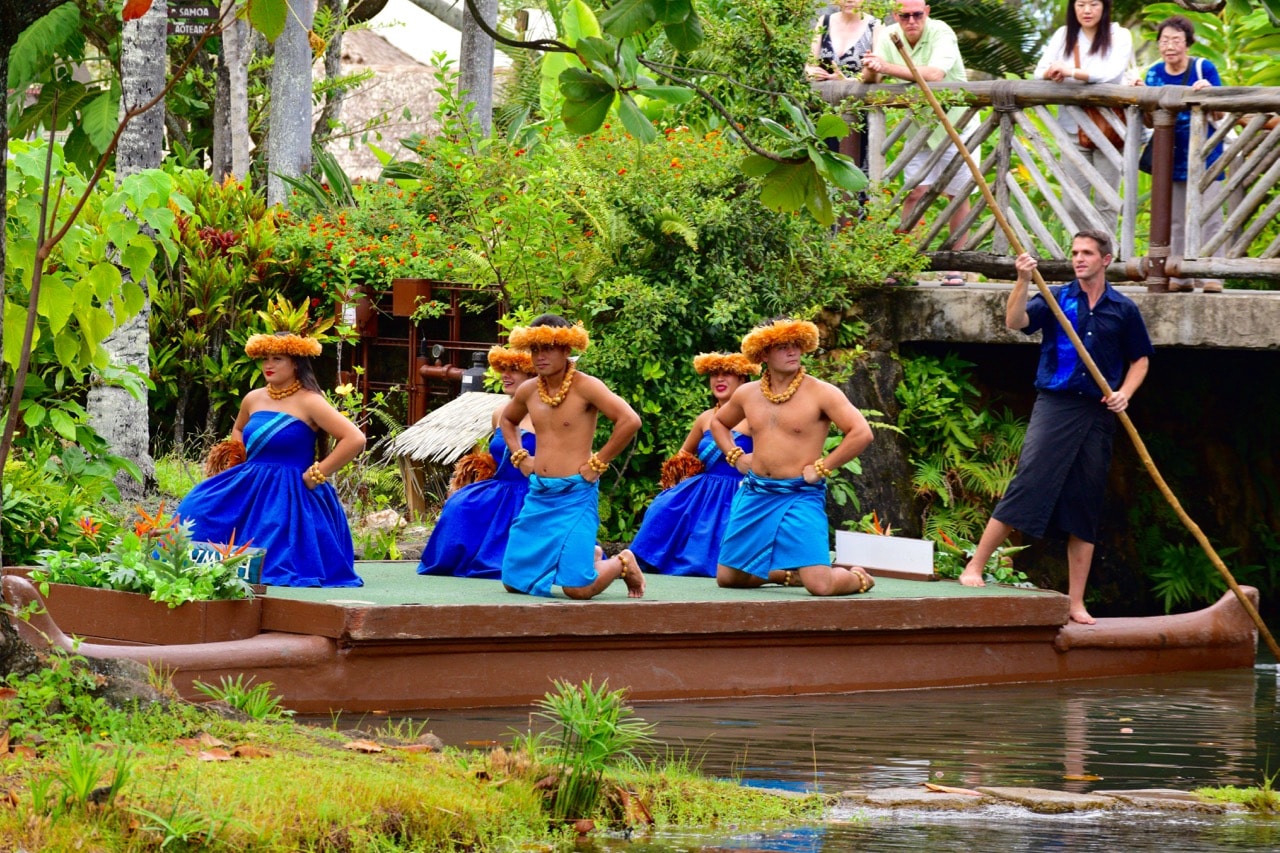
When I arrived at the lagoon 3 minutes before the show would start, the seats were almost full, so I decided to stand in the shade to see the show.
Dancers appeared on canoes in the lagoon located in the center of the park and danced to the live music of the Polynesian islands.
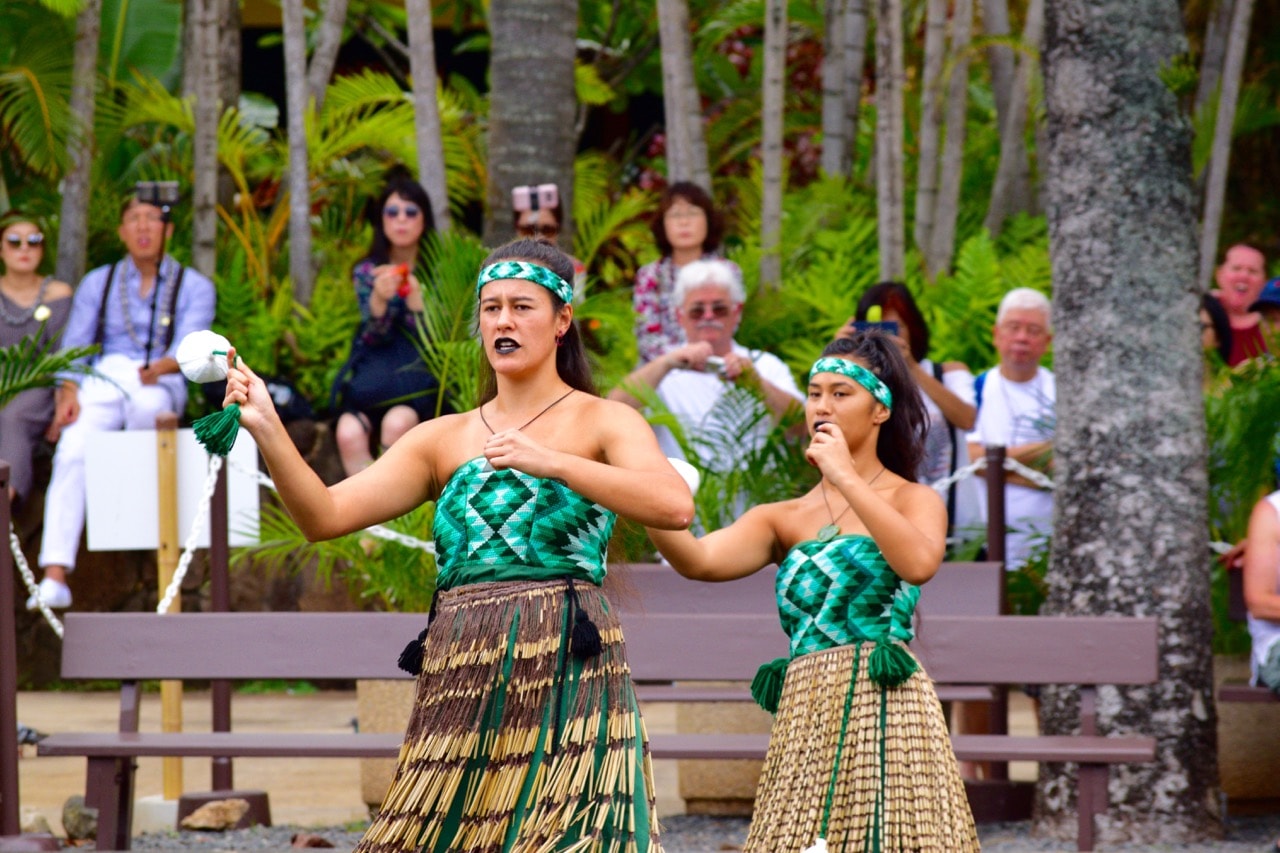
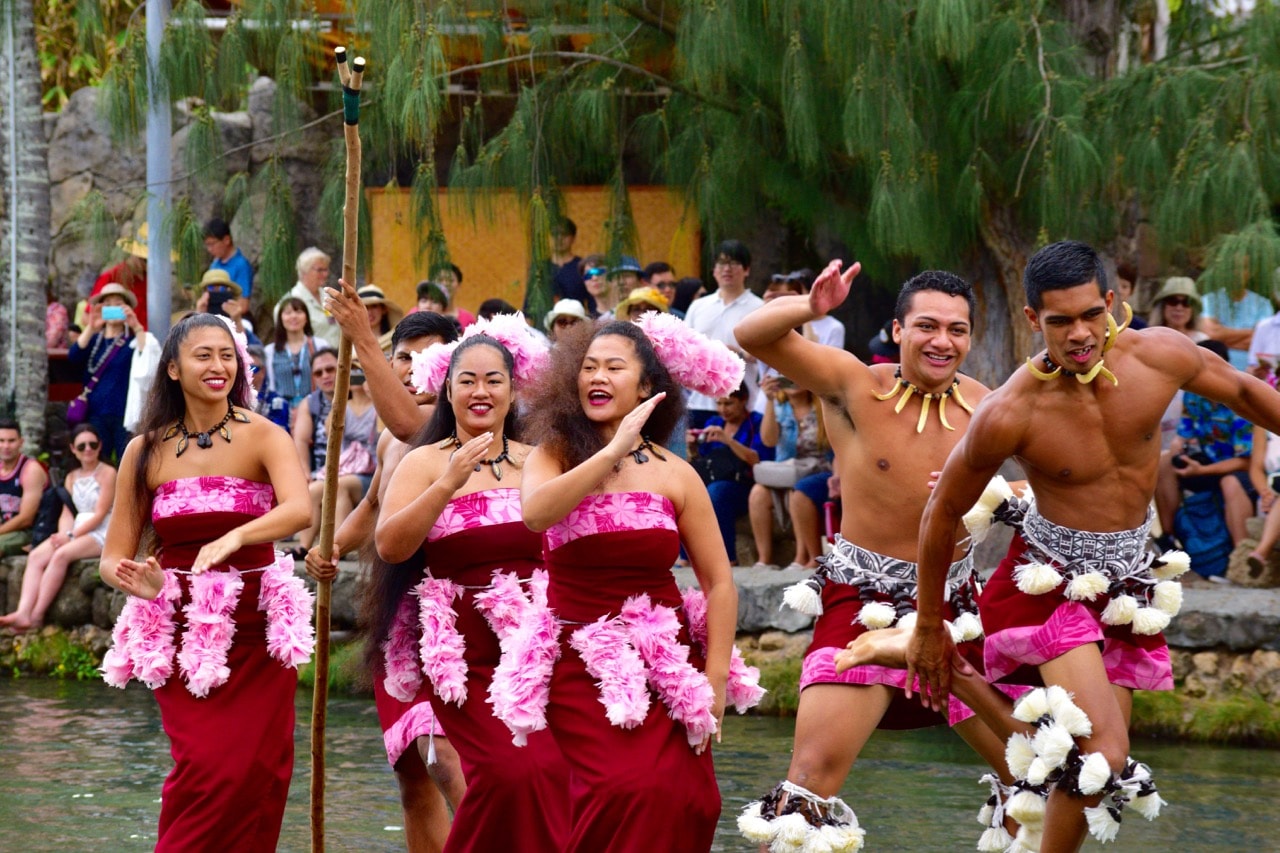
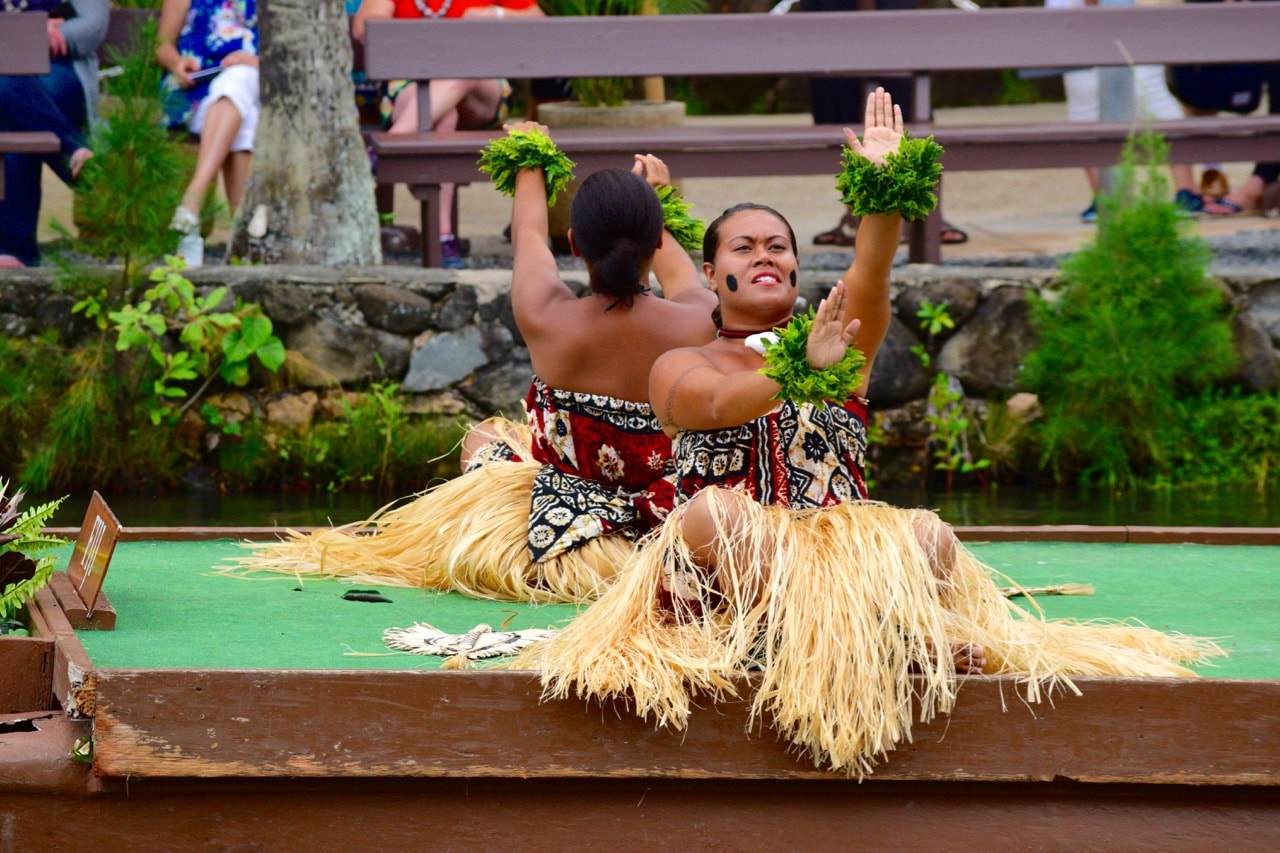
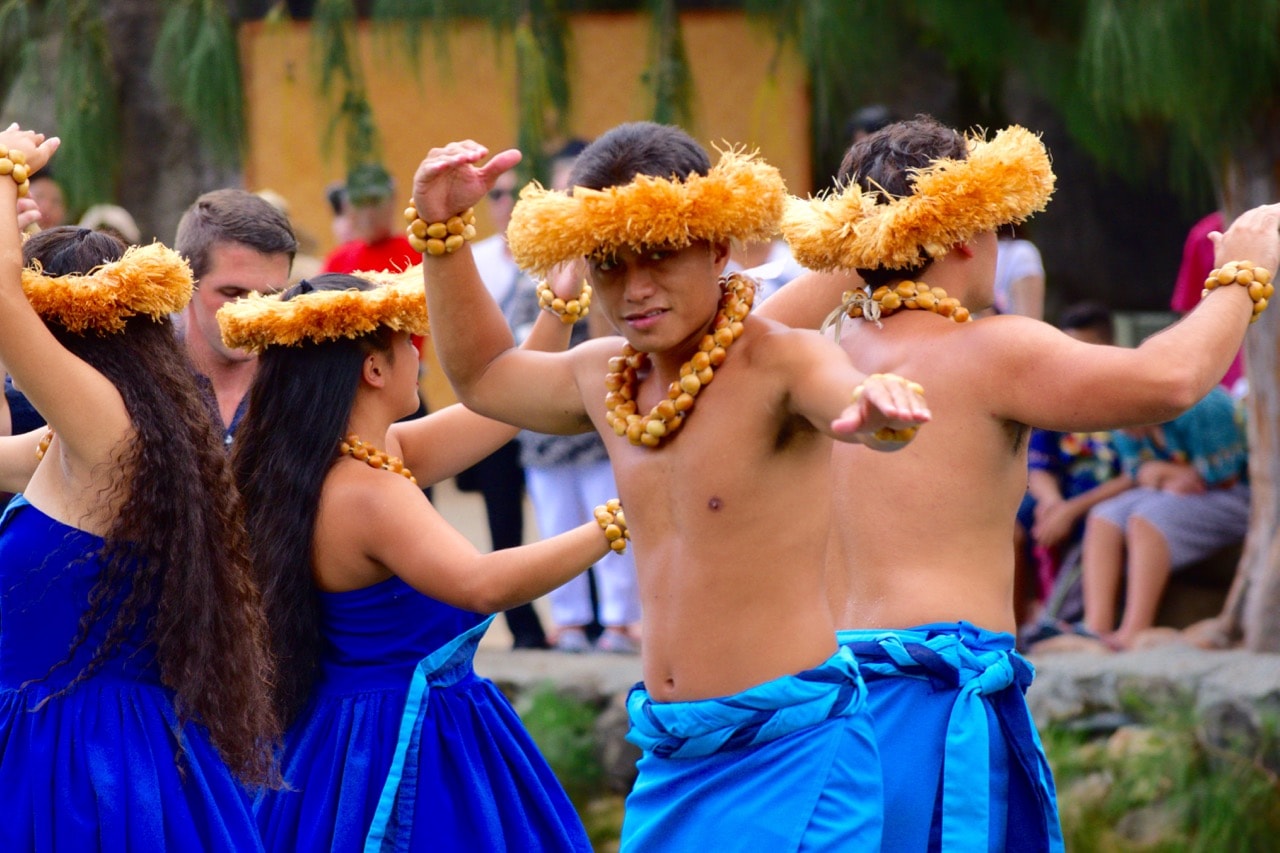

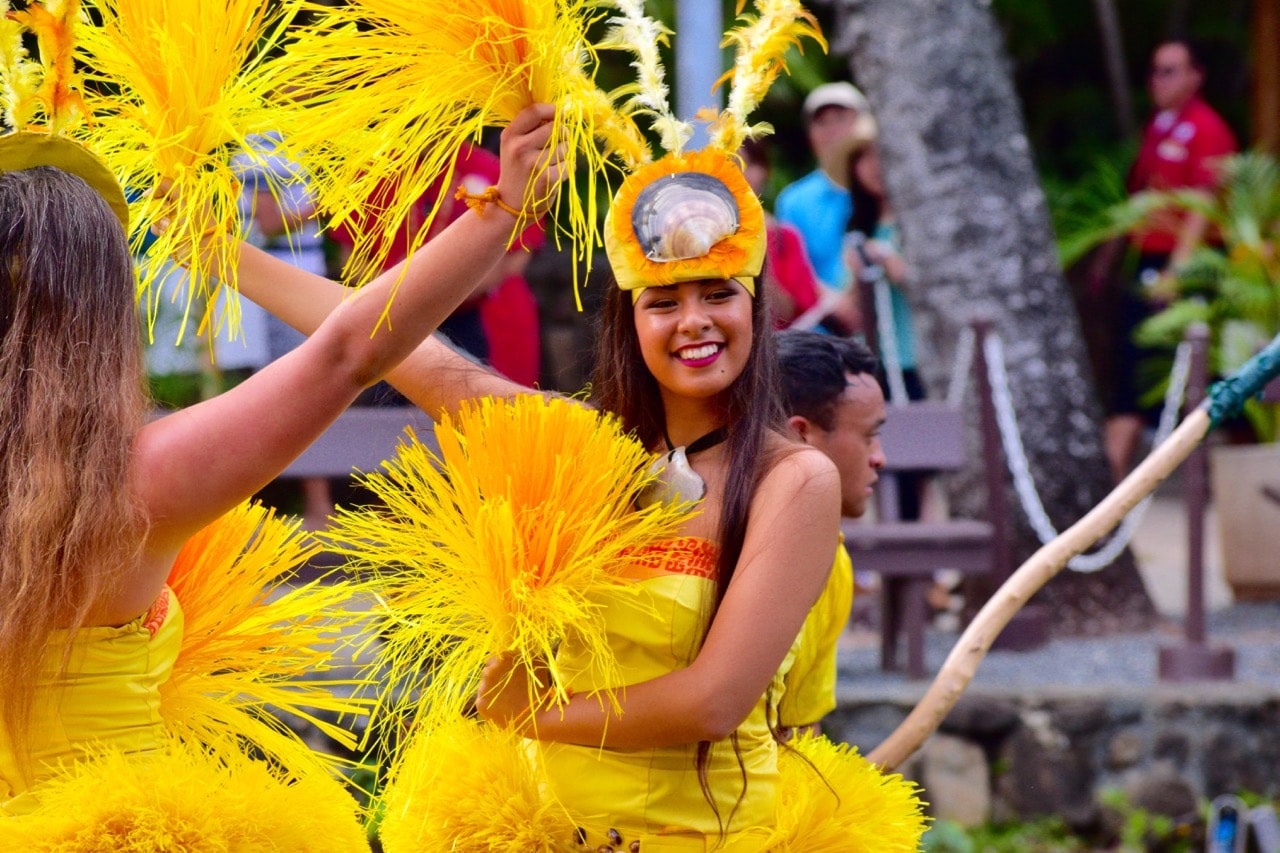
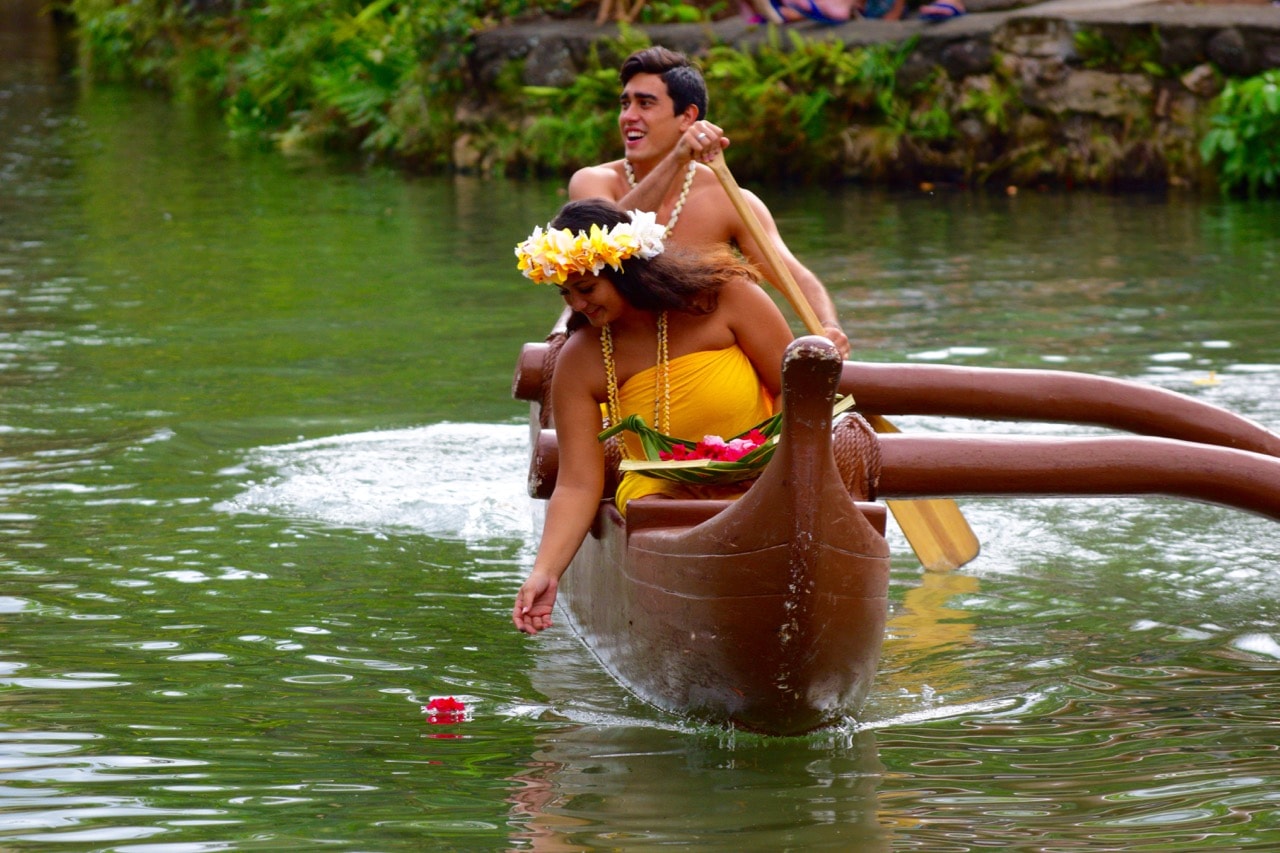
Aotearoa, Samoa, Fiji, Hawaii, Tonga, Tahiti, and so on, the countries change one after another and show various dances.
It was interesting and entertaining at the same time to see music and dances with different styles from country to country.

After the canoe show is over, we will move to our next destination, passing by the Moai.
15:05 Tongan Village
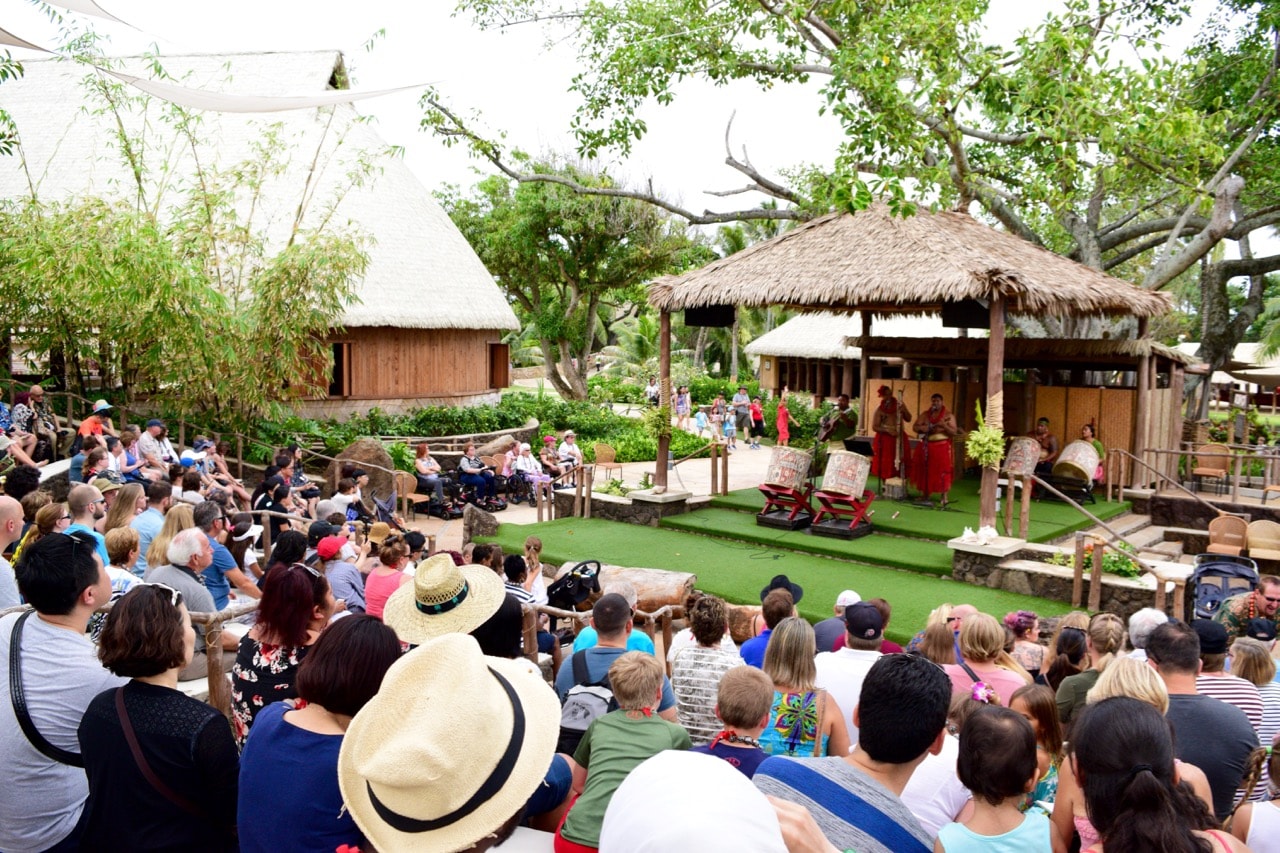
Next is Tongan Village. As was the case during the canoe show, the people of Tonga are always cheerful and I think Tonga is probably the one who screams the most while dancing.
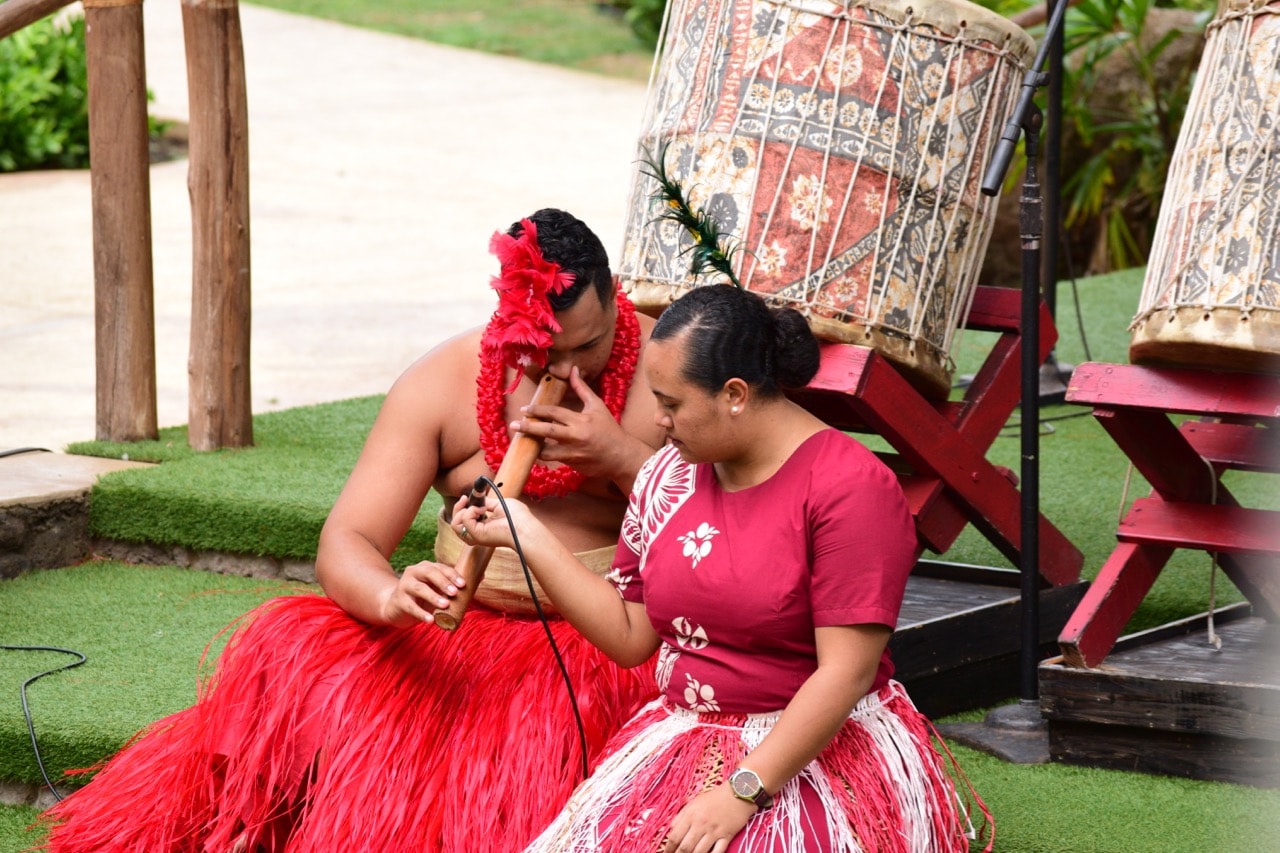
Tongan Village
is another example of traditional Polynesian lifestyles, but with the added royal touch of the scale-replica Fale Fakatu’i or “summer palace” approved for inclusion in the PCC by her late majesty Queen Salote. Other Tongan royalty have visited the PCC many times over the years since.

At the beginning of the show, they have a relatively serious atmosphere, explaining how to blow a flute and a traditional drum.
It gets a lot of excitement as the show progresses.

If you don’t miss the call to “raise your hand”, you may be able to perform the drums on stage, so please give it a try.
15:35 Aotearoa (New Zealand) Village
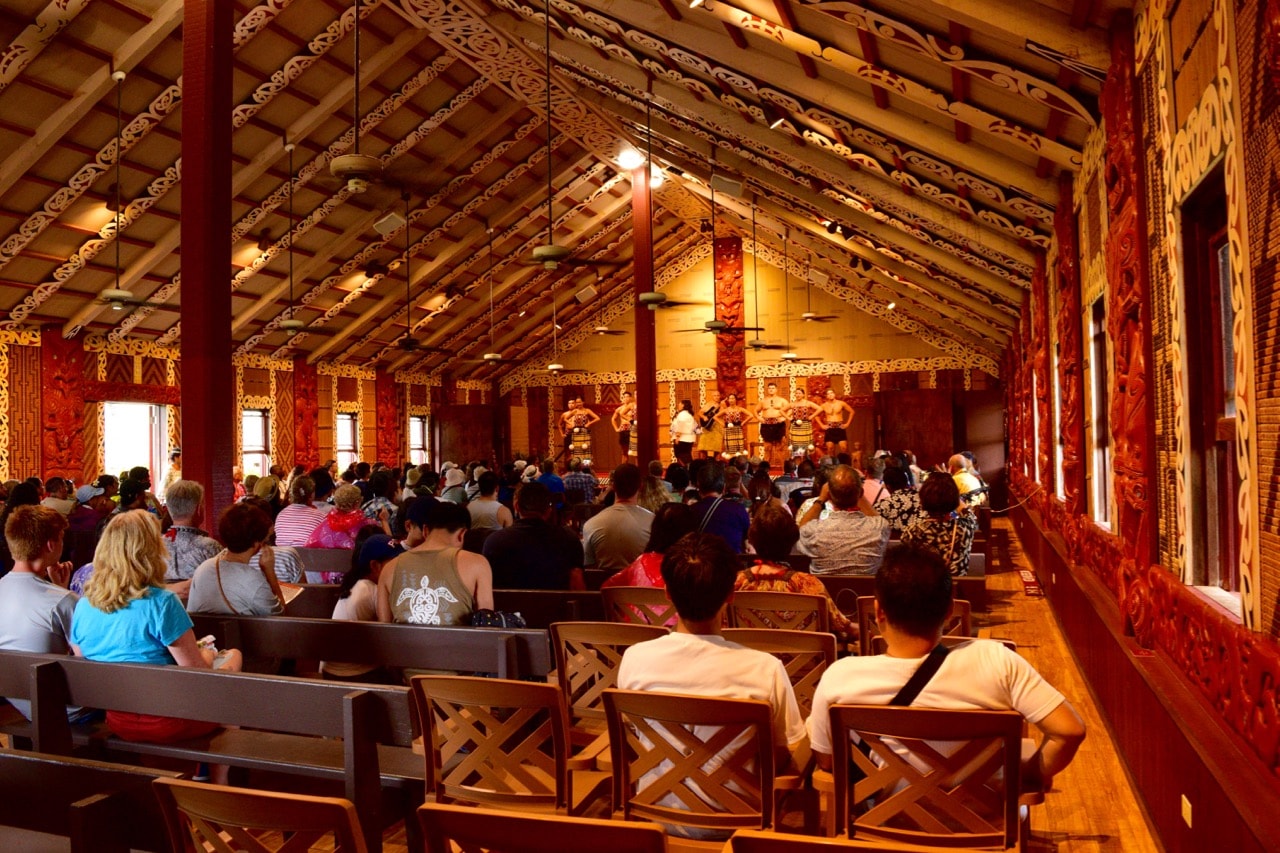
Aotearoa is the Maori name for New Zealand in our language.
This show has a slightly solemn atmosphere. Compared to other Polynesian countries, the music is relatively familiar to modern people.
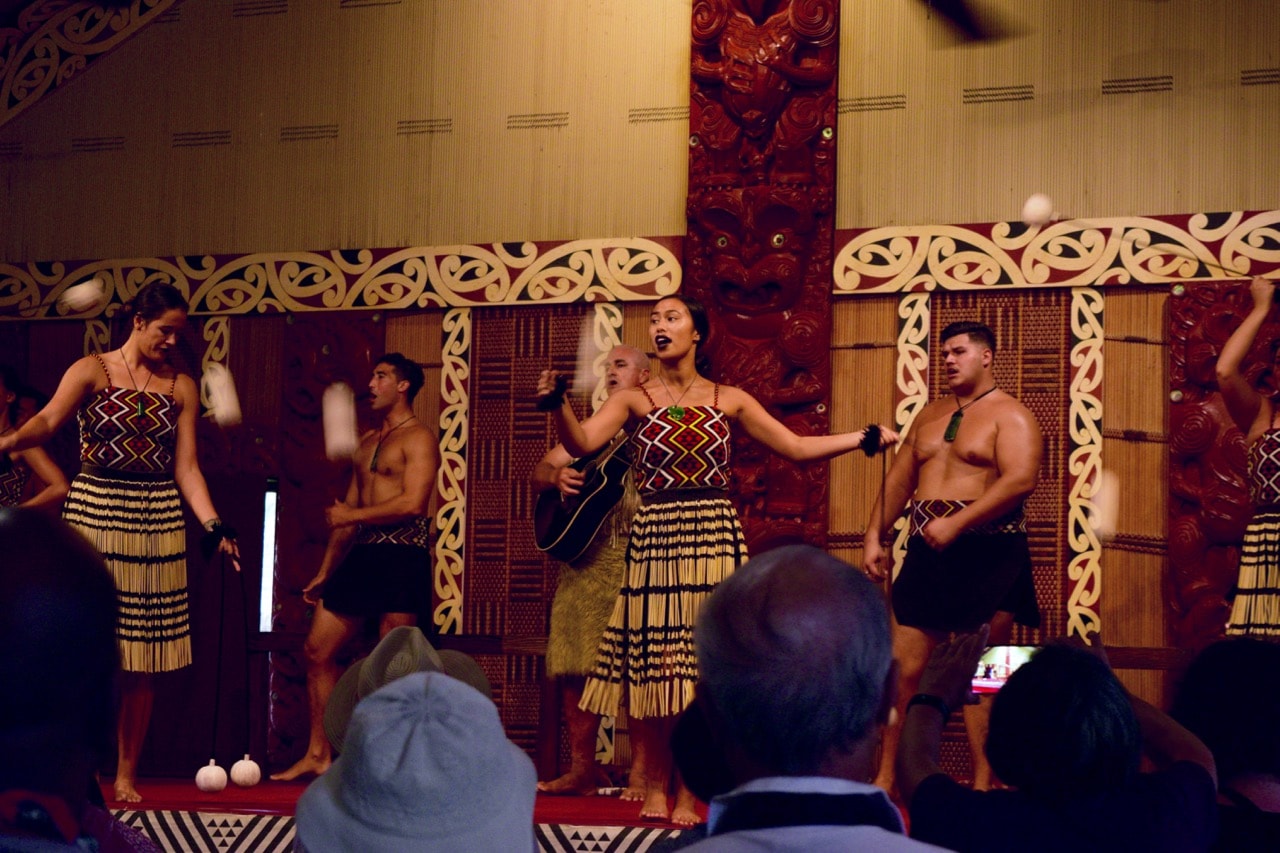
Aotearoa Village
captures the essence of the traditional Polynesian way of life in those beautiful far-off islands. The large whare runanga — meeting house, or house of learning — features superbly hand-carved and decorated panels that actually tell the history of the Maori people. There are also a chief’s house, family dwelling, traditional war canoe and other unique features surrounding the village marae or green.
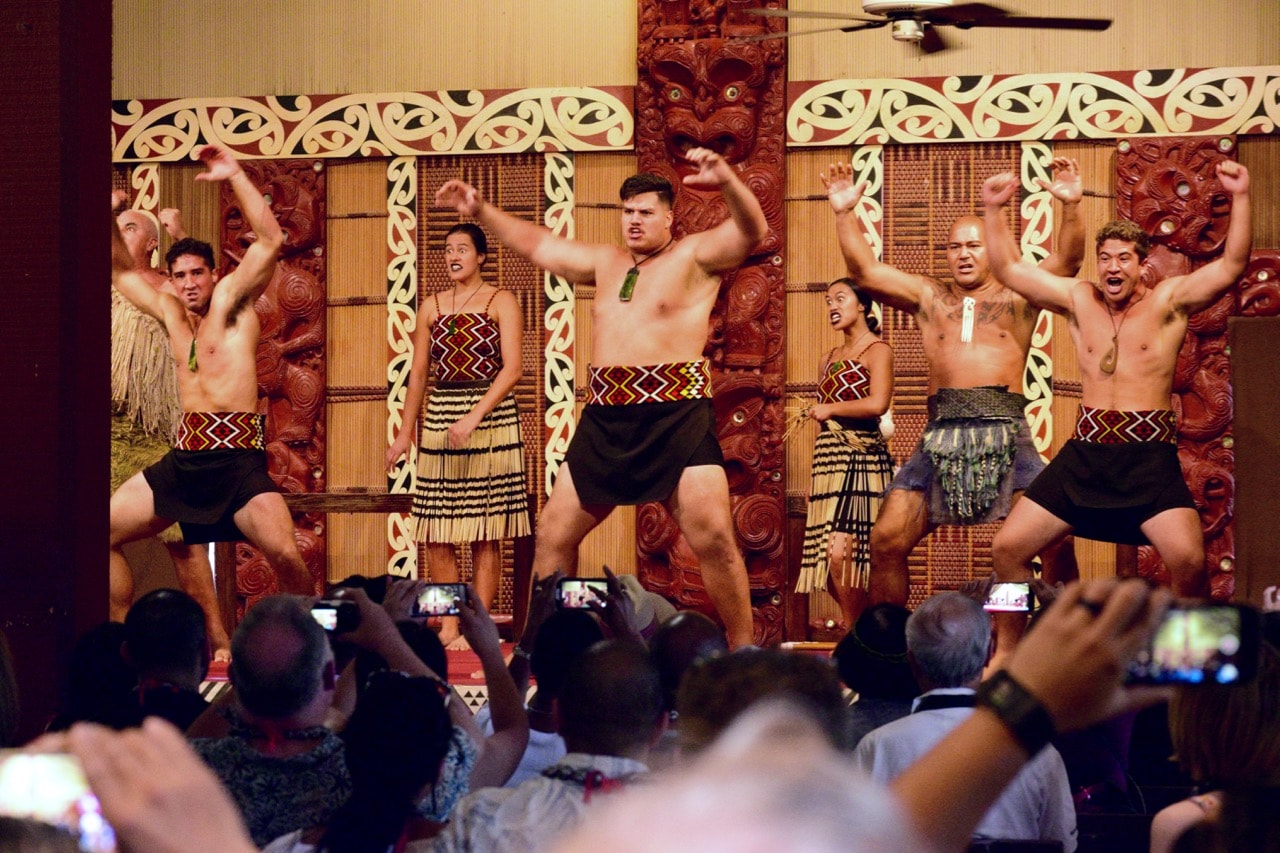
The technique of swinging the poi according to the rhythm and playing it is also a masterpiece, but the main event is probably Haka.
It’s cool no matter how many times you have seen it.
The dance of the warriors is so powerful that the audience is excited.
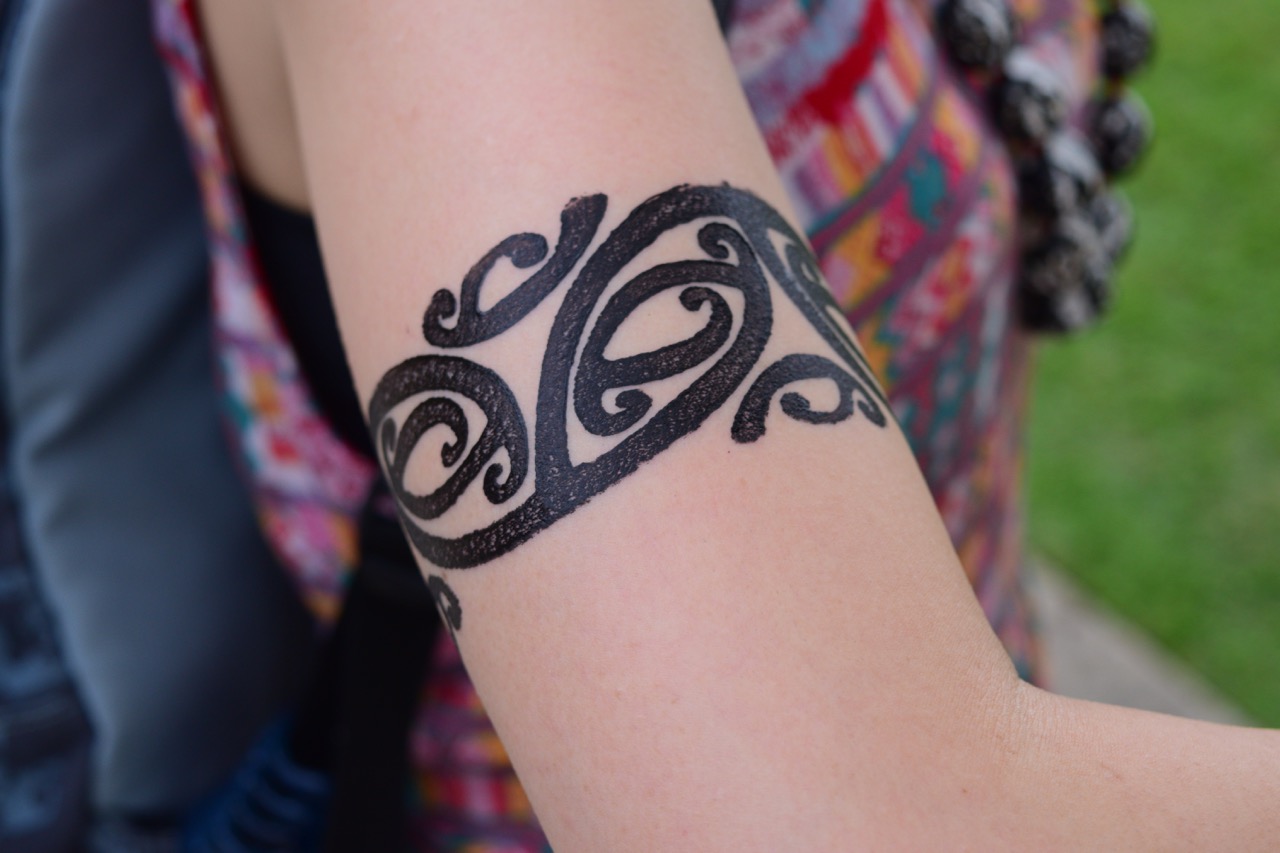
By the way, there are stands in Aotearoa, Tahiti and if I remember correctly, Fiji, that will stamp Polynesian tattoos, so please find one. It’s done in seconds!
It also seems that each village has a different pattern.

16:22 Hawaiian Village
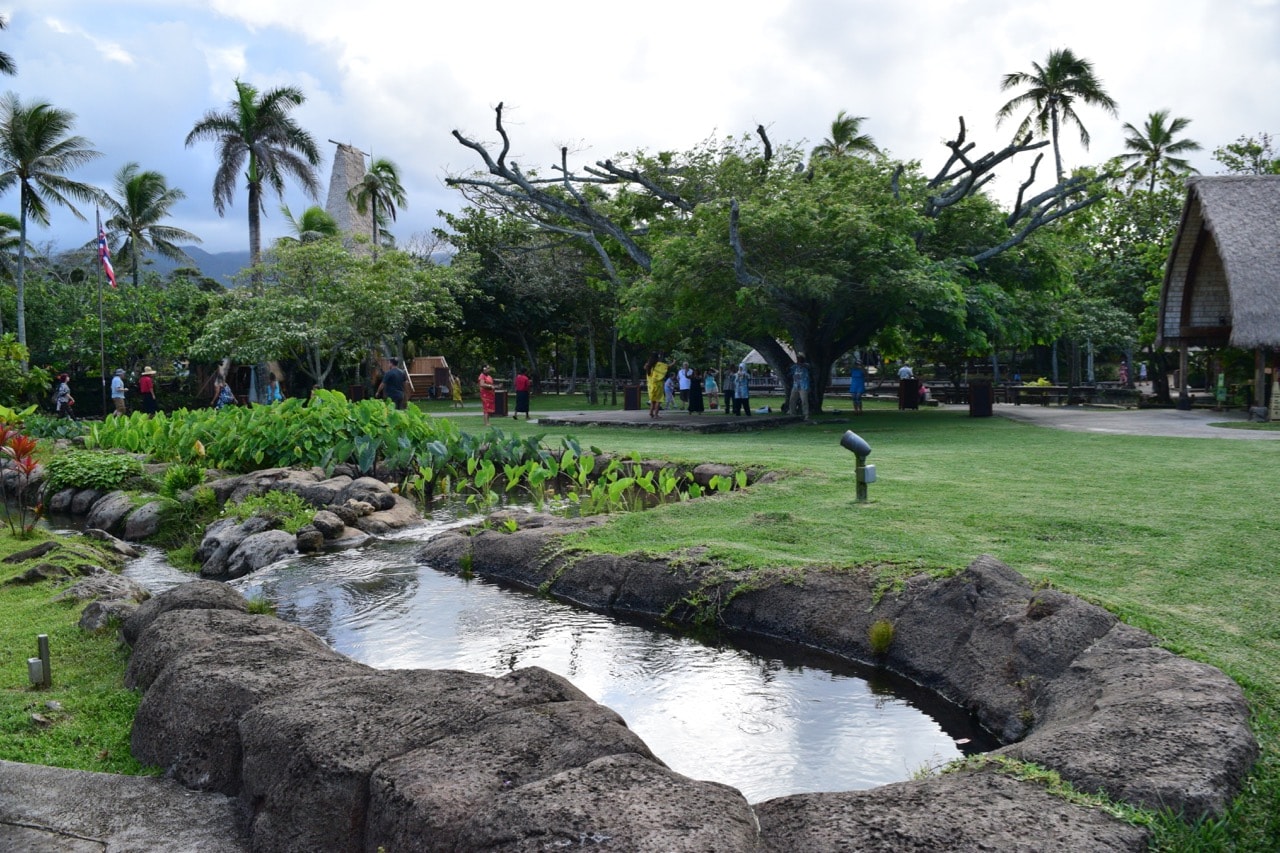
We arrived at Hawaiian Village a little earlier than the show started. So chill.
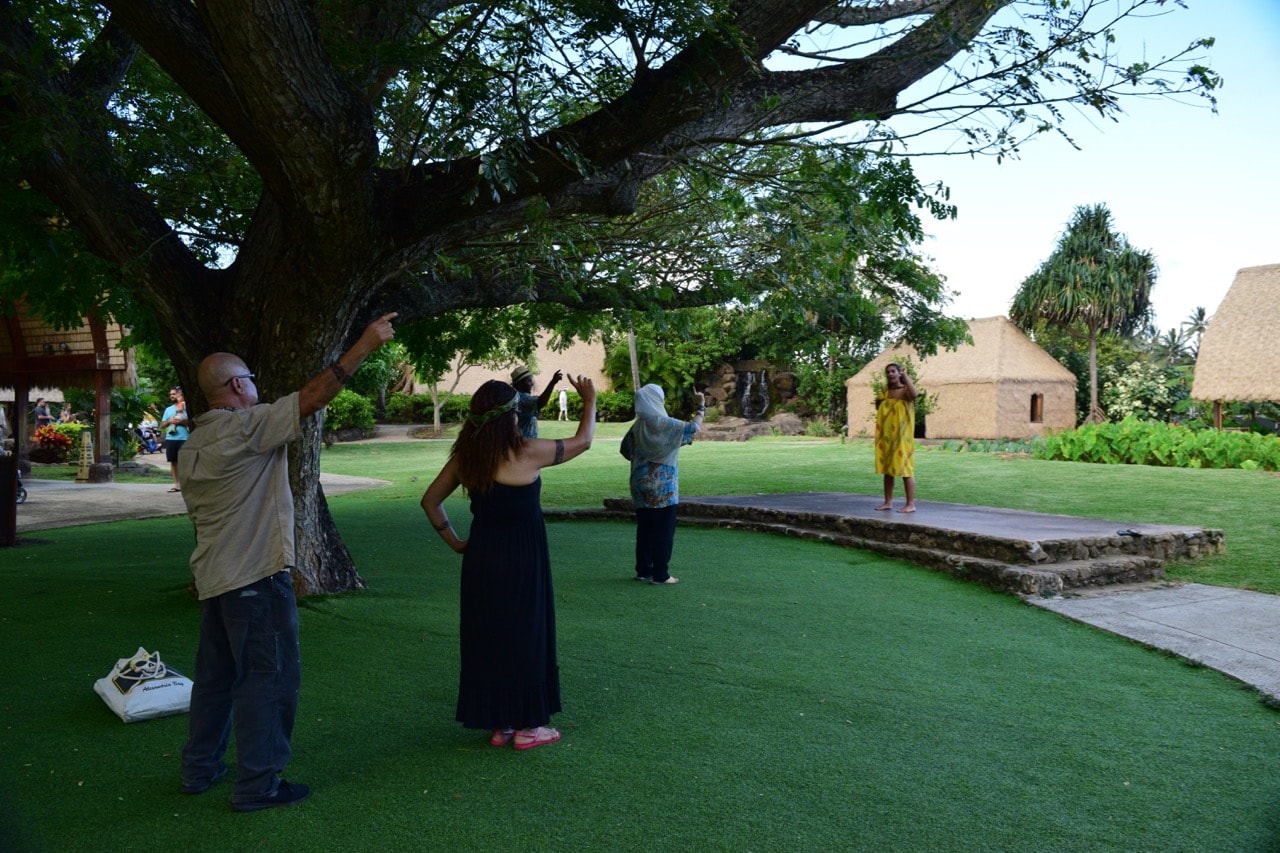
A hula lesson was held on the lawn outside. This also looks like a great way to spend some time in PCC.
Hawaiian Village
portrays the historical Polynesian lifestyle of their home islands, and includes the new Halau Wa’a or “canoe house” where their neighbors in the BYUH Hawaiian Studies program berth their 57-foot traditional twin-hulled Hawaiian sailing canoe, the Iosepa. In addition to waterfalls, a stream, poi sampling and more, another halau or learning center can seat 100+ people.
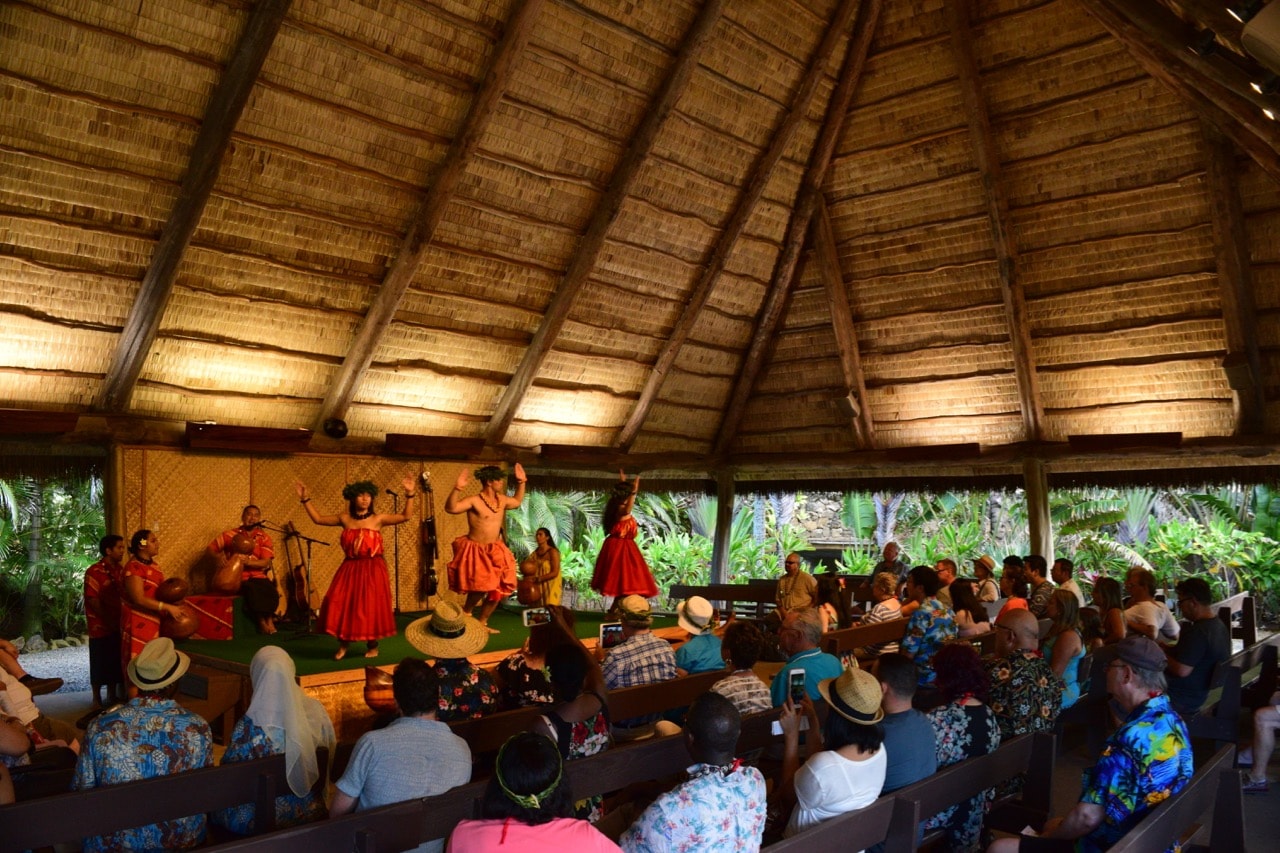
When the show begins, they will show you hula and ukulele performances, explaining the history and musical instruments of Hawaiian music and dance.
One of them was a descendant of the people who first came to Hawaii about 2000 years ago.
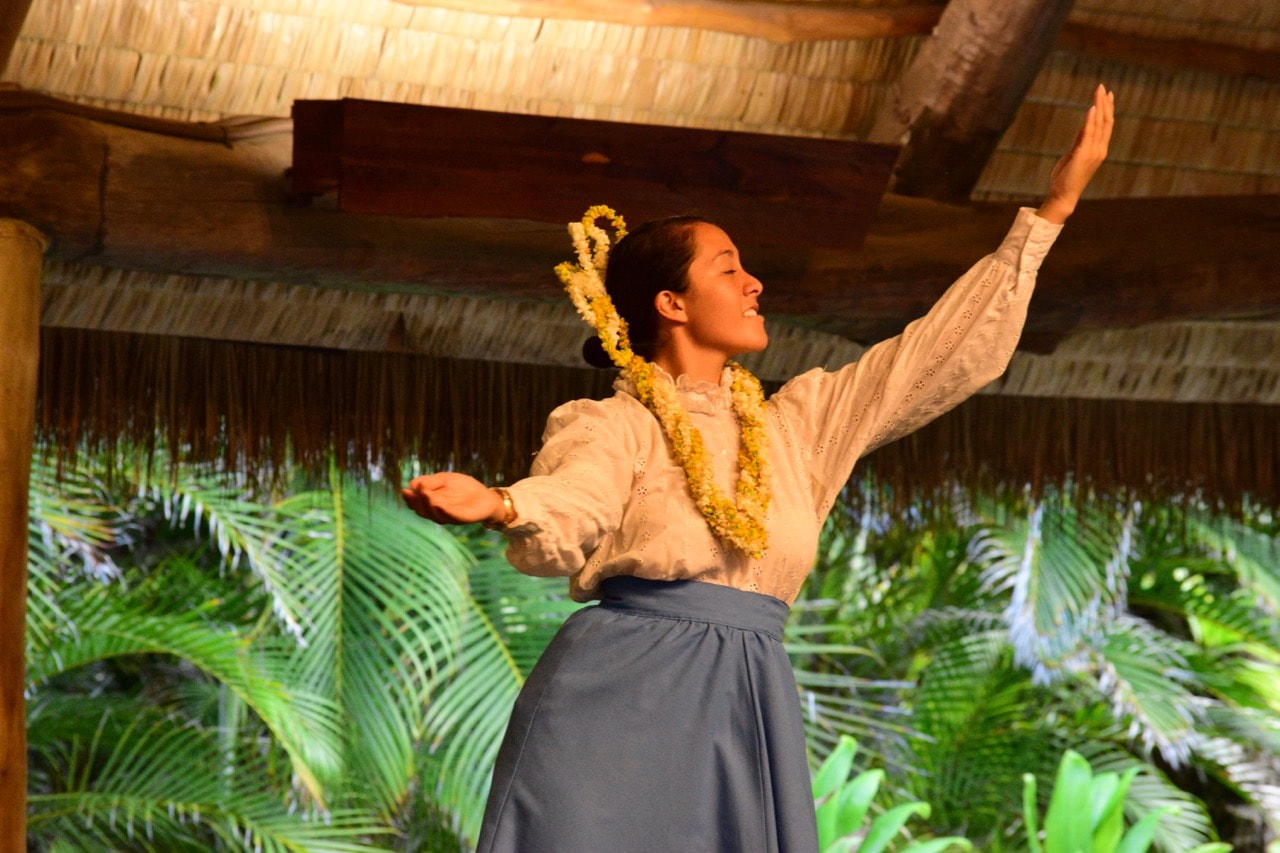

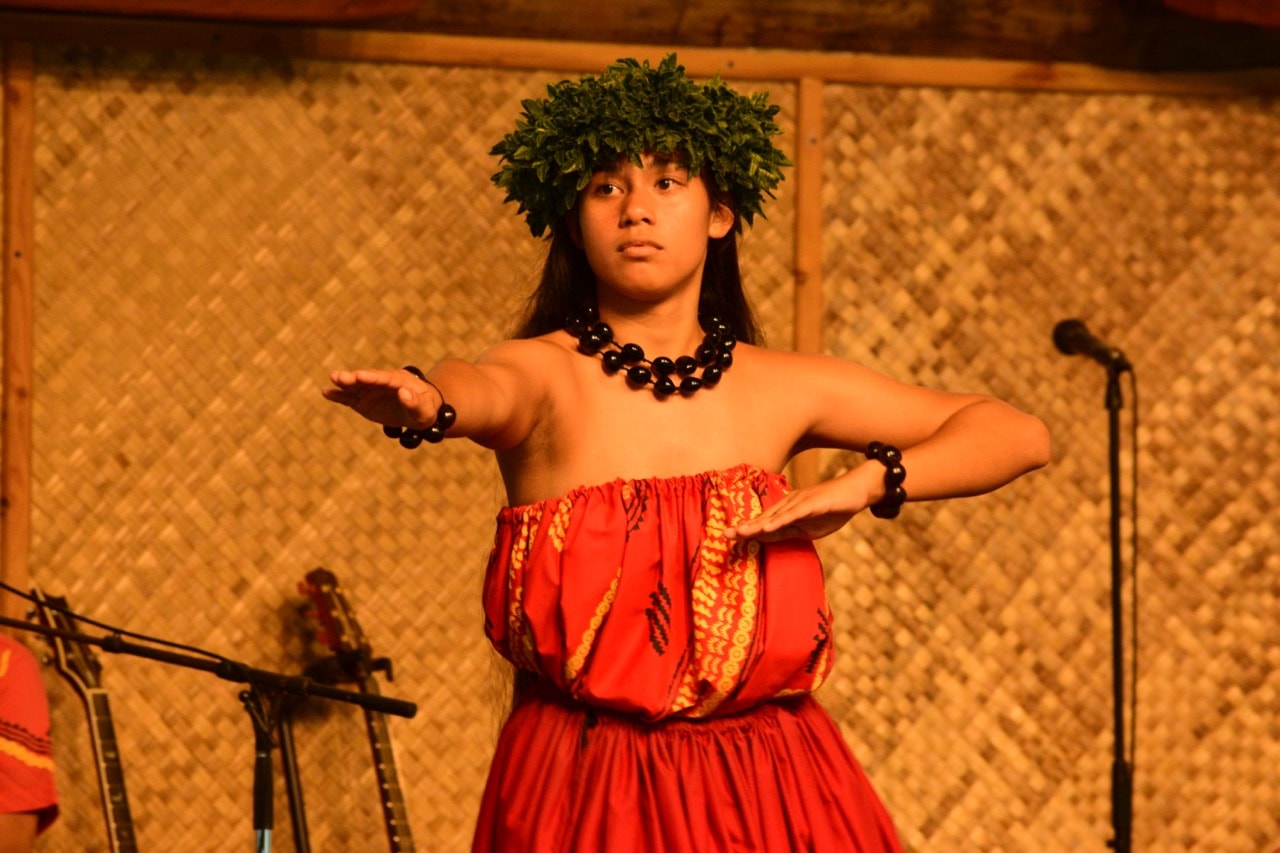
This girl created a mysterious atmosphere.
She first filled the venue with a tense atmosphere with Hula Kahiko (traditional hula), and her ukulele was quite skillful. She played the ukulele on her back in high-tempo songs and was very cool.
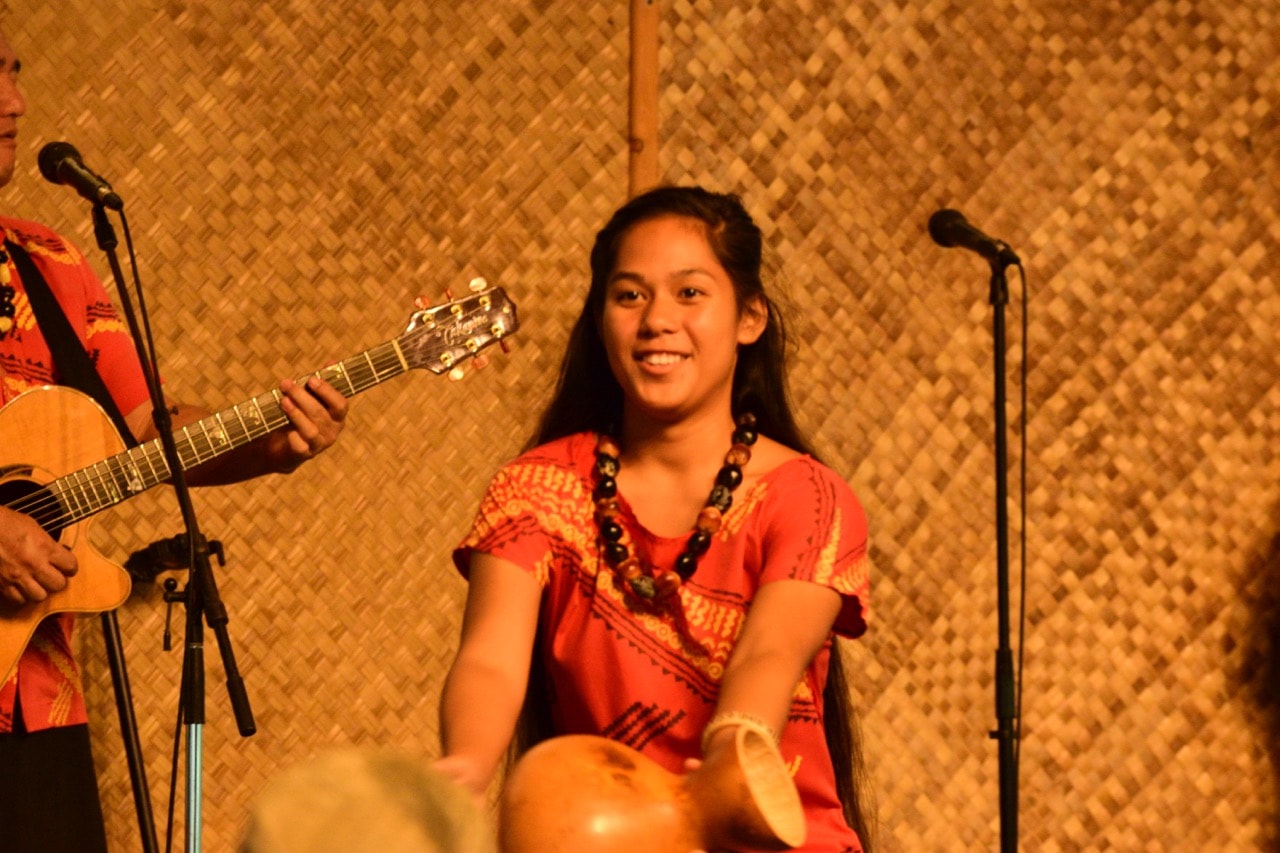
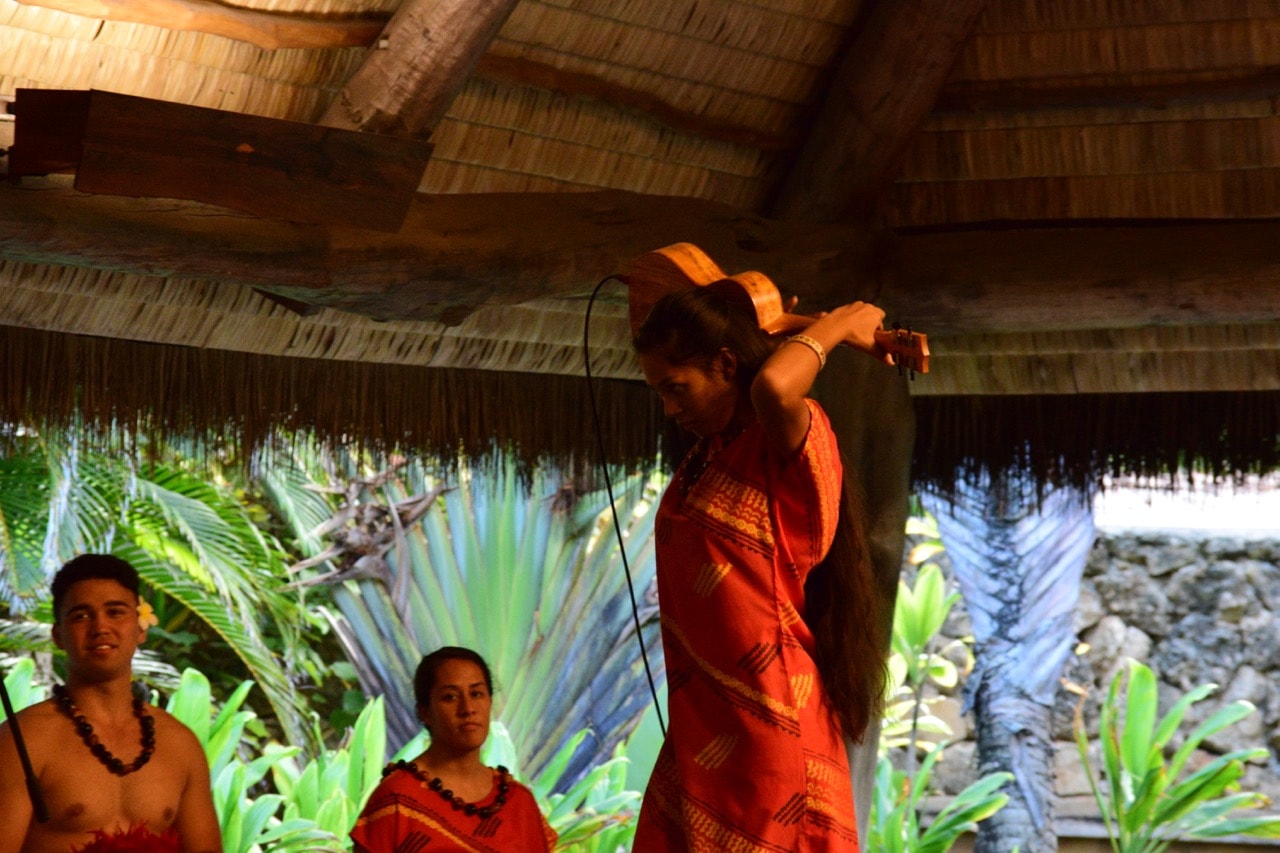
After the show at Hawaiian Village, I’m moving a little hurry in time for the screening of “Hawaiian Journey,” which I definitely wanted to see this time (or rather, every time I come to PCC).
16:59 Hawaiian Journey Theater
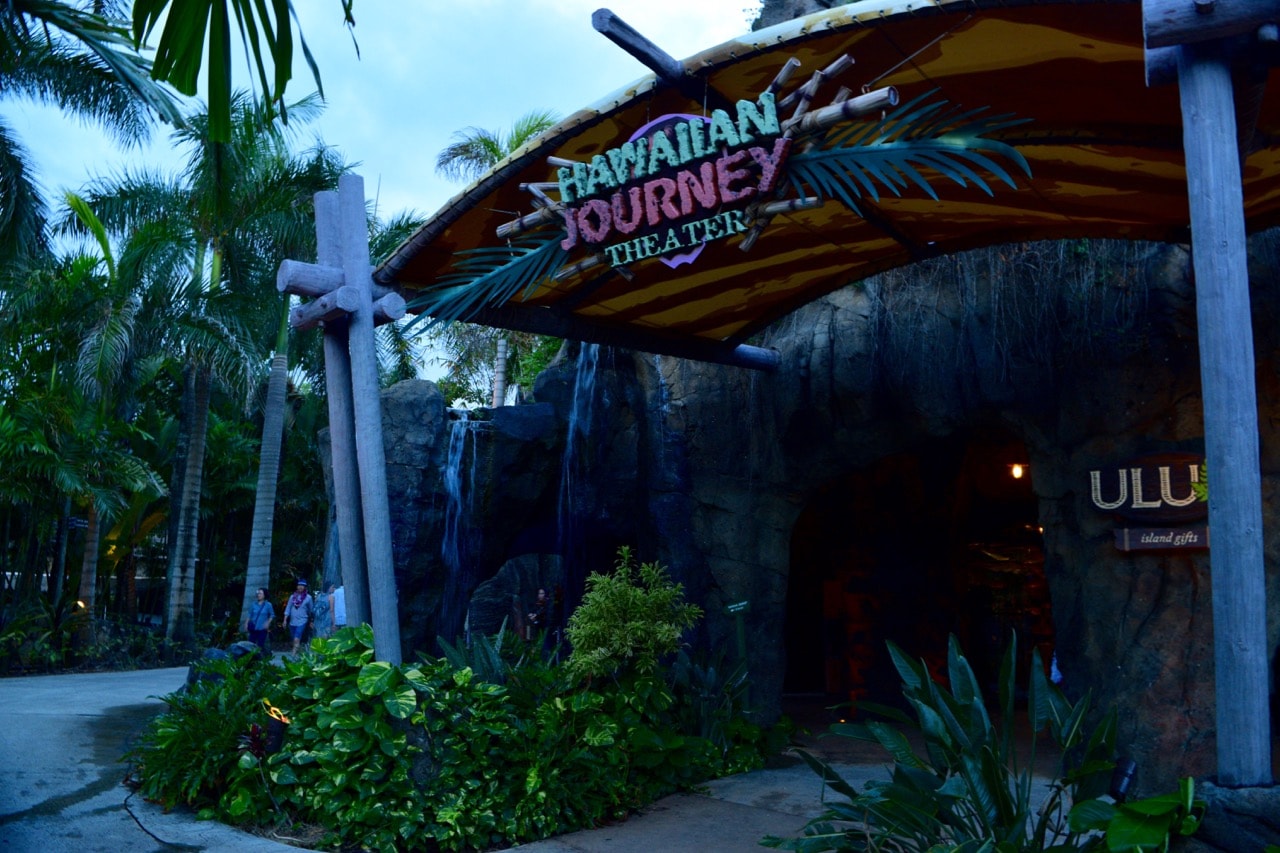
This is the “Hawaiian Journey Theater”. Once inside, the sound of the waves is flowing before the screening, which is very comfortable.
A huge screen shows about 15 minutes of footage of Hawaii’s wilderness, which is highly recommended. You can enjoy images of Hawaii’s most precious natural scenery along with beautiful and majestic Hawaiian music.
There was a short promotional video for your reference. Obviously, the main story is many times more amazing than this.
While watching the untouched forest, the new land of lava, and the whales going through the sea shining in the setting sun on the big screen, I was impressed that “Hawaii still has such a place.”
The content of the narration also contains a wonderful message about life.
In fact, I and my sister who went with me saw it a few years ago, but I came again thinking “I want to see it again!”.
However, while the seats move according to the video, letting you enjoy the full 4D experience, some people get motion sickness. So if you are worried, we recommend you take the normal seats installed at both ends of the venue.
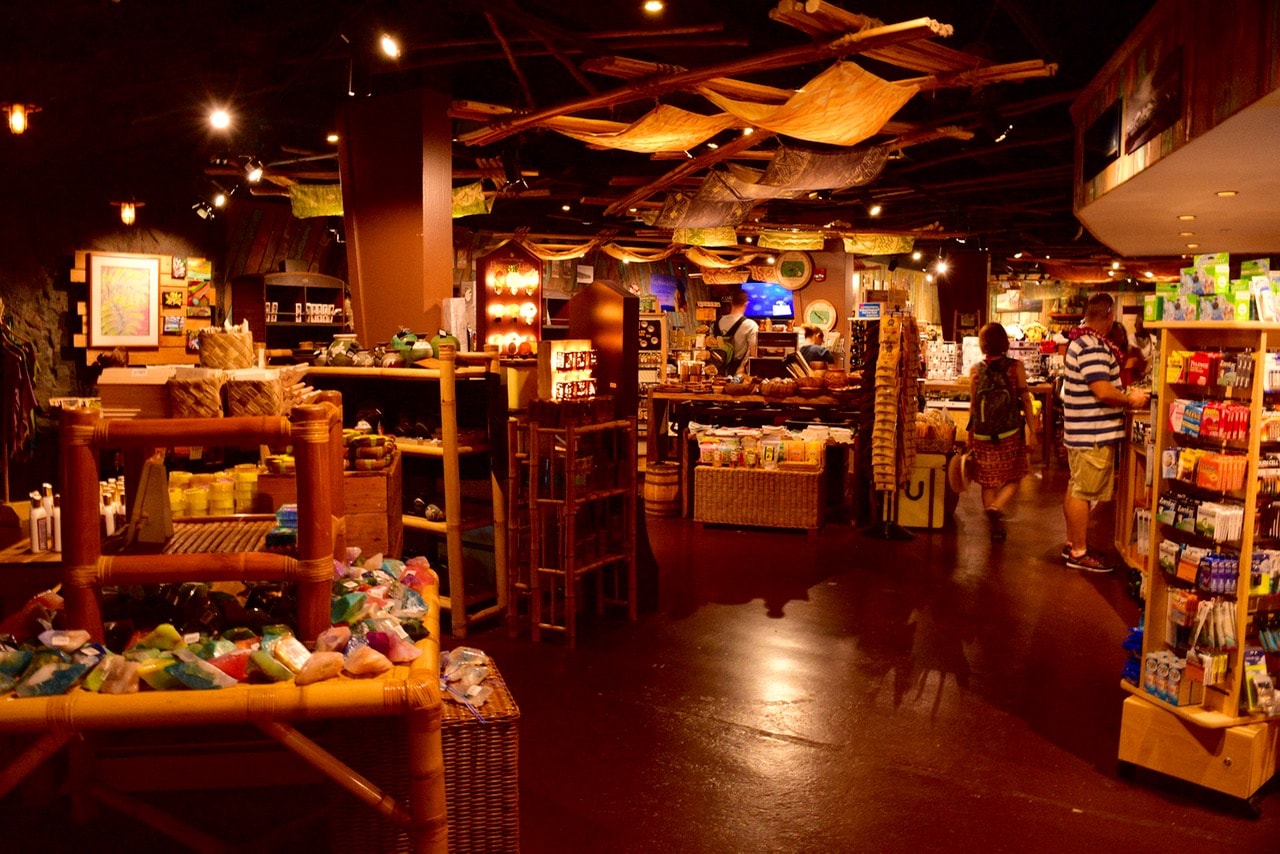
After watching the movie, I explored the gift shop just outside the Hawaiian Journey Theater.
Leave the gift shop, we are going across the lagoon to Hale Aloha, which we also had the barbecue lunch.
17:40 Dinner at “Ali’i Luau”
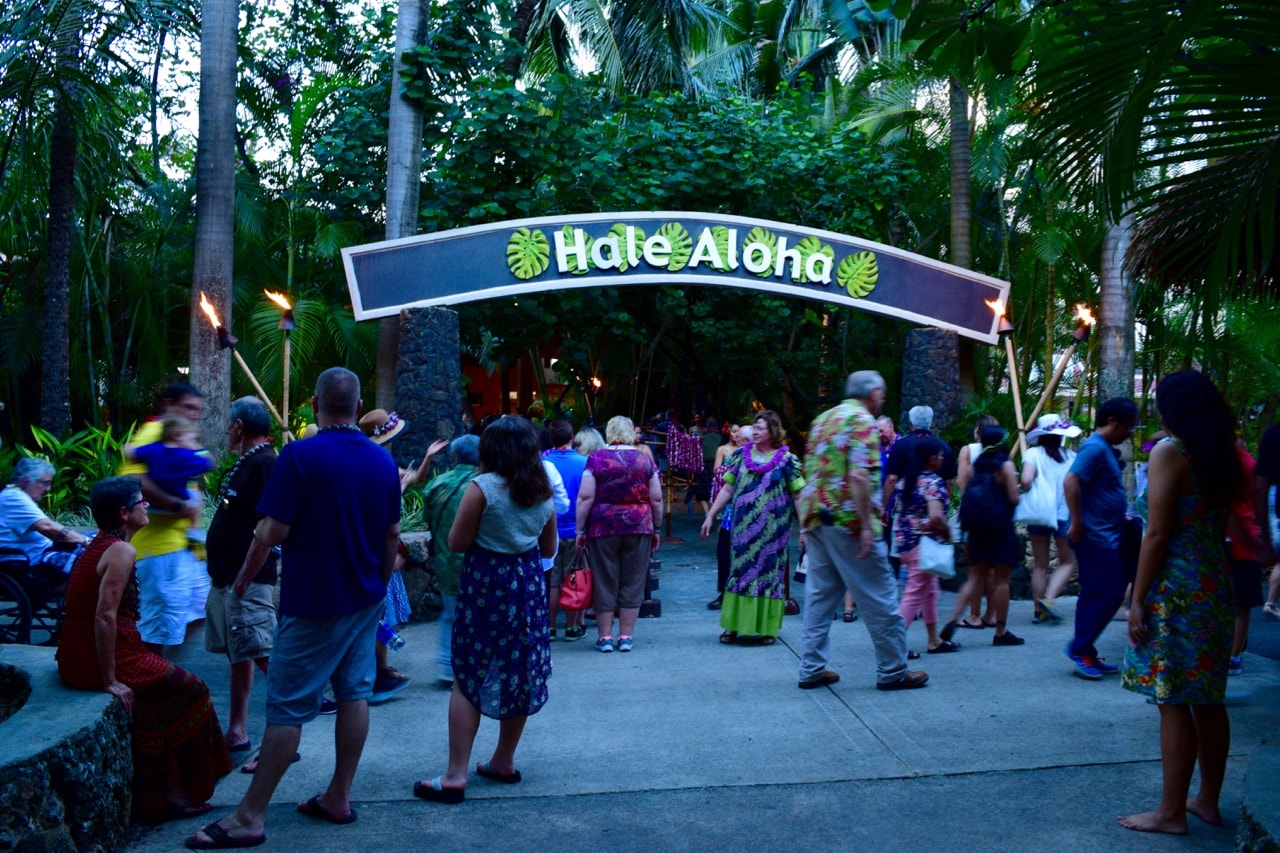
“Ali’i Luau” is starting soon as we realize the day at the Polynesian Cultural Center is slowly coming to an end.
Ali’i Luau is the dining option that comes with the tour packages below.
Another dining option inside PCC is the Gateway Buffet, which I will explain later.

When we received the warm welcome by flower lei and entered, the buffet line was already open. So I’m going to get a meal right away.
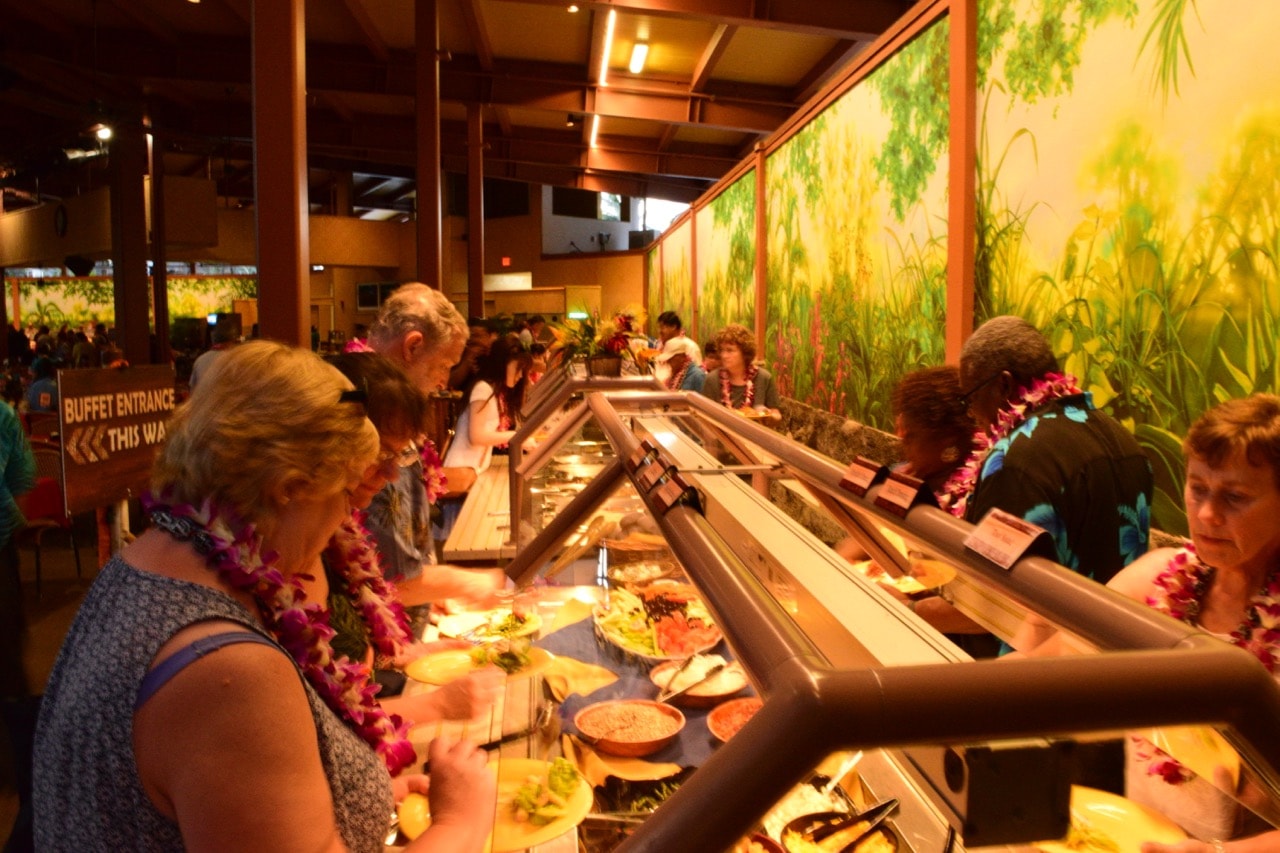
Hale Aloha
or “House of Love” dinner theater is spectacular Polynesian setting where groups of up to 650 people can enjoy meetings topped off by a delicious luau feast. This amphitheater-style venue also features its own stage for speakers or entertainment, waterfalls, palm trees, an imu (Hawaiian oven) pit, terraced seating and concrete flooring.

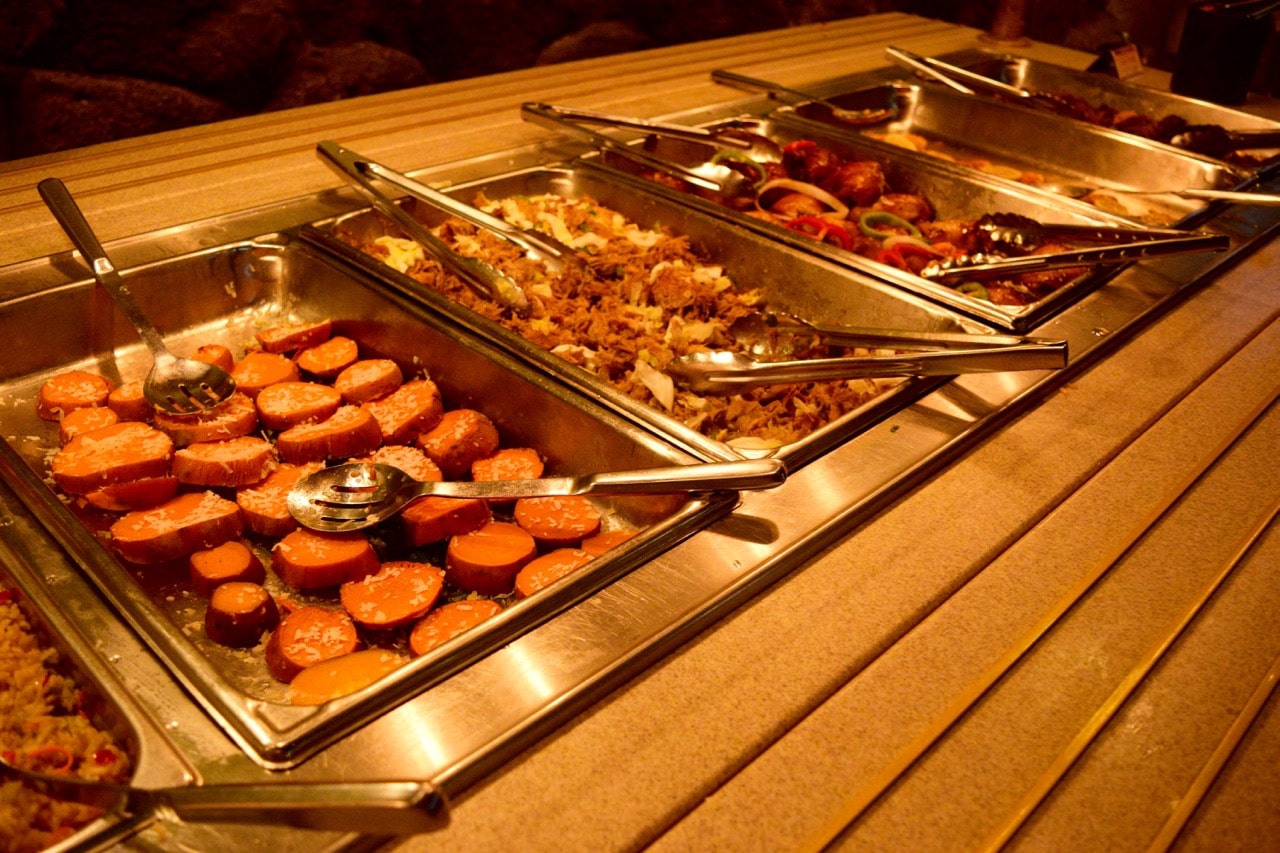
The food menu focuses on traditional Hawaiian cuisine, and here are just a few examples of the food you can try at Ali’i Luau.
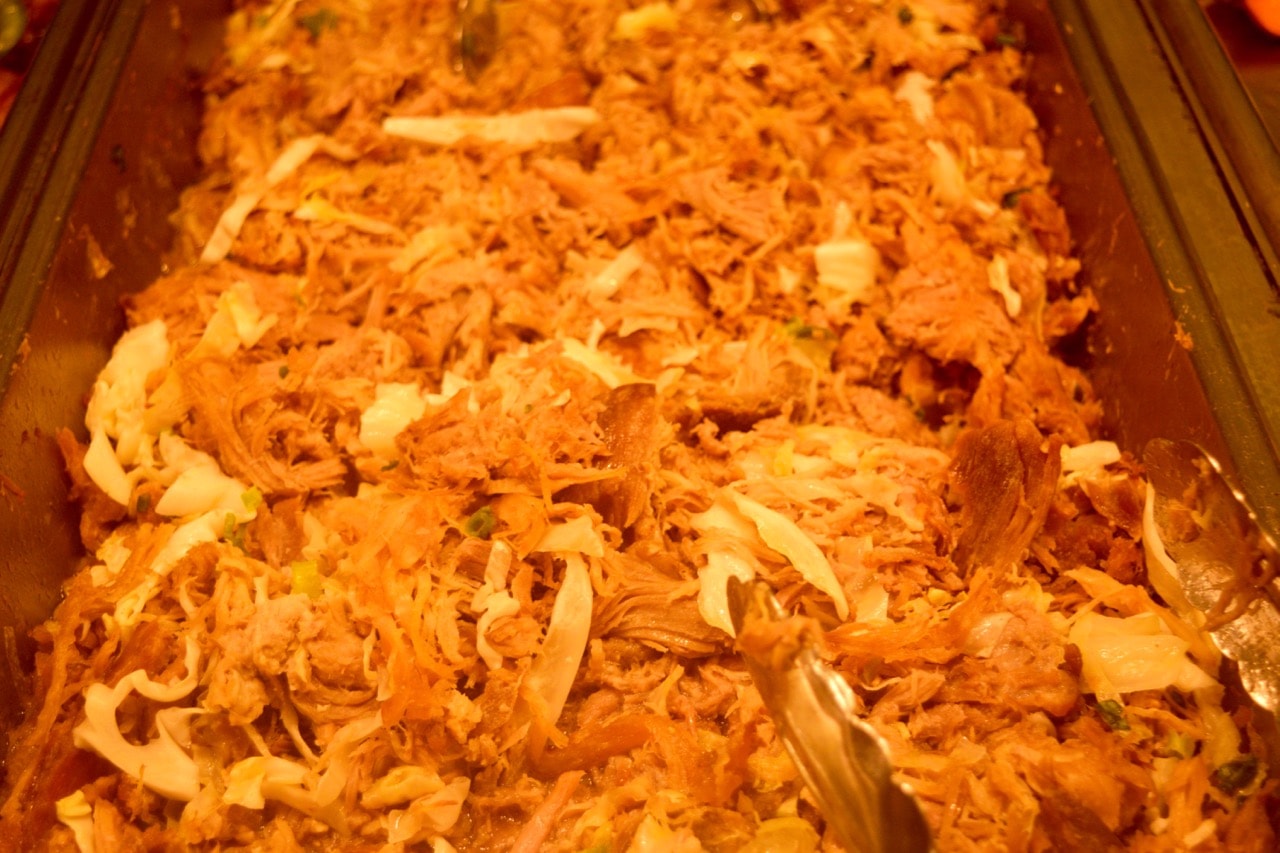
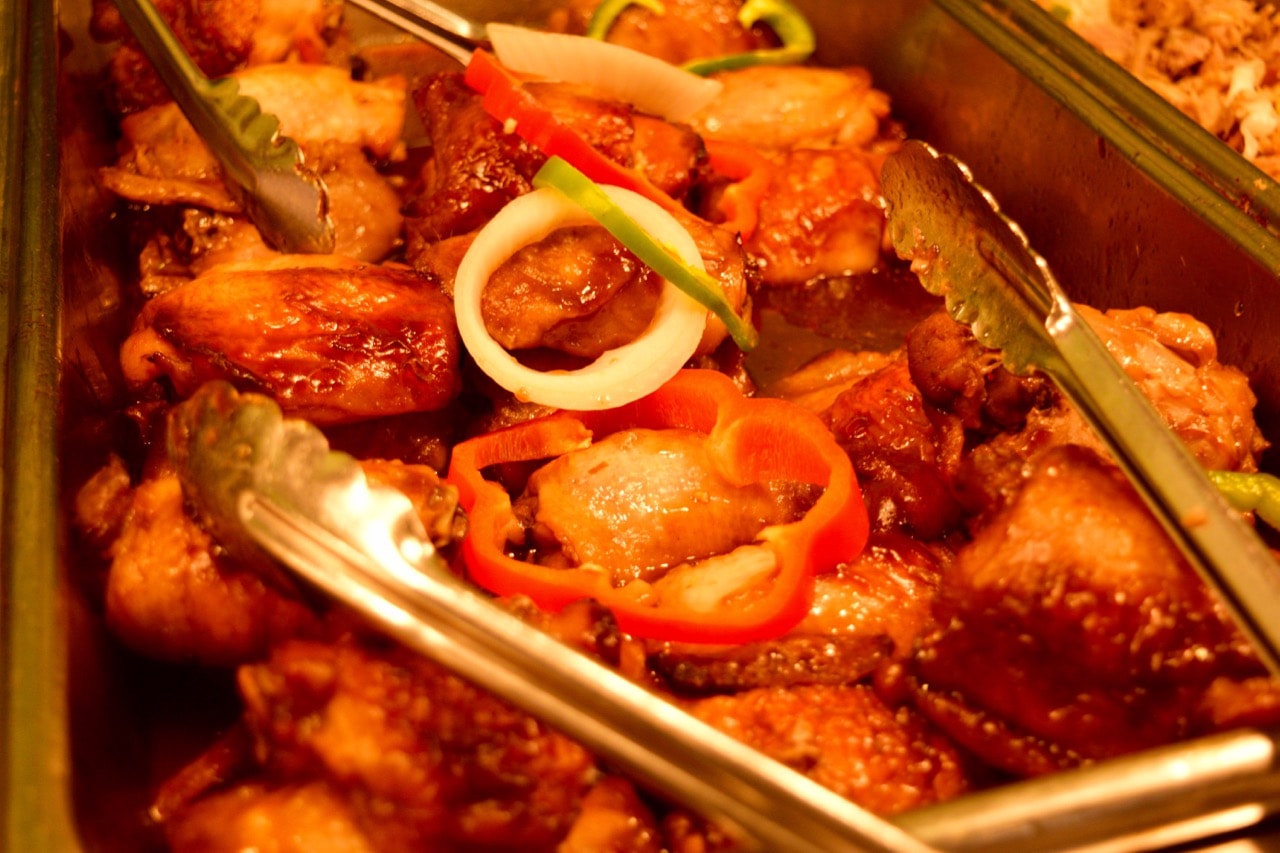

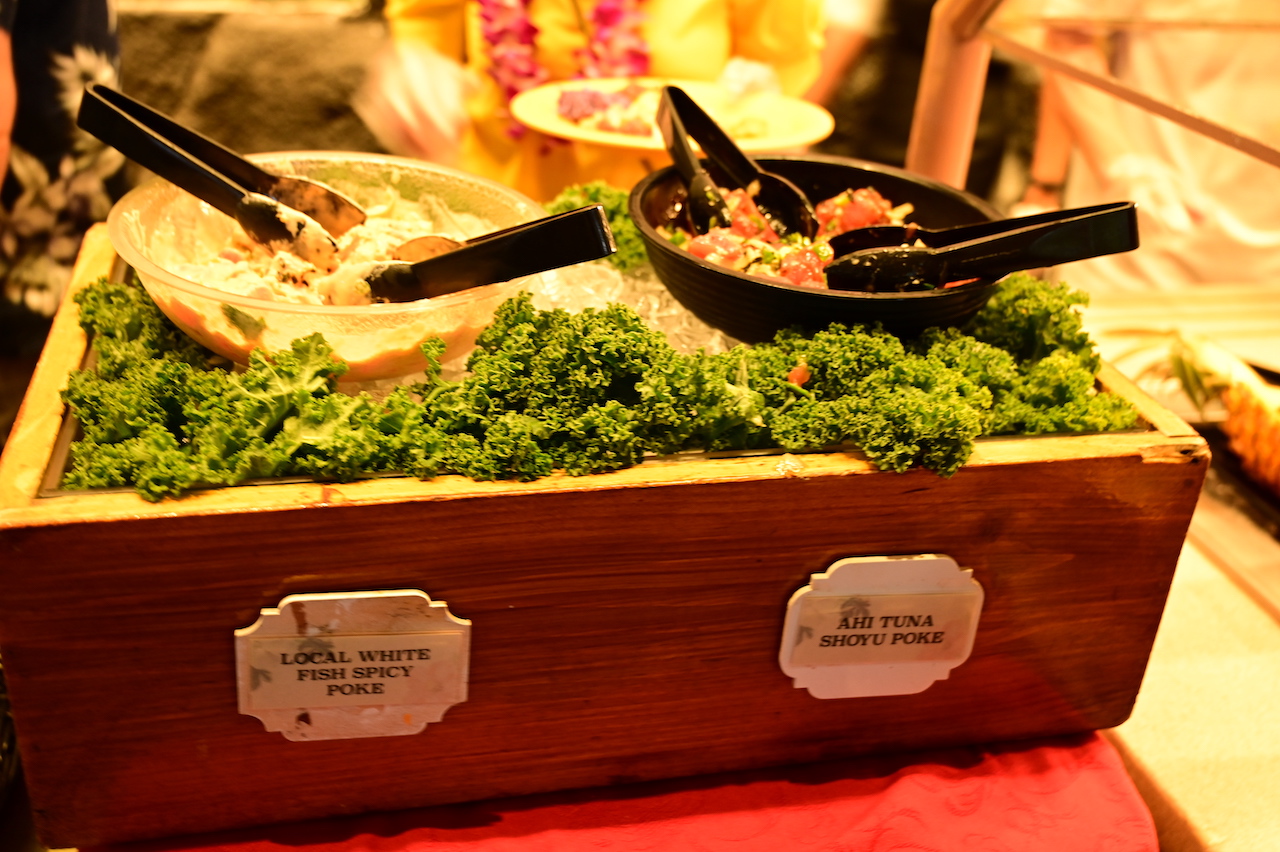
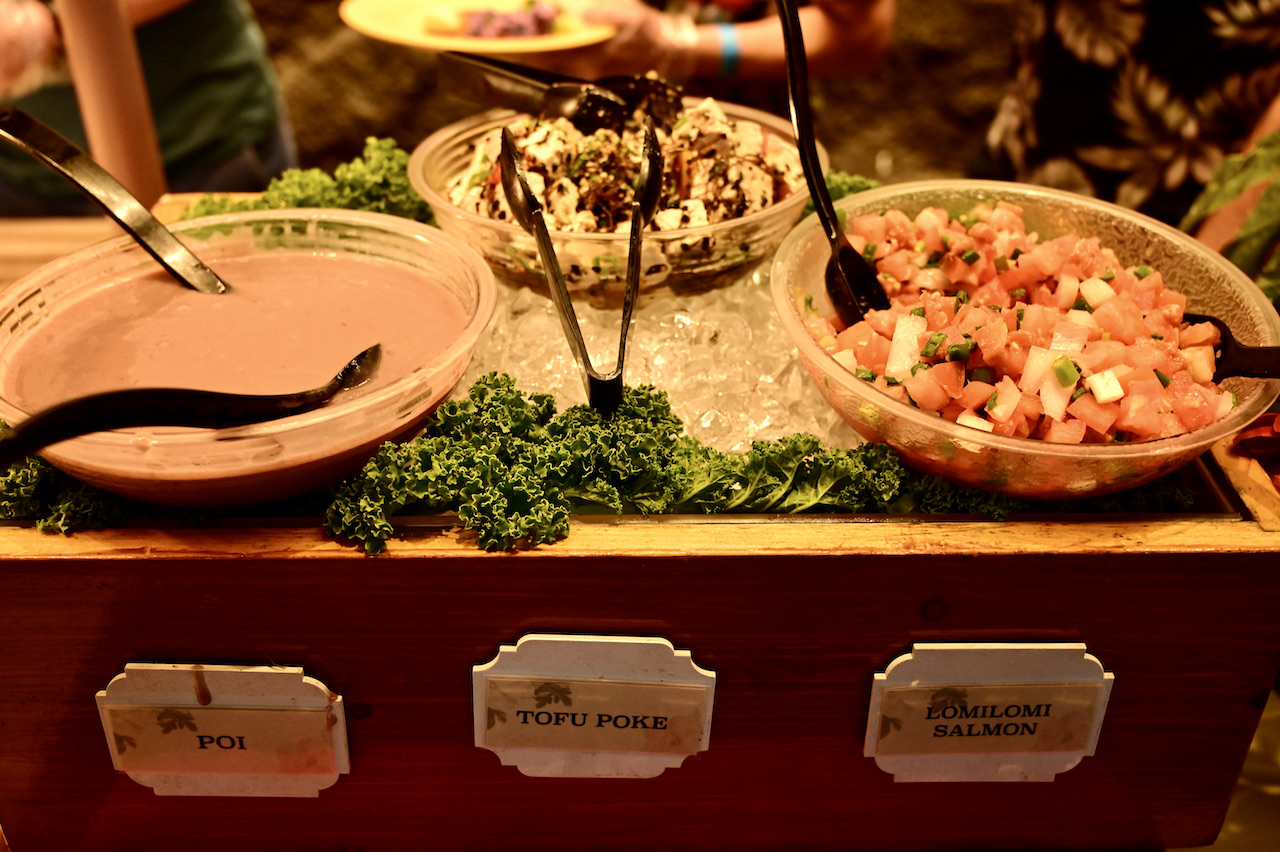

I really love the purple “Taro” Rolls. It goes so well with Kalua Pork.
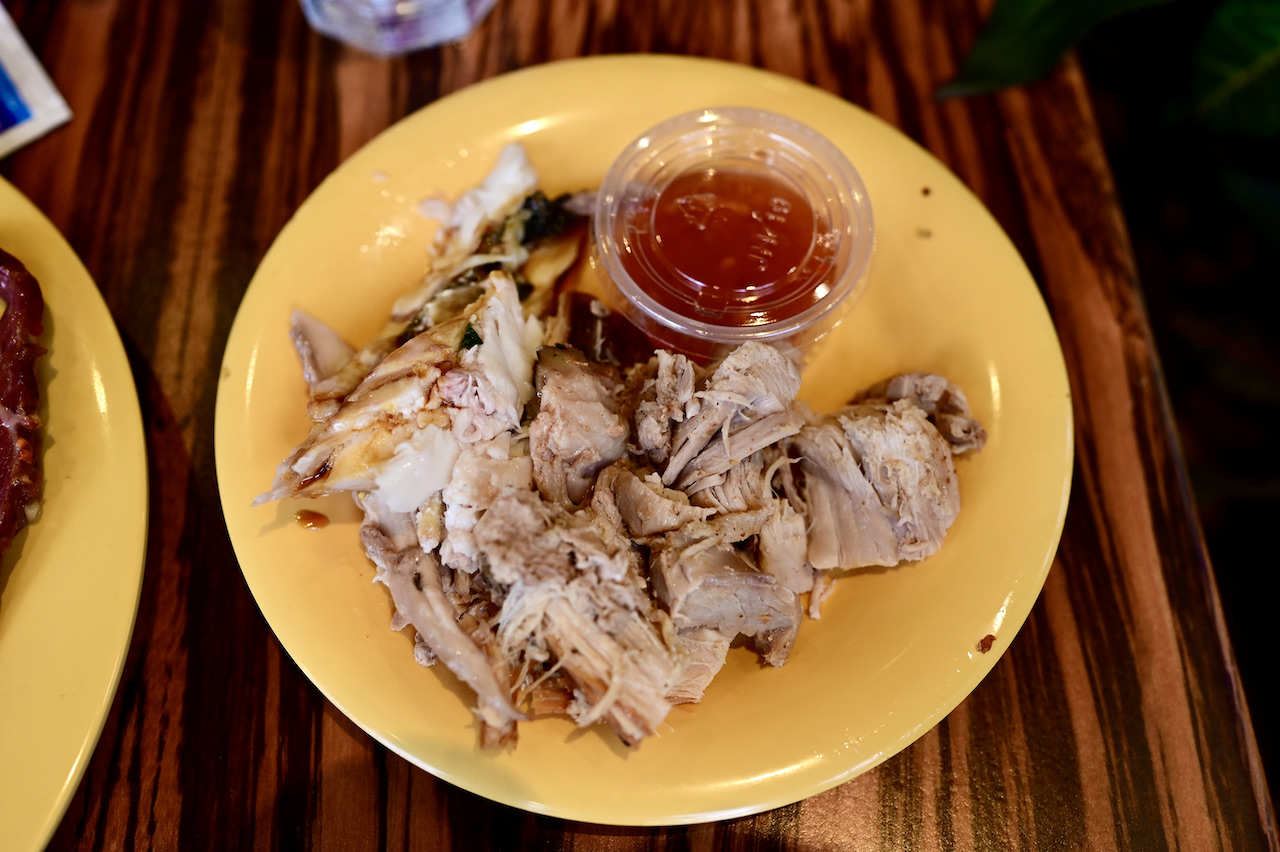
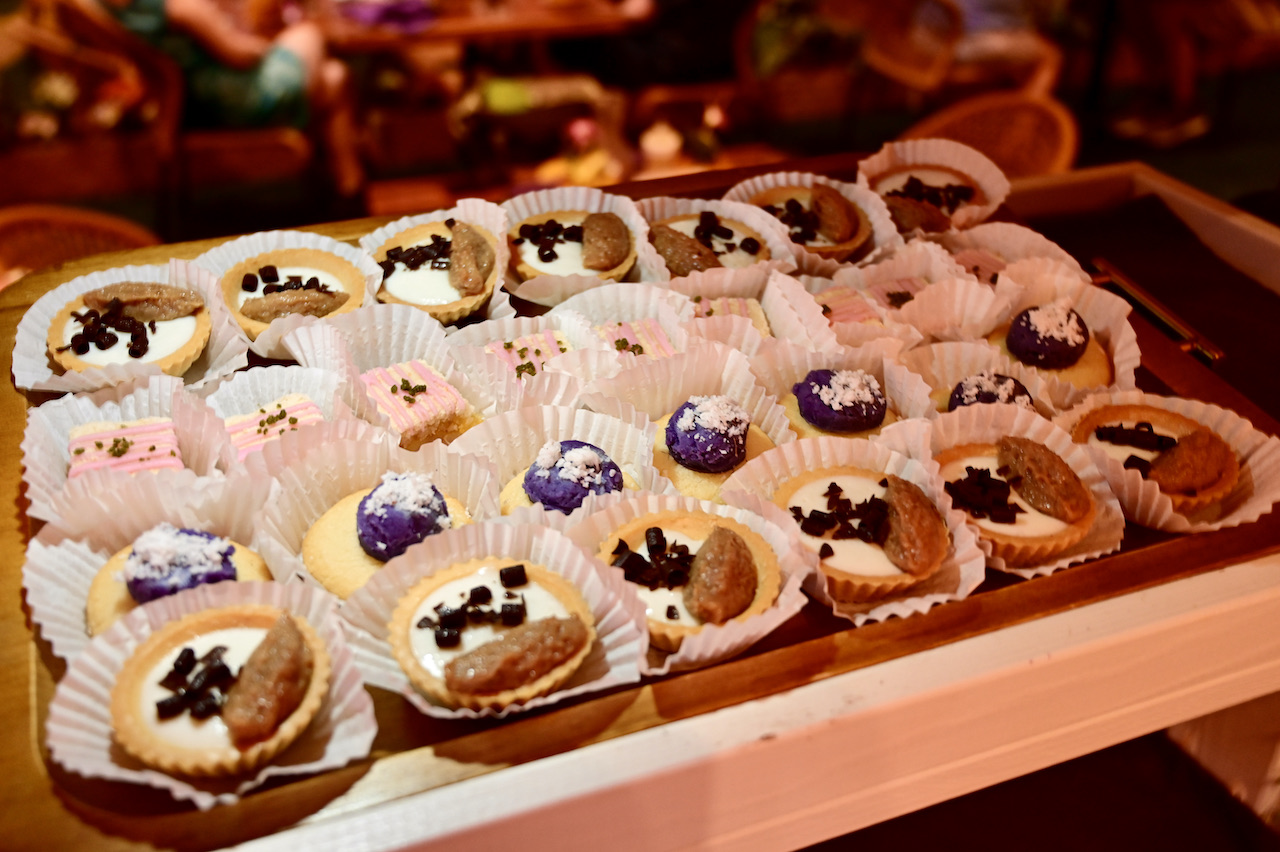
PCC had some major upgrades in their food quality in the last couple of years, and I could clearly see and taste that when I visited in 2021.
I touched on it in my another article below, so please check it out.
▶︎ Better Food – PCC Evolves in Pandemic and It Has to be Recognized
17:58 Let the “Ali’i Luau” Begin
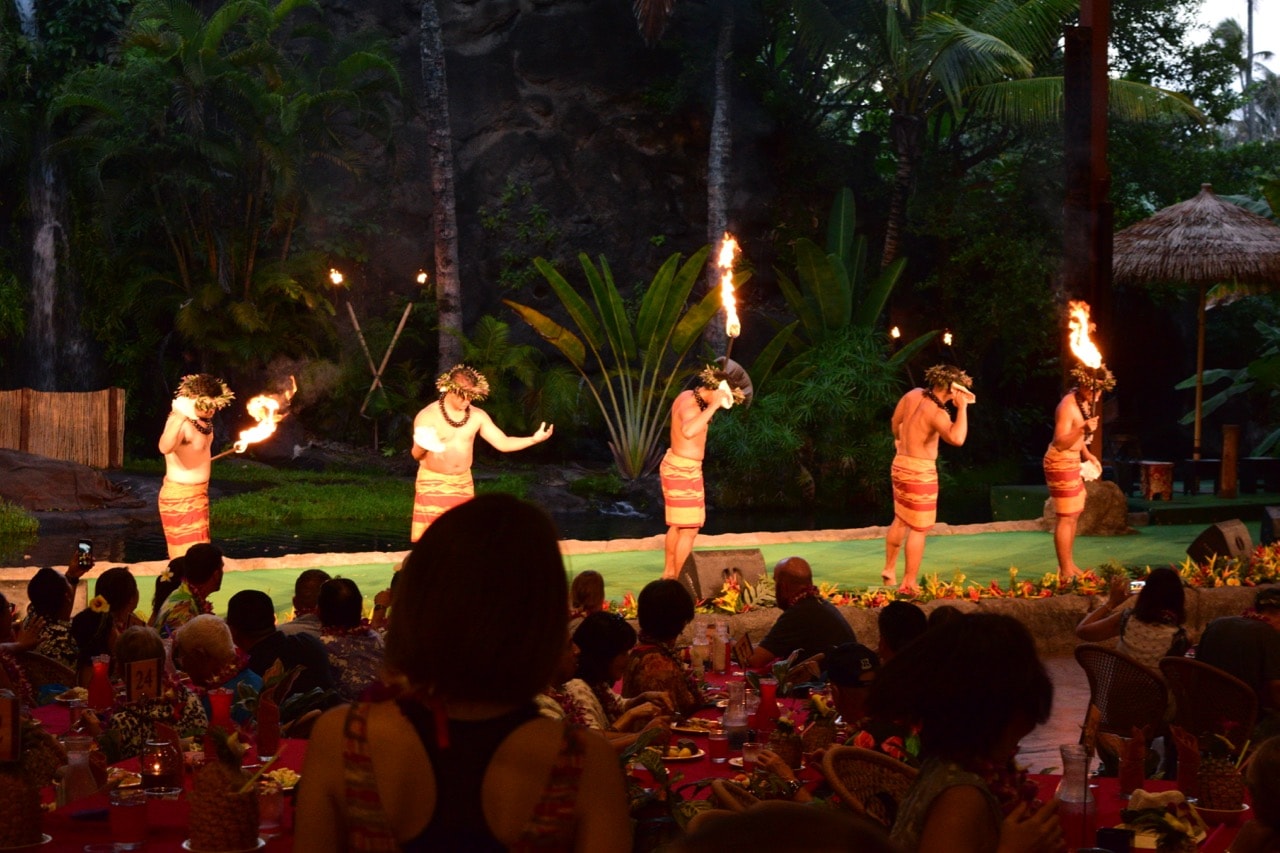
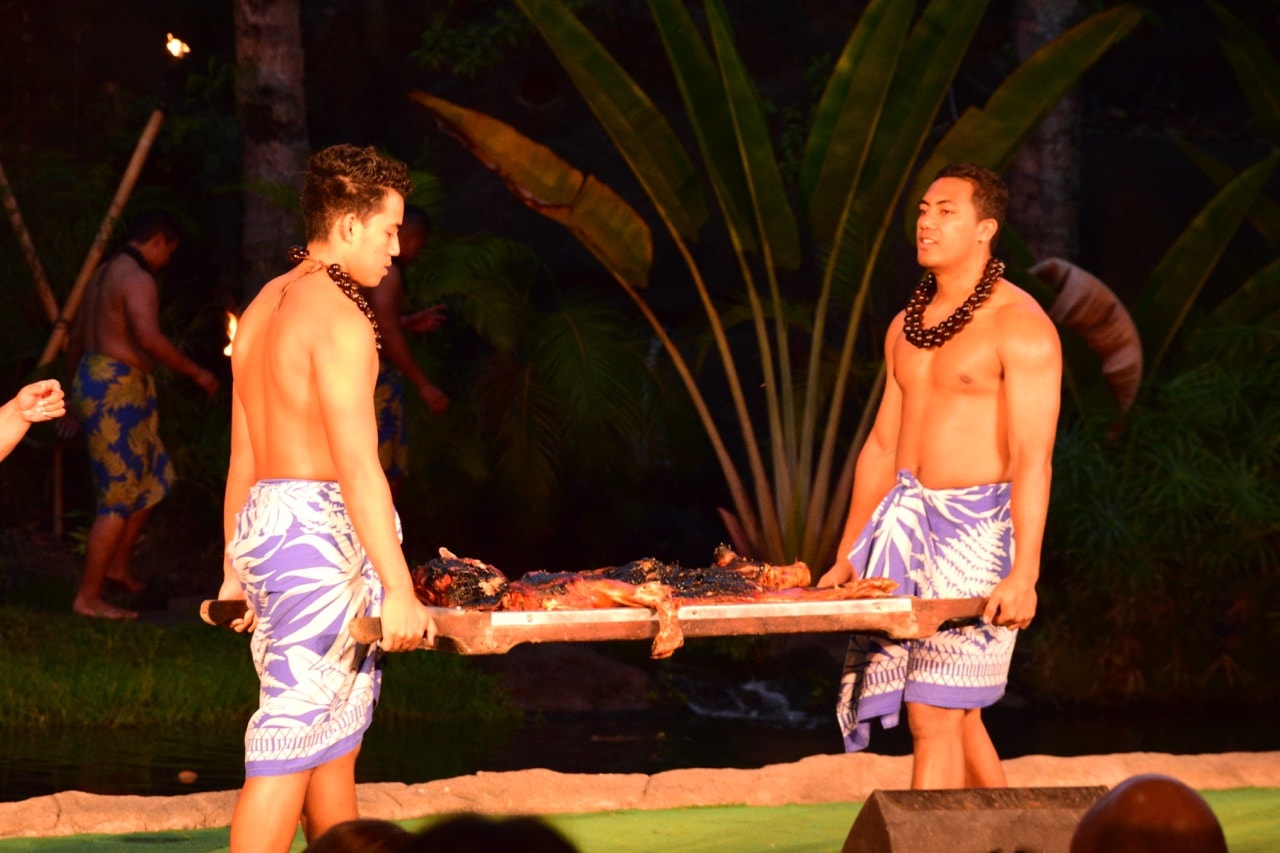
This is the beginning of the Luau show. It starts with a welcome dance, and then the roasted pork (which will be turned into Kalua Pork) taken from Imu (Hawaii style soil pot) is unveiled.
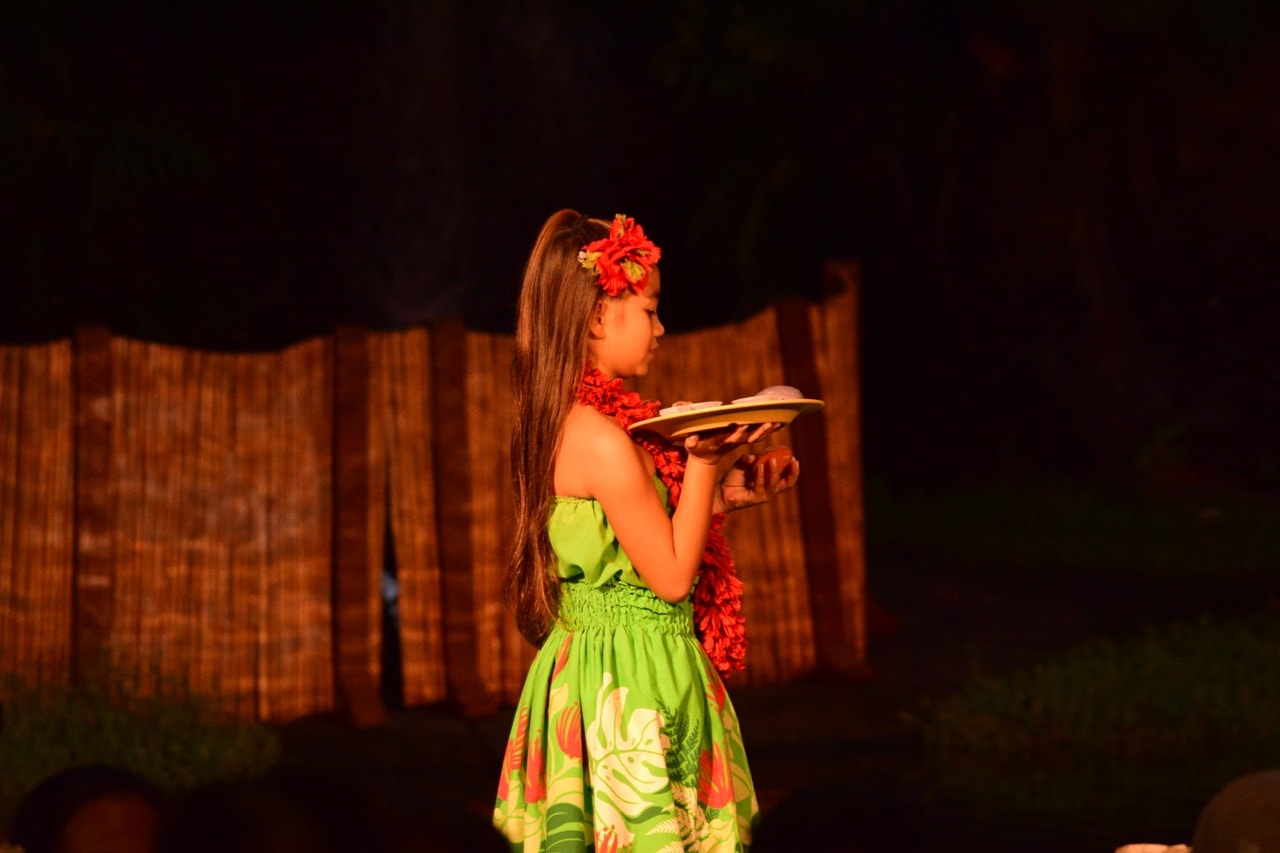
Keiki (children) dancers will help introduce the luau meal menu on stage.
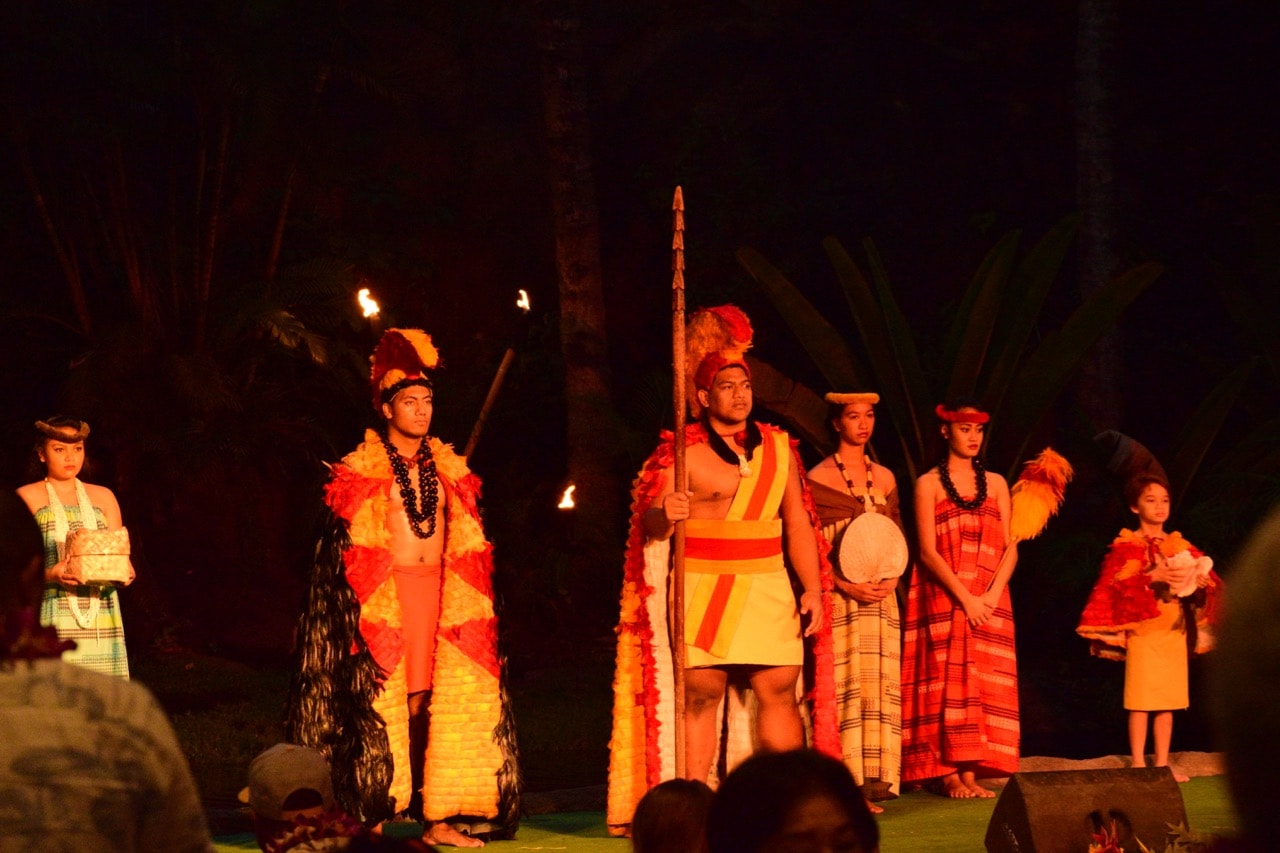
And the Ali’i (chief) of this luau will be introduced and Polynesian dance will begin.
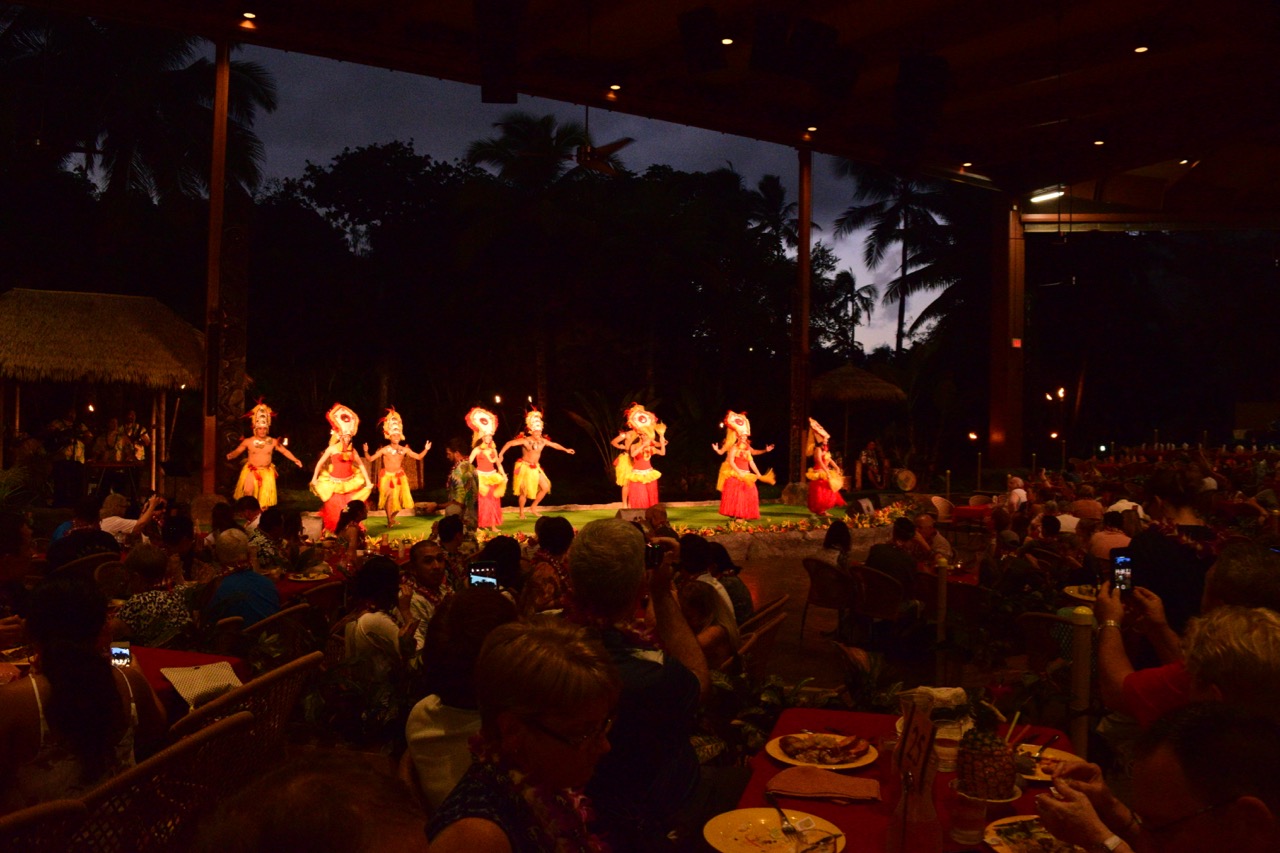
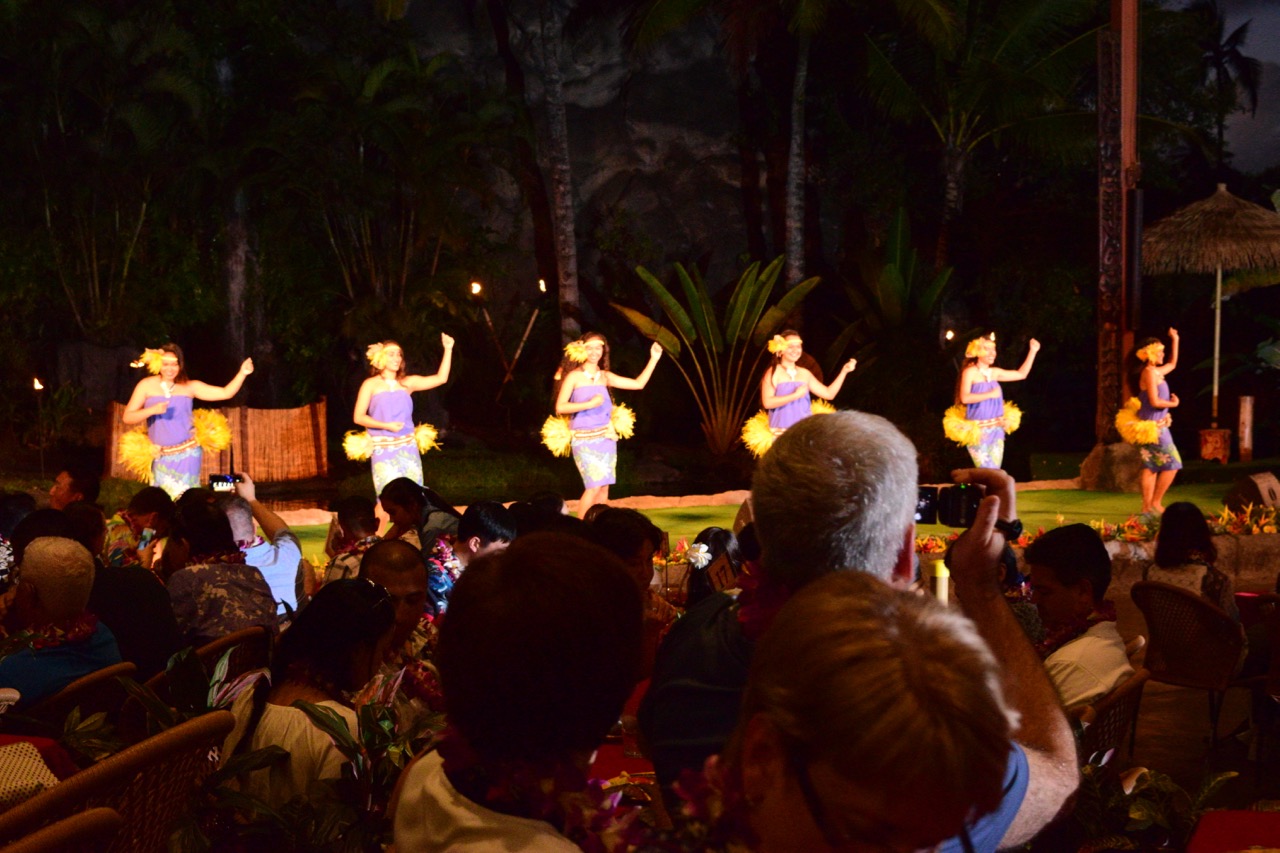

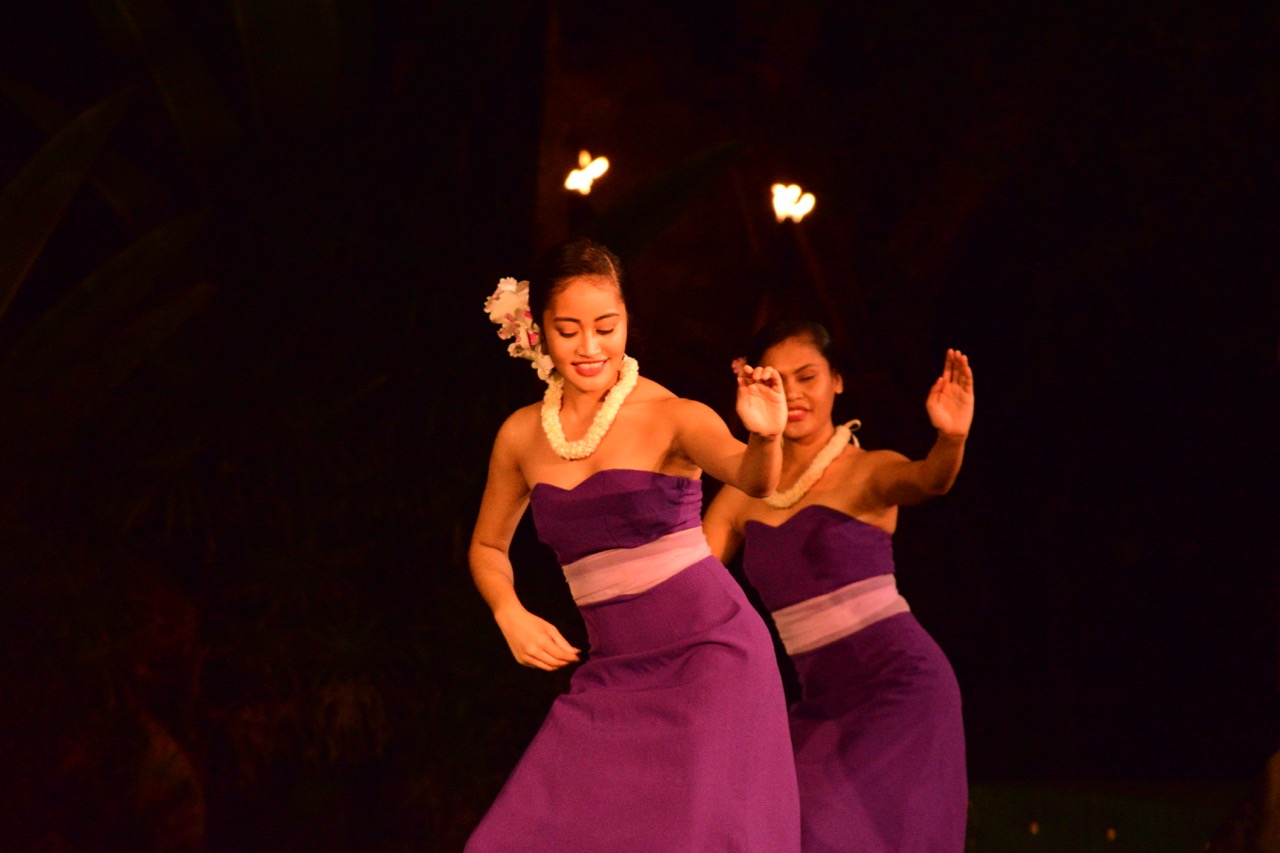
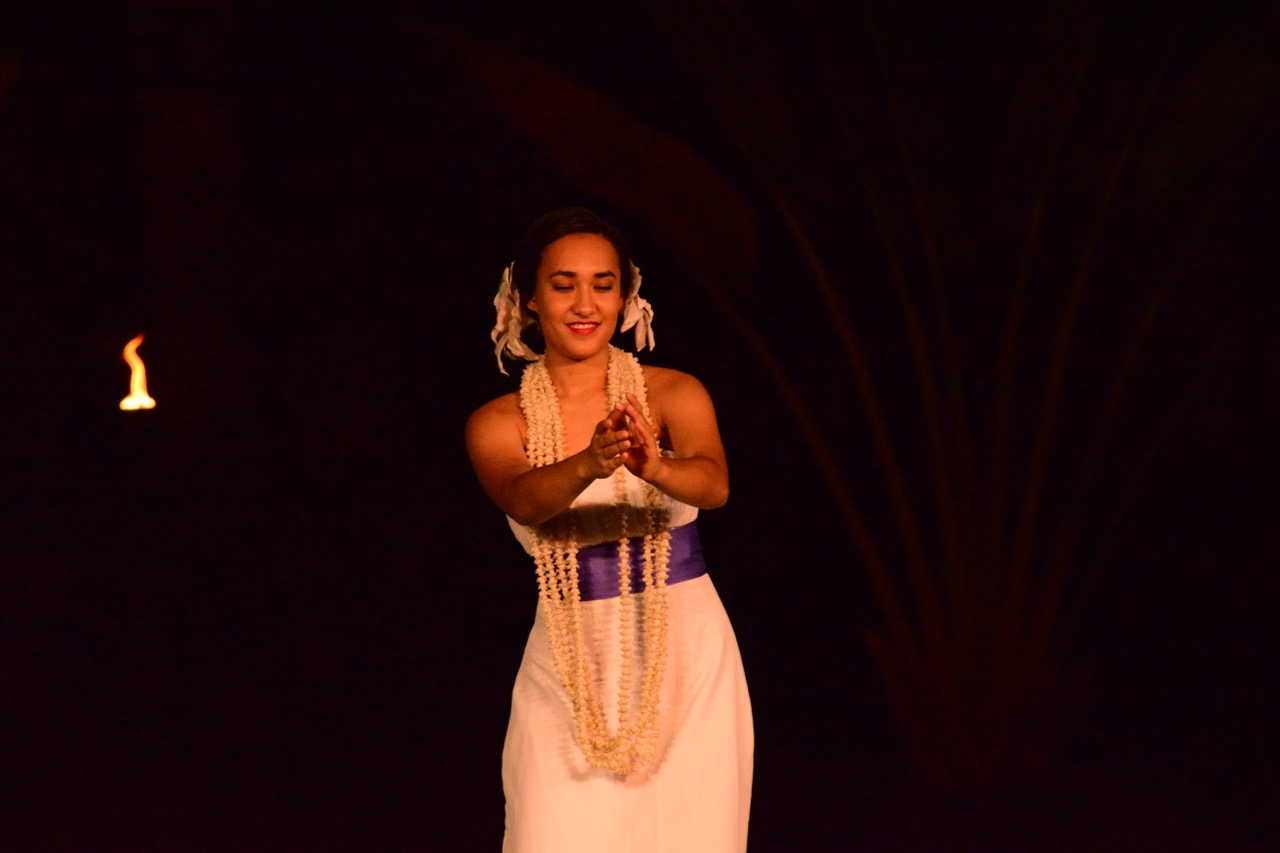
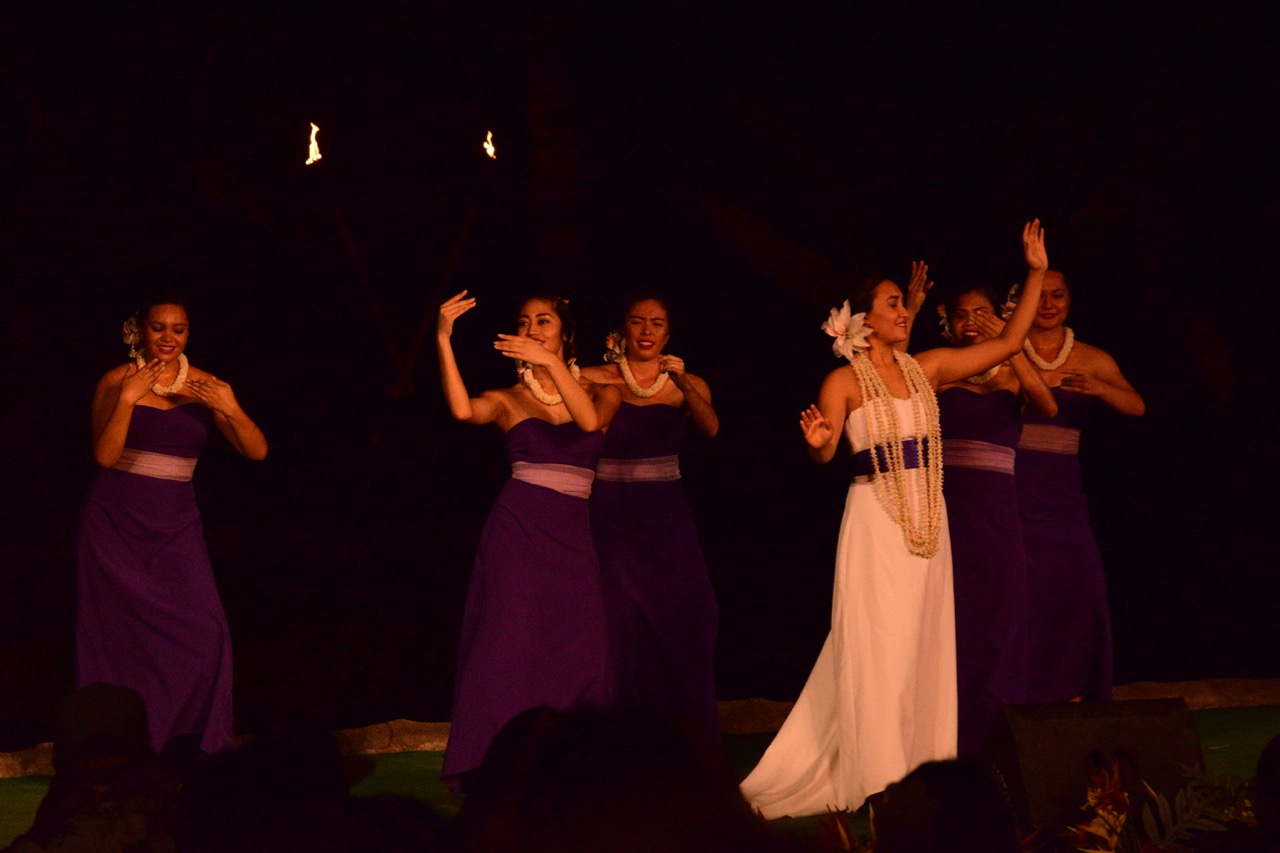

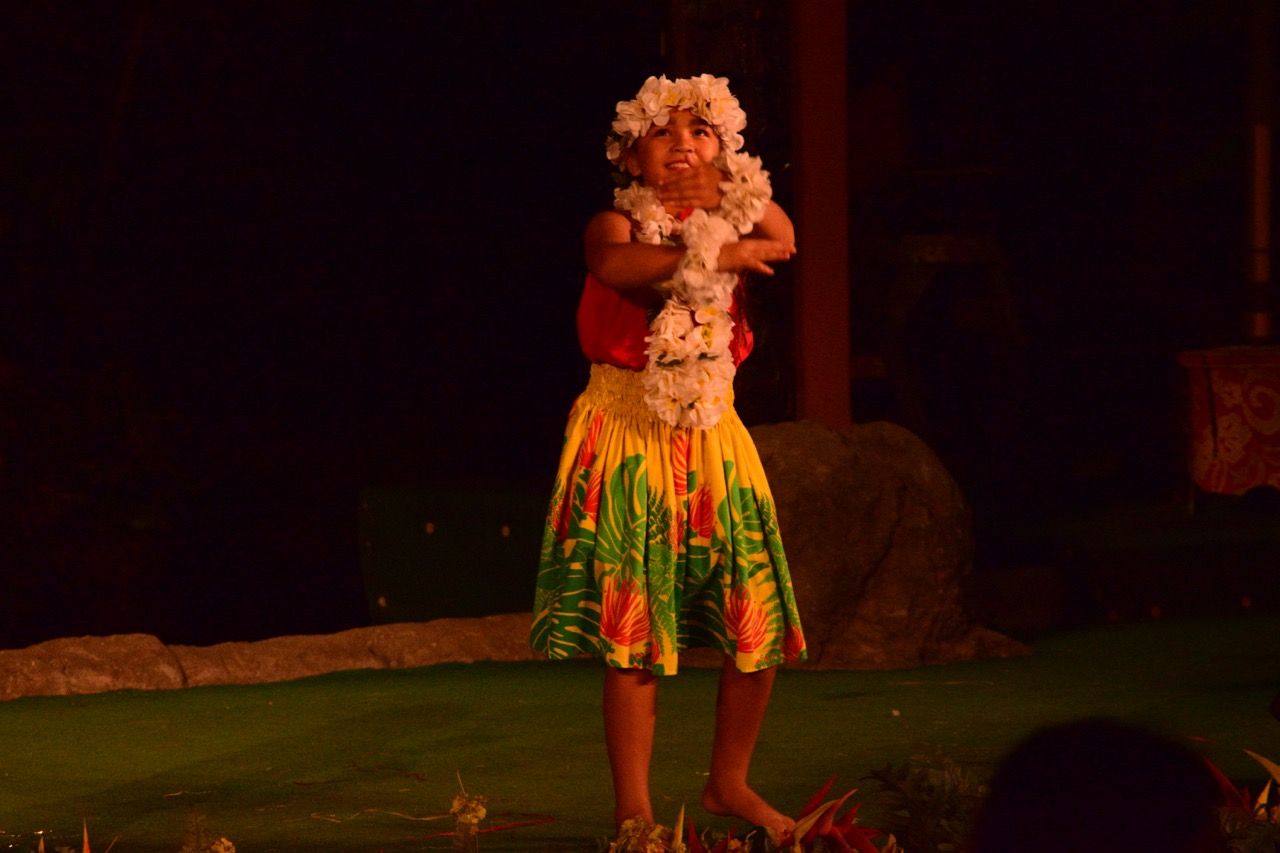
Tahitian dance, Hula Kahiko (Traditional Hula), Hula Auana (Modern Hula), performances by Keiki and others will be performed one after another for about 30 minutes.

Fiji is always a bit different from other countries.
And the show will take a short break.
Everyone at the venue sings birthday songs to the birthday guests of the month, and dance time with honeymoon and anniversary guests on stage, creating a cozy atmosphere.

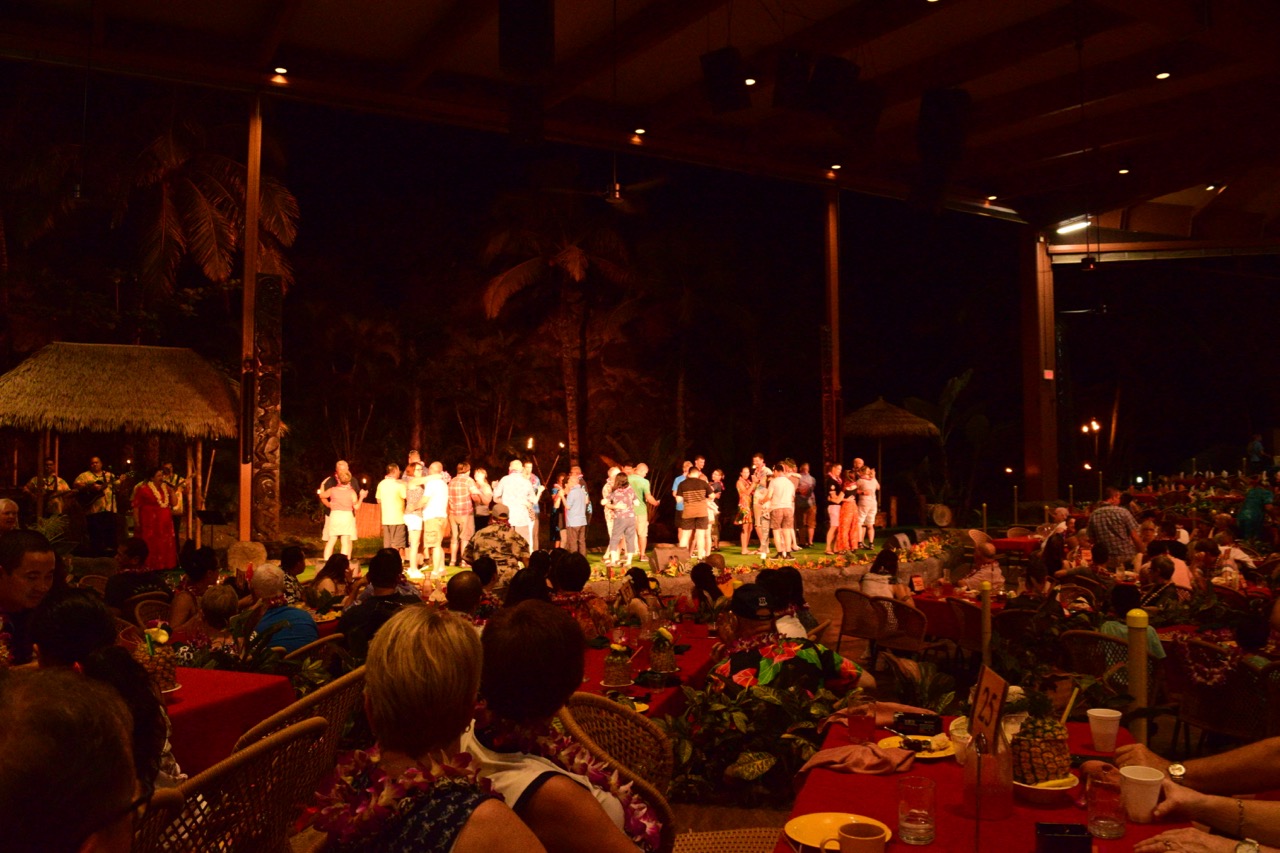
By the way, this time there were two couples who have been married for more than 50 years.
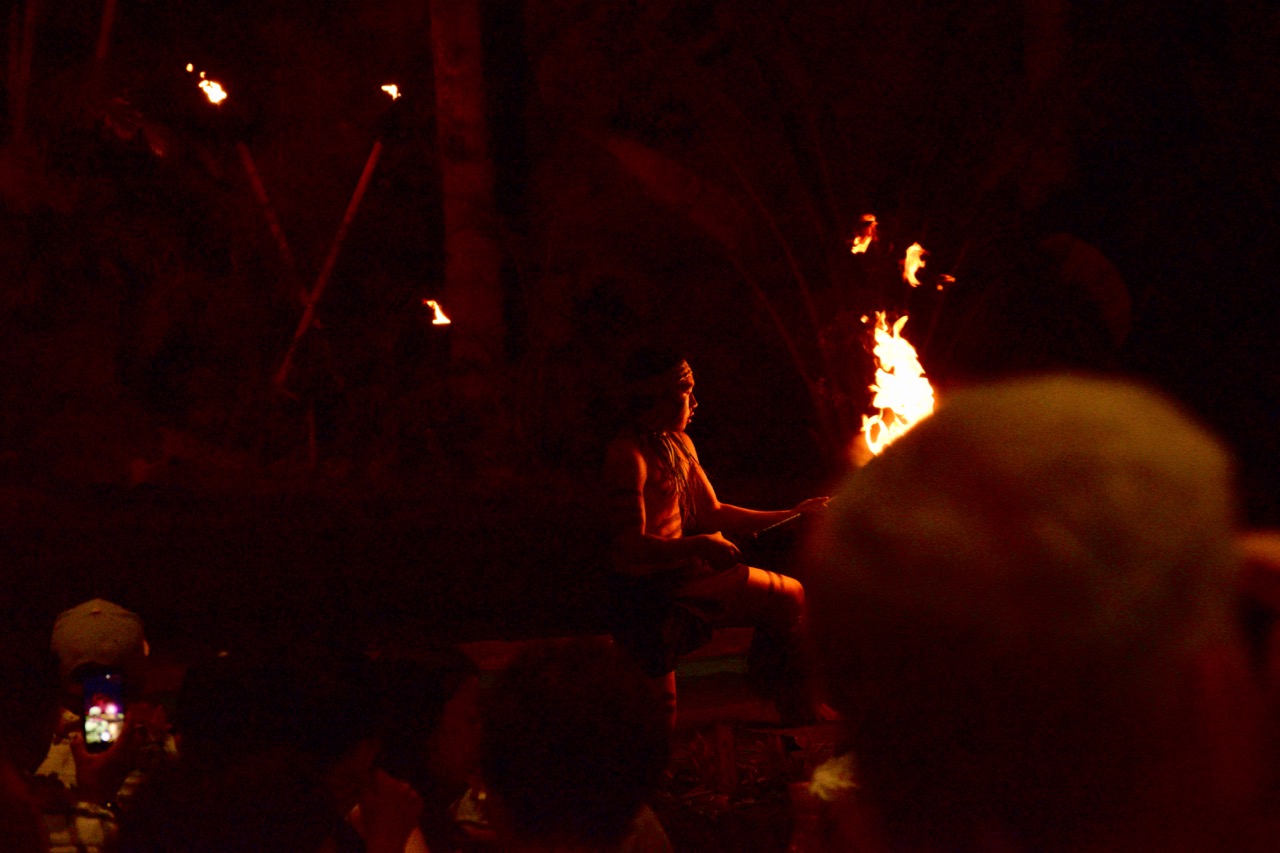
And the show gets even more exciting towards the end.

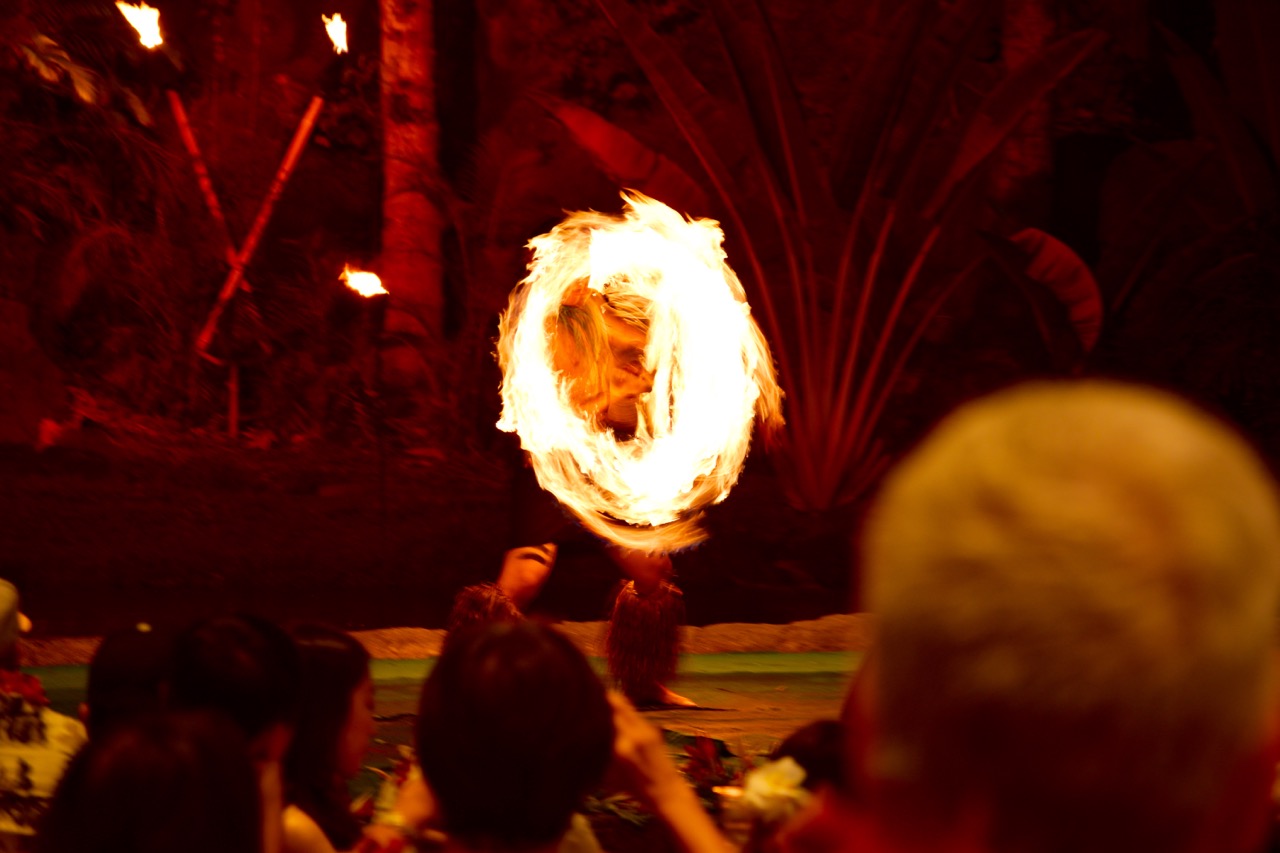
The whole venue will be lively again with the excitement and speed of the Fire Knife Dance!
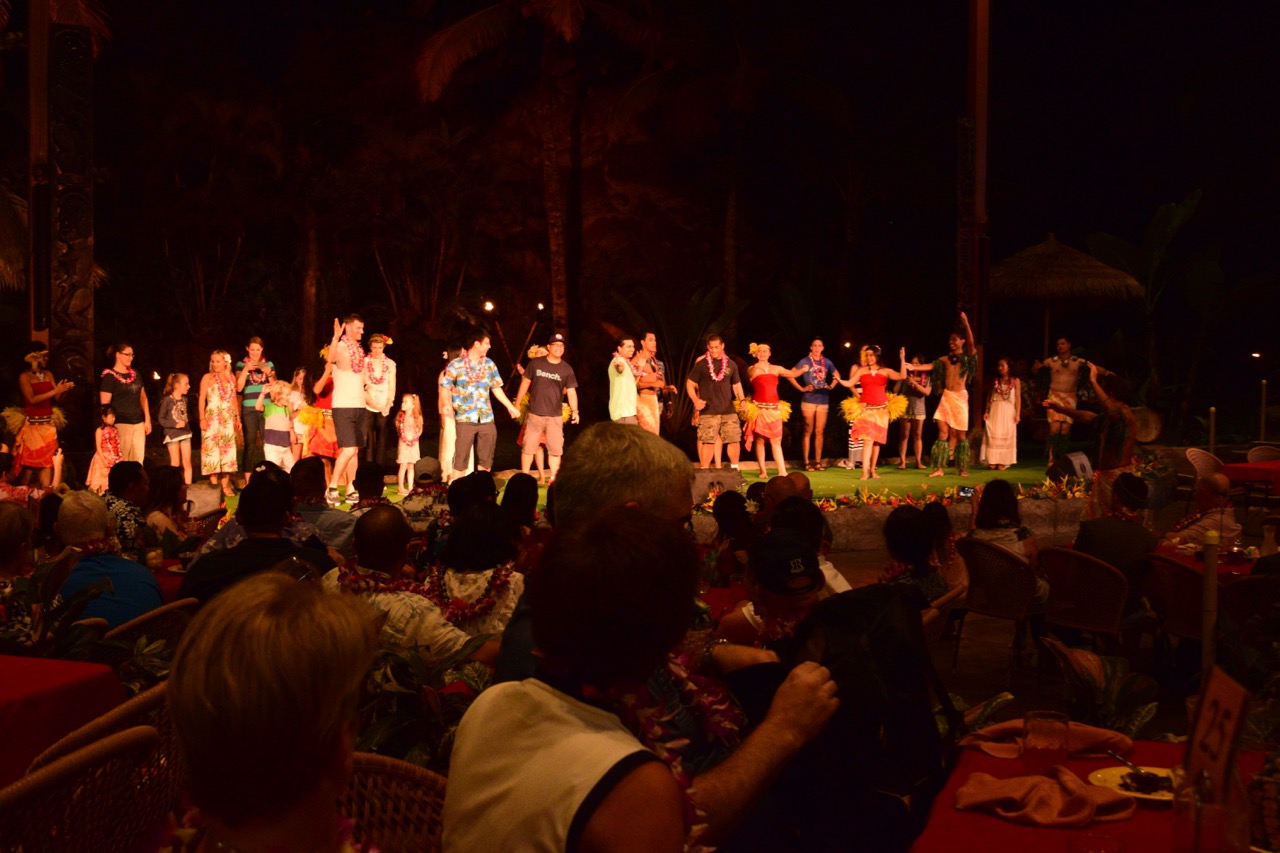
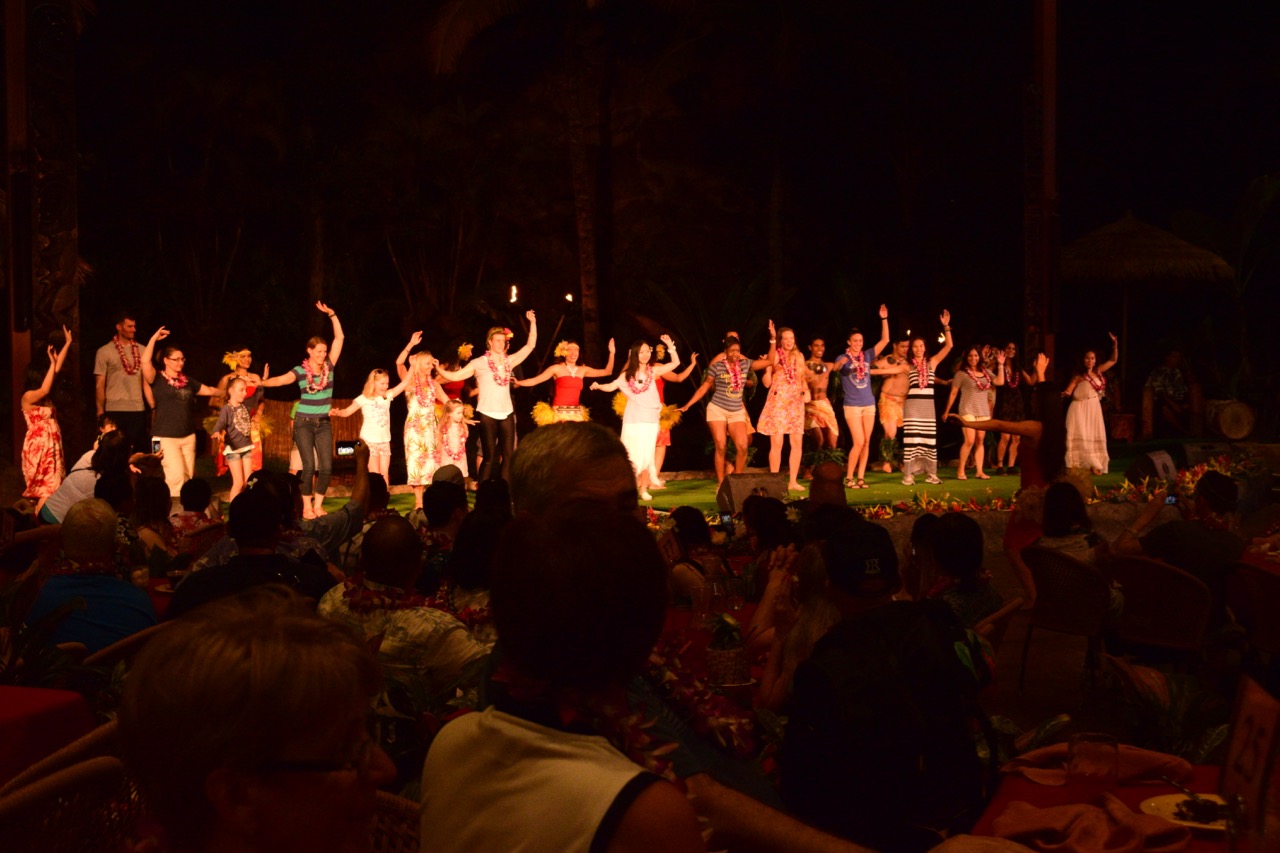
Then, with the excitement, the customers who wanted to dance went up to the stage and challenged to dance according to the teacher’s movements.
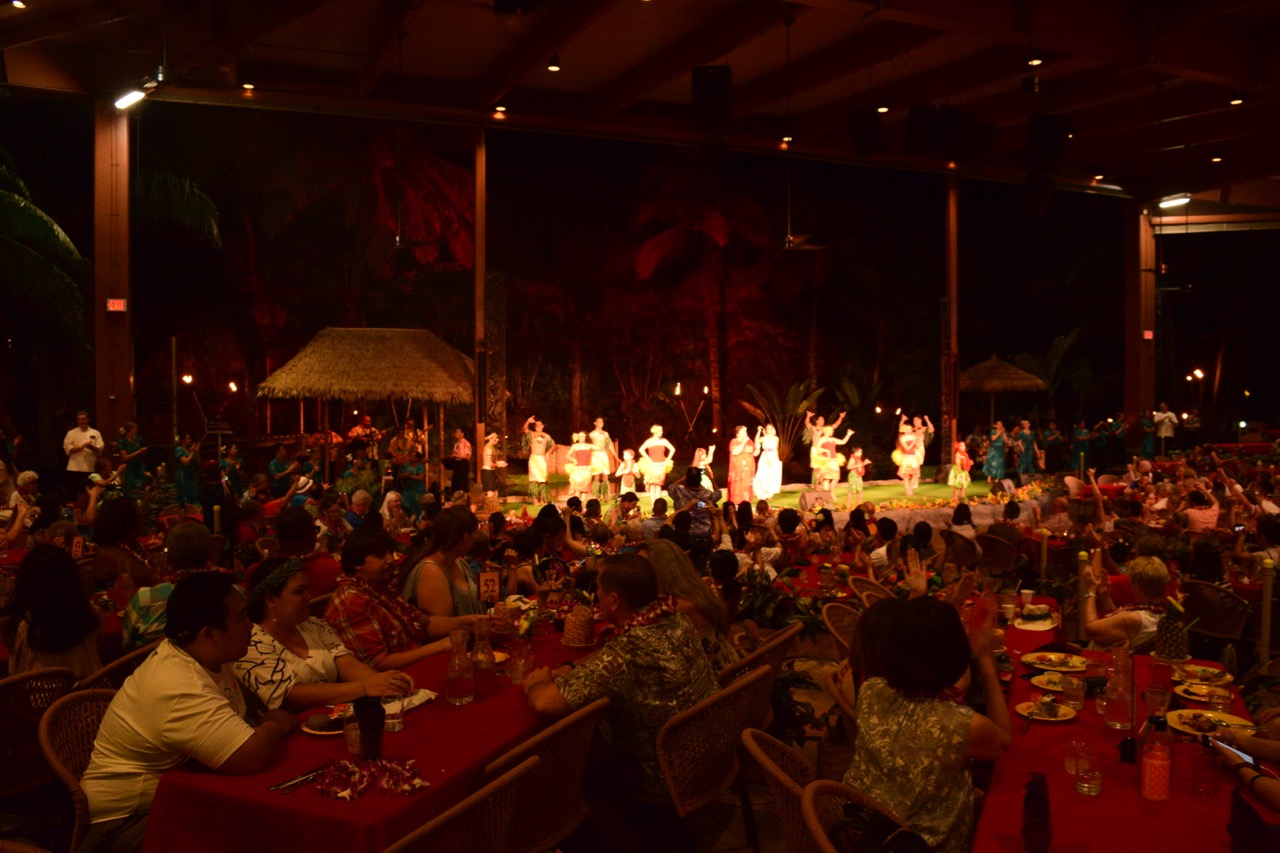
The last is a beautiful performance of Hawaii’s familiar “Aloha Oe”.
“Ali’i Luau” ends with a lingering finish. We surely enjoyed the delicious food and the great performance.
Ali’i Luau is included in the packages below.
You can also learn more about “Ali’i Luau” in this article.
18:50 Ukulele Shop & Gateway Restaurant
My stomach was full and there was only one place left, the night show “HĀ: Breath of Life”, but on the way to the venue Pacific Theater, there was a ukulele shop, so I took a peek.
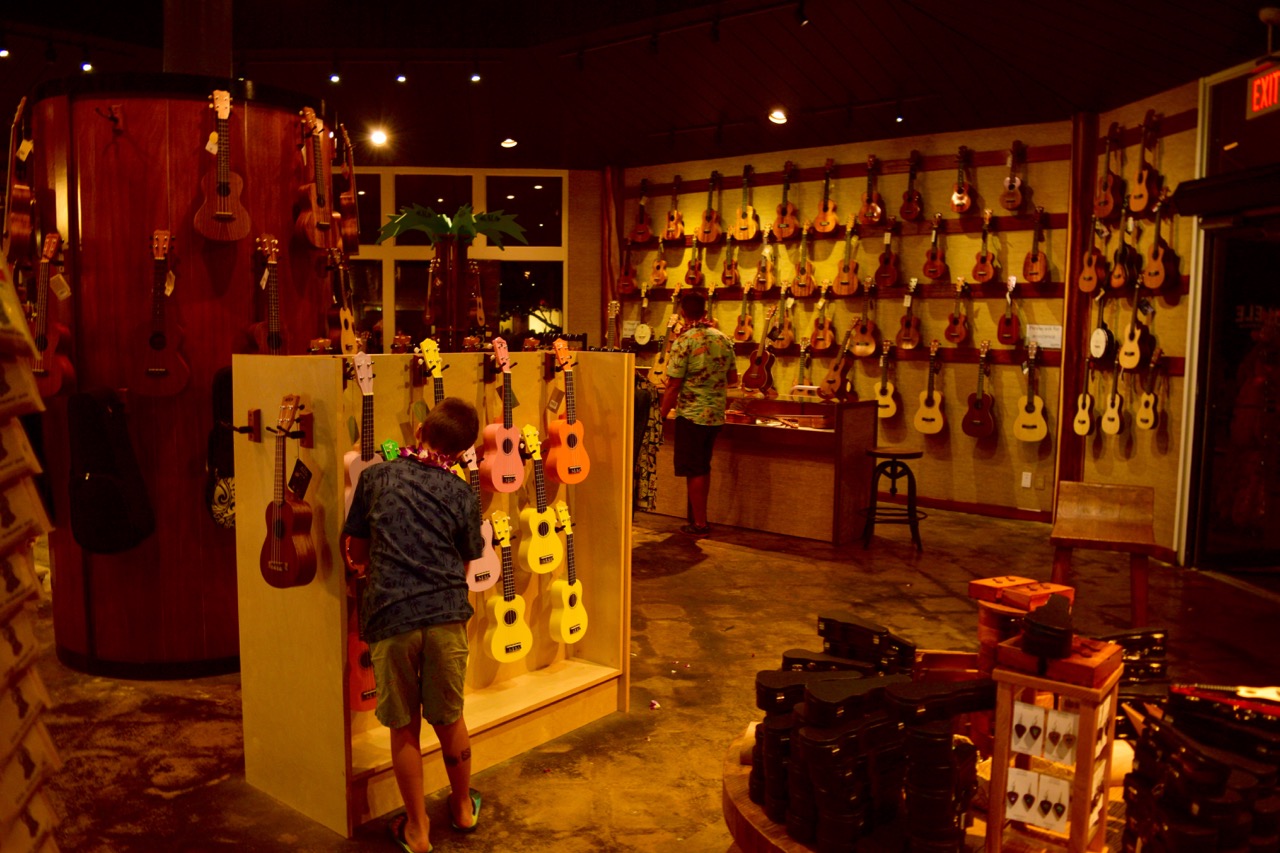


It’s quite interesting to see all the processes of making ukuleles in the shop.
As we left the shop and was passing by the Gateway Restaurant, the doors were open while they were cleaning the building.
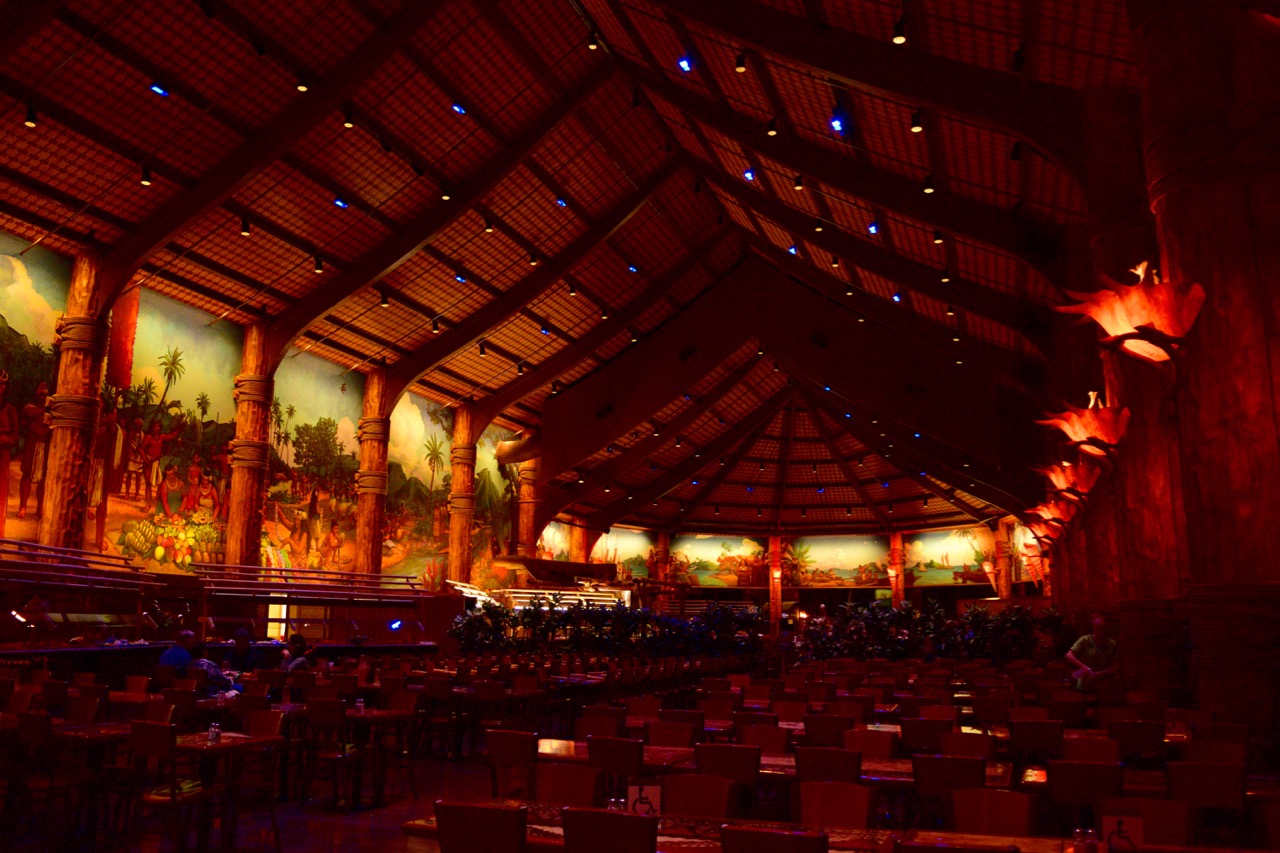
Gateway Buffet is the other dining option inside PCC, where you can also try variety of Hawaiian and island-inspired food, but without dance performance.
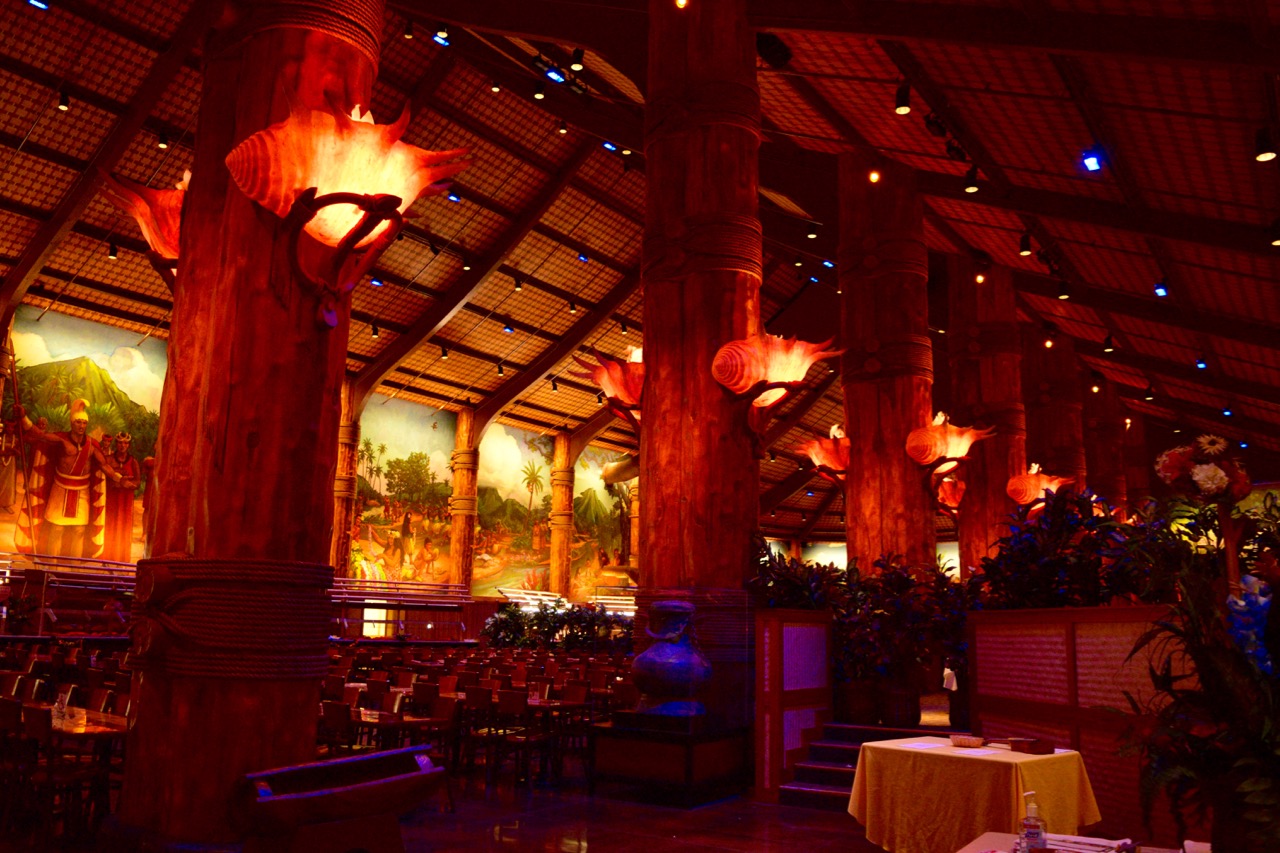
Gateway Restaurant
can seat 1050 guests in its 24,500 square feet of space. All 38 interior columns are fashioned after giant koa logs and the dining tables feature inlaid tapa cloth. Each of the doors are 12 feet tall, six feet wide, weigh 1,100 pounds, and feature ‘ulu or breadfruit and taro motifs. A 500-plus-foot mural (one of the largest in the world) encircles the upper interior, and includes segments of Hawaiian chief’s welcoming guests as well as the Polynesian people represented at the PCC and Hawaii’s multi-ethnic people.

The murals, pillars, and the building itself are all huge and overwhelming. This dining hall happens to be the largest indoor dining facility in Hawaii.
You can learn more about the Gateway Restaurant and how it compares to Ali’i Luau in this article.
19:15 Pacific Theater
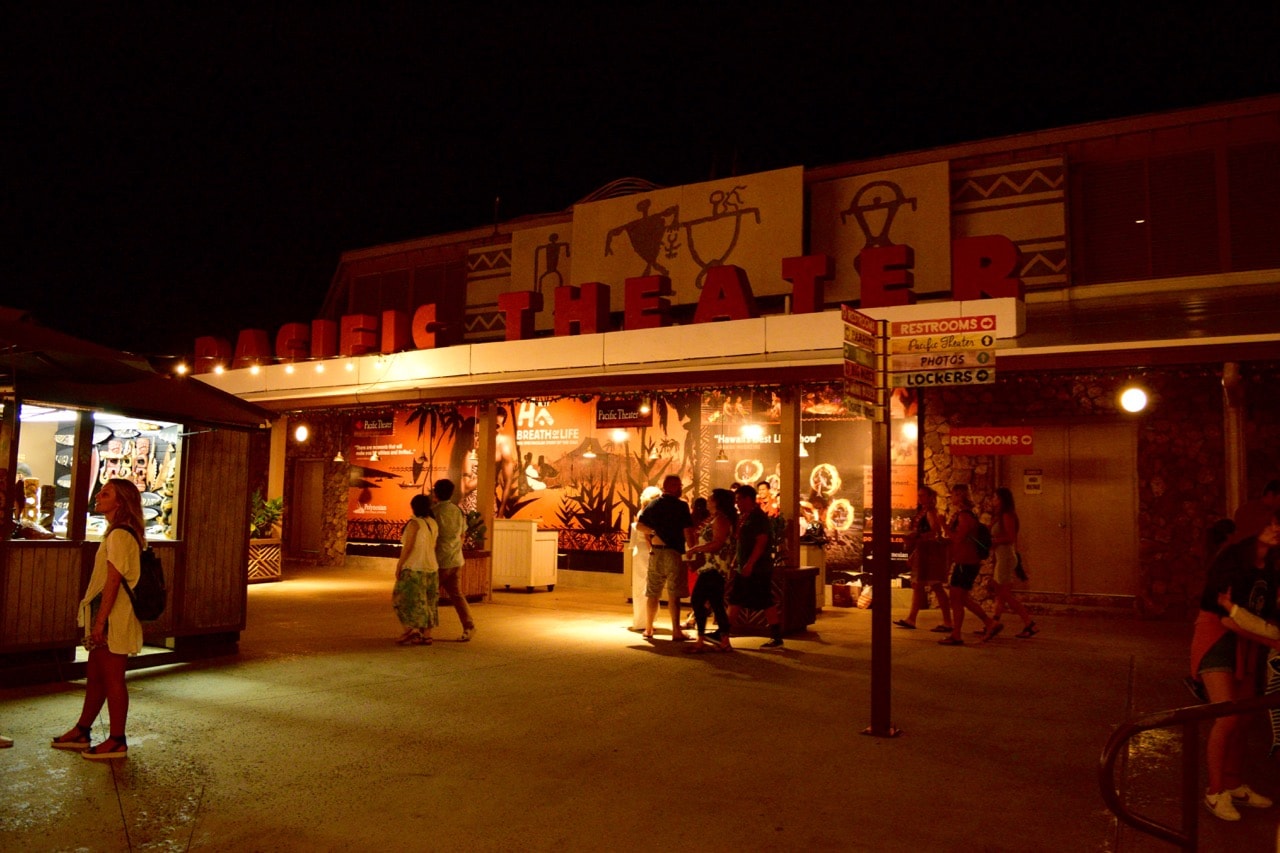
Well, we arrived at the Pacific Theater. The last and biggest event “HĀ: Breath of Life” will be held here today.
Seating starts at 19:00, and the actual start of the night show is at 19:30.

Pacific Theater
The 2,700-seat amphitheater named “Pacific Theater” features lush tropical landscaping, waterfalls, terraced seating, a concrete floor, wide stage, a spectacular mountain backdrop and even volcanoes. There are two main entries to the Pacific Theater area, and six portals into the theater, which is handicapped accessible.
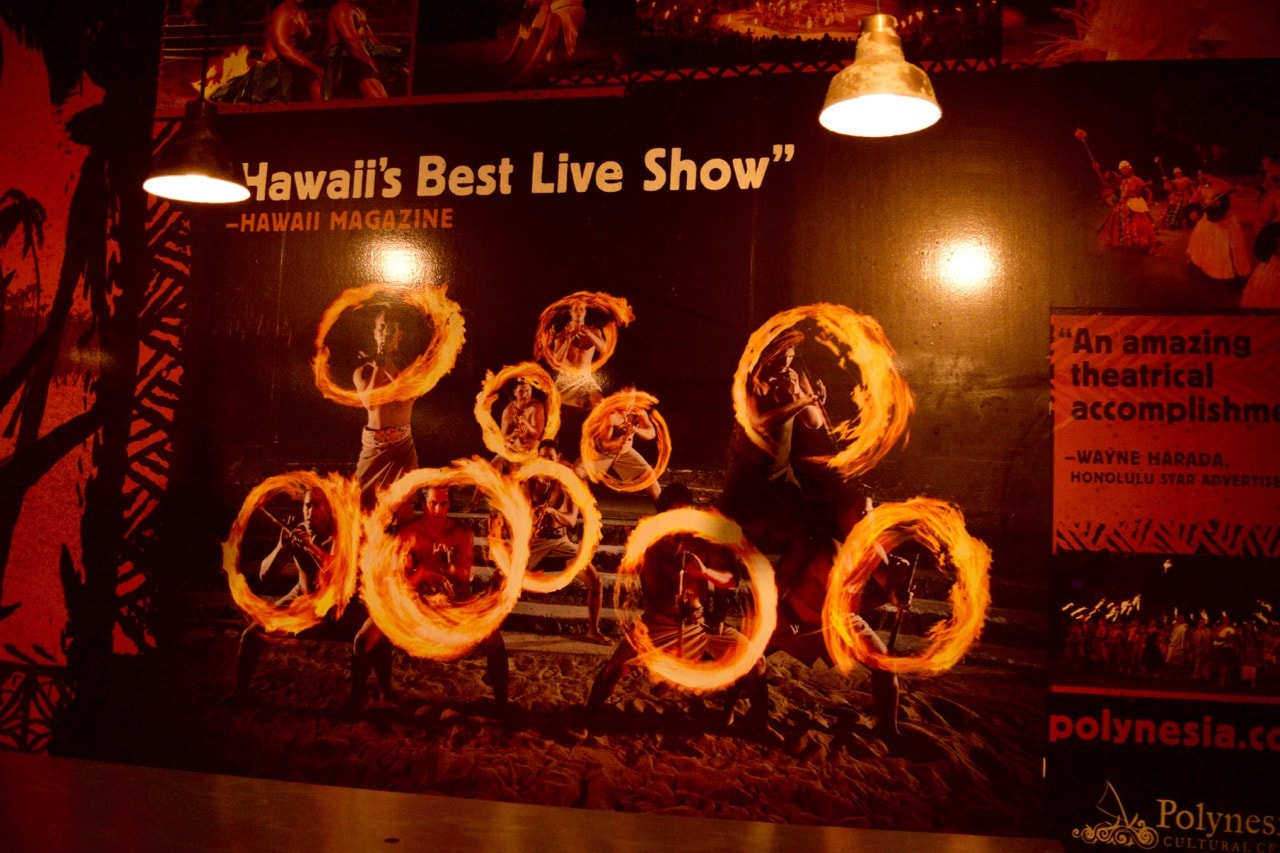
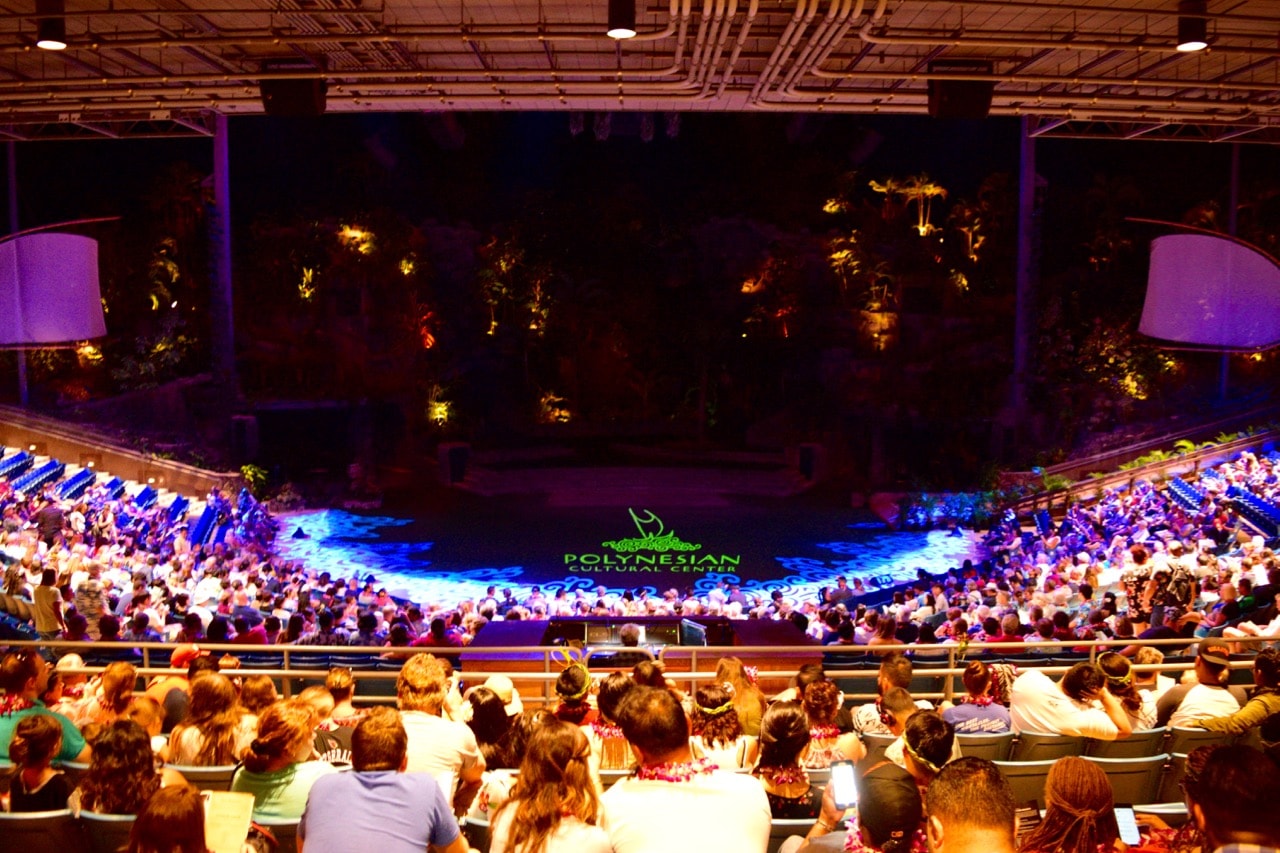
Although not really visible in the picture, they are also quite elaborate on the set on stage. The stage side has no roof and looks like a real forest and stone cave.
For your reference, the picture above was taken from the “Silver” level seating in the theater.
HA: Breath of Life Seating Chart
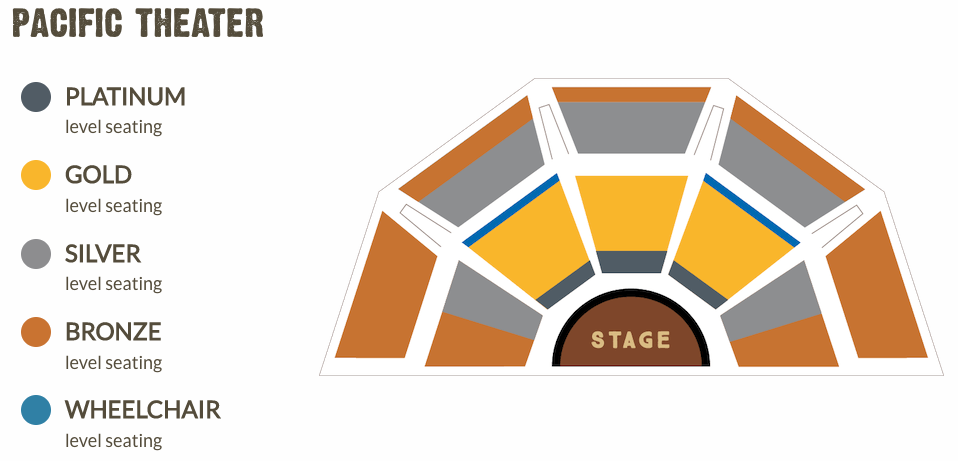
| Seat Level | Package | Adult | Child (4-11) |
|---|---|---|---|
| Platinum | Super Ambassador Luau | $242.95 | $194.36 |
| Gold | Ali’i Luau | $184.95 | $147.96 |
| Silver | Gateway Buffet | $139.95 | $111.96 |
| Bronze | Islands of Polynesia & HA: Breath of Life | $119.95 | $95.96 |
Your seat will change depending on your tour package, so please check it as you decide your package.
19:30 Night Show “HĀ: Breath of Life” Starts


The show, which is centered around the story of the boy “Mana” growing through various experiences, is full of power with a cast of more than 100 people.
There is also a scene that even used the audience seats, so you can feel the breathing and enthusiasm of the cast up close.
There was a fire knife dance at the Luau show, but at the night show it scaled up significantly, with several dancers performing all at once.

The music and dance towards the ending was particularly moving, and the audience sent a well-deserved standing ovation at the end.
PCC made this Hawaii trip even more memorable.
20:50 Call a Day and Get on the Bus
Well, after a long and intense day at the Polynesian Cultural Center, we are returning to the hotel by the mini coach again.
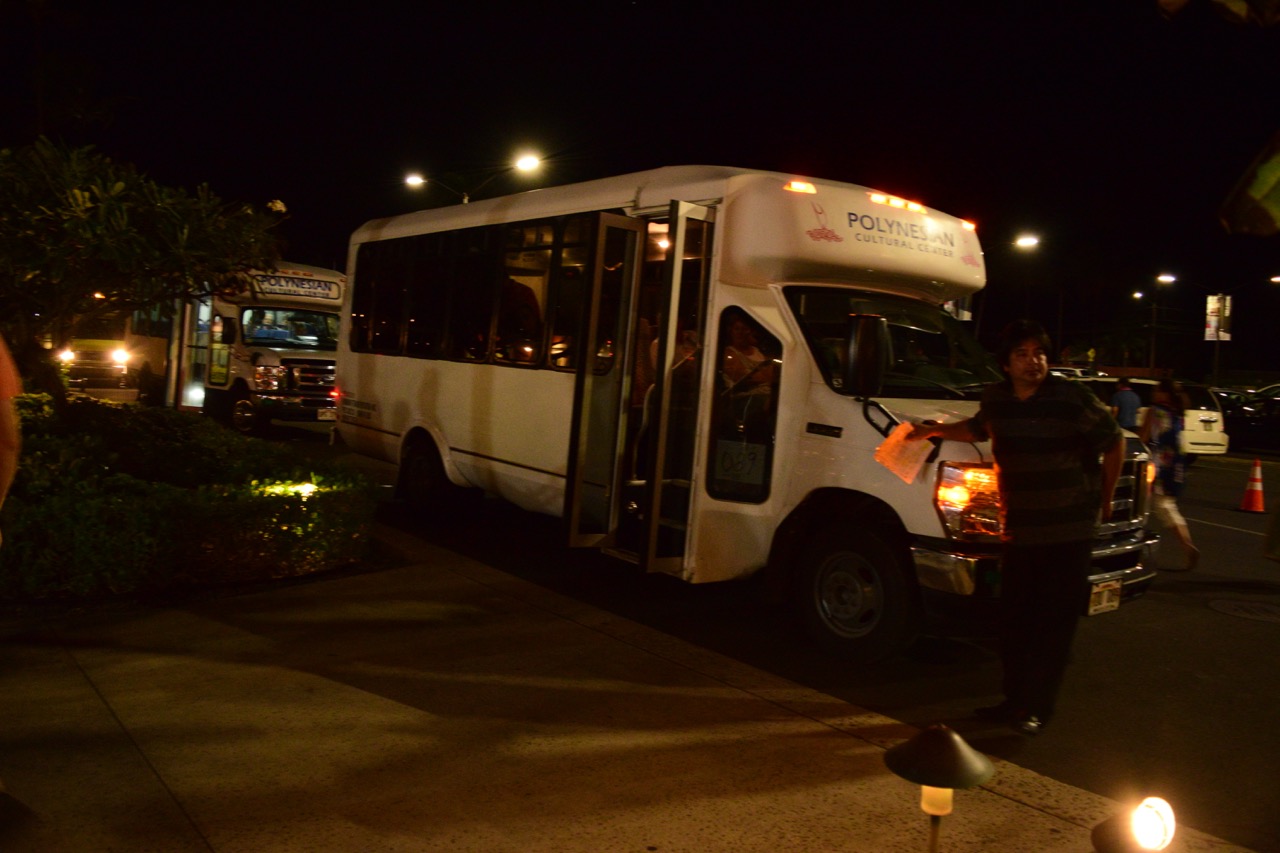
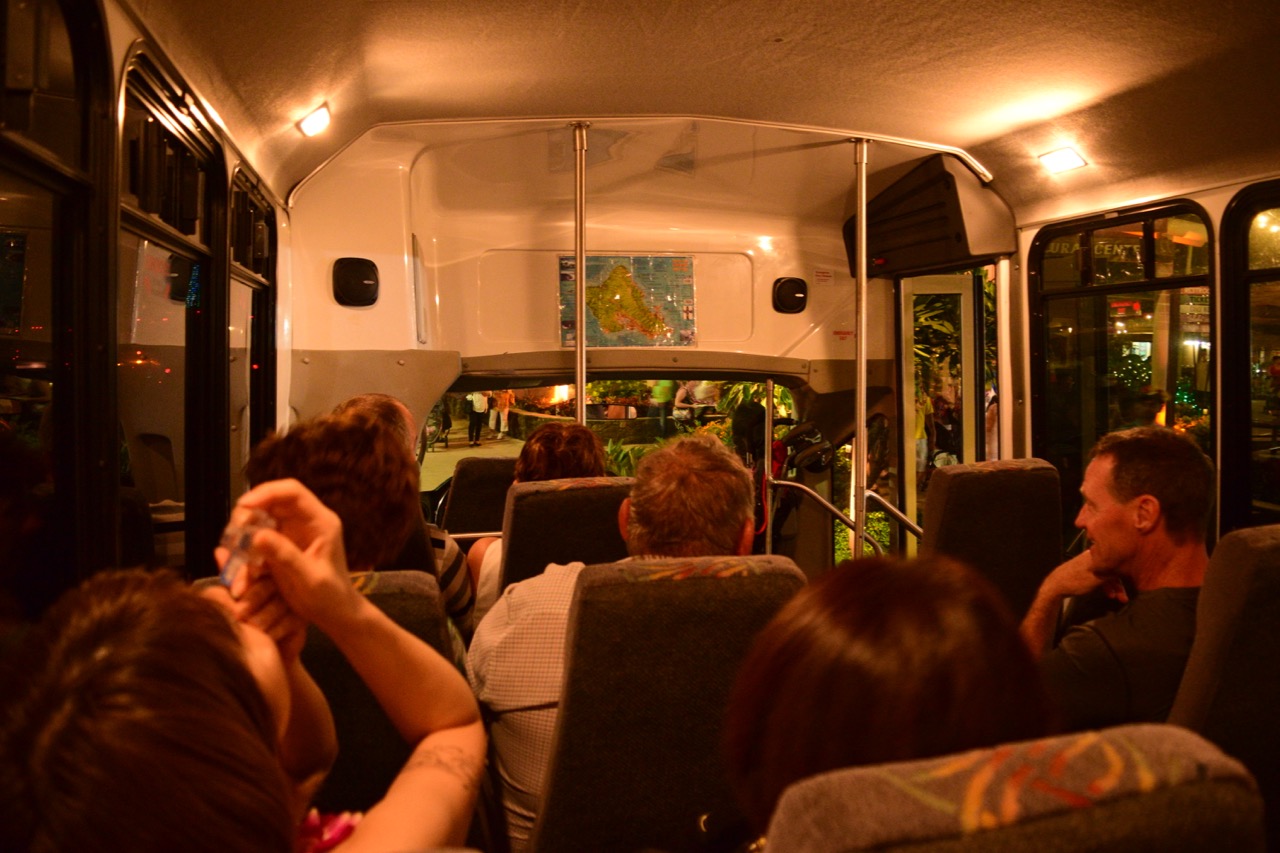
Everyone enjoyed the afterglow and memories for a while, but after a while they fell asleep.
22:17 Arrive at the Hotel

How was it? I think this article alone was a lot.
Wrap-up

It took about 12 hours from the departure from the hotel to the arrival at the hotel, but as I went around the center, I thought, “It’s impossible to see everything in one day.”
There are many more things to see, such as hula lessons outside Hawaiian Village, ukulele lessons at the mission house, canoe tours in the lagoon, and Aotearoa’s poi experience.
I haven’t eaten the crepes at Hukilau Marketplace either.
The “culture” that has been passed down through the local people is different from the multinational and lively atmosphere of Waikiki and the untouched nature of Hawaii.
Throughout my experience at PCC, I received Polynesian “hospitality” and aloha all day long.
If you are planning to visit Oahu, I encourage you to visit PCC once to see new aspects of Hawaii.
- Official Site: Polynesian Cultural Center
- Price and Packages: Ticket Options | Polynesian Cultural Center
| Package | Adult | Child (4-11) |
|---|---|---|
| Super Ambassador Luau | $242.95 | $194.36 |
| Ali’i Luau | $184.95 | $147.96 |
| Gateway Buffet | $139.95 | $111.96 |
| Islands of Polynesia & HA: Breath of Life | $119.95 | $95.96 |